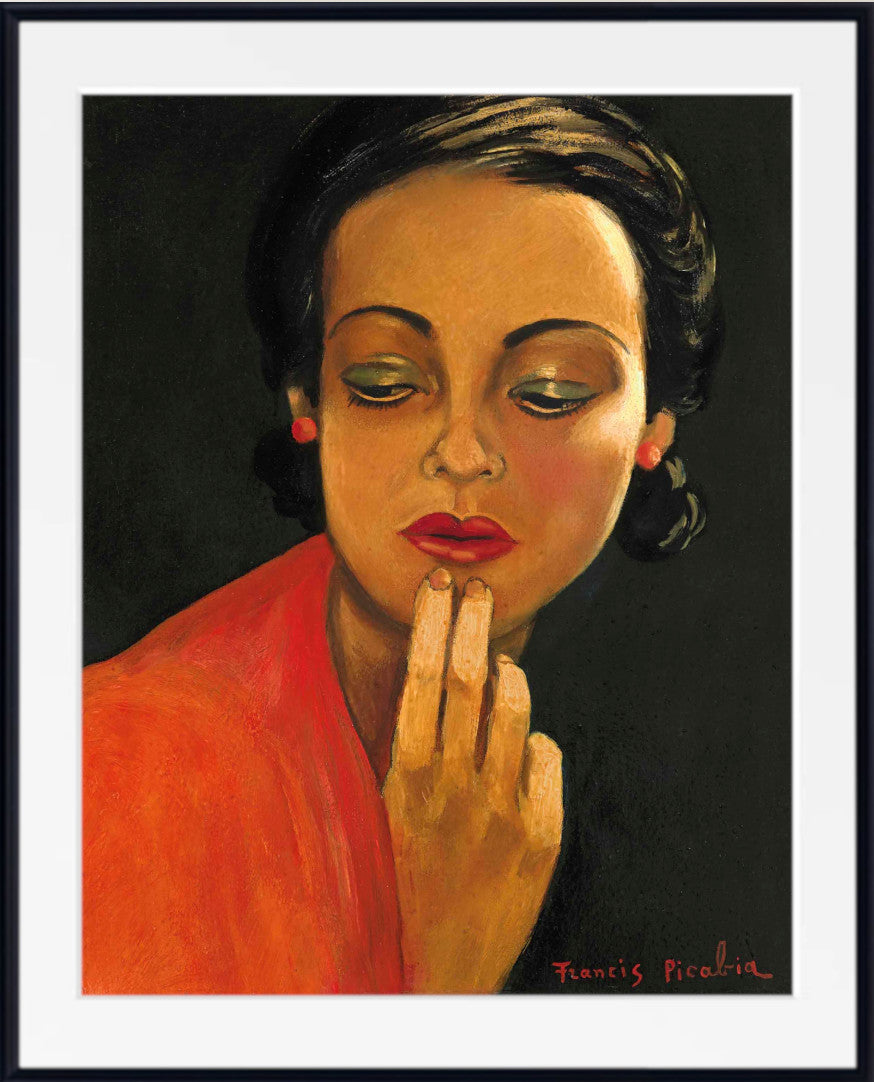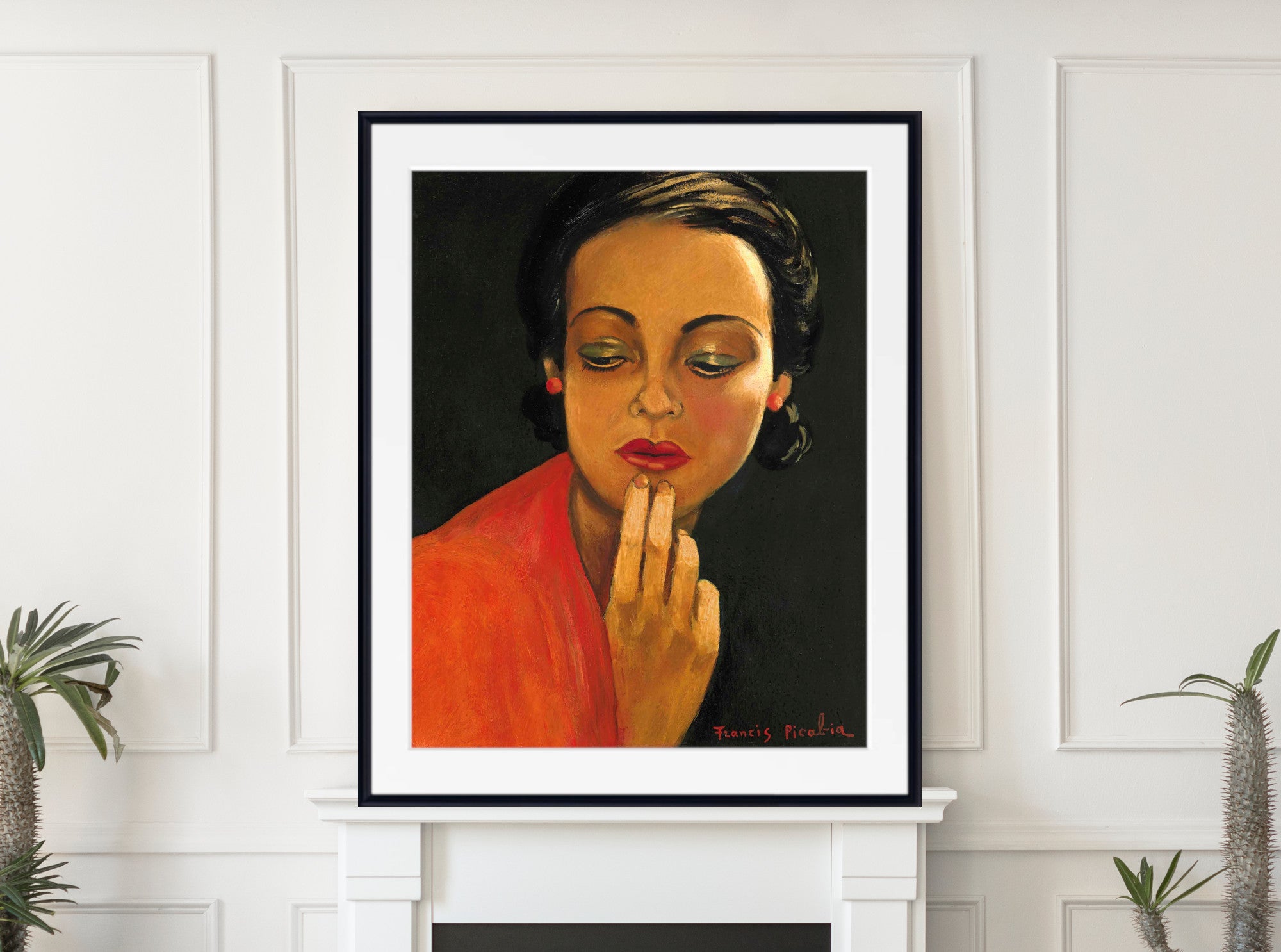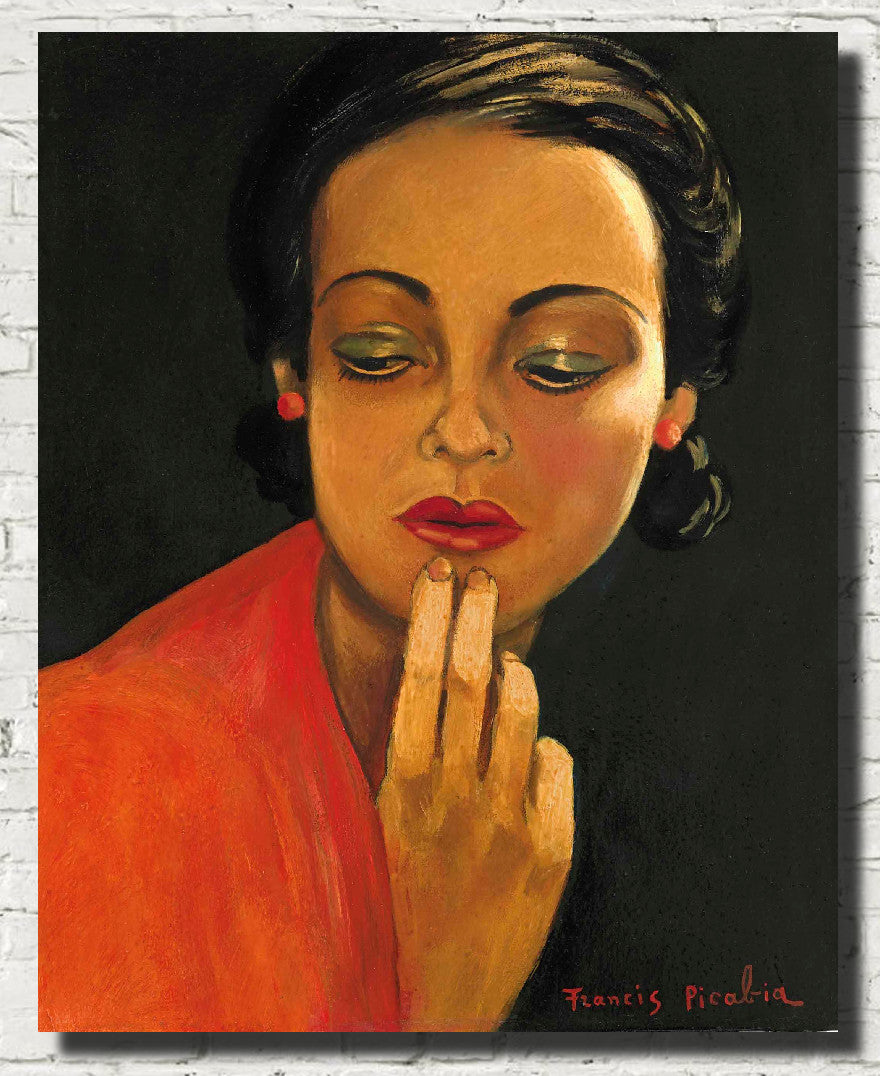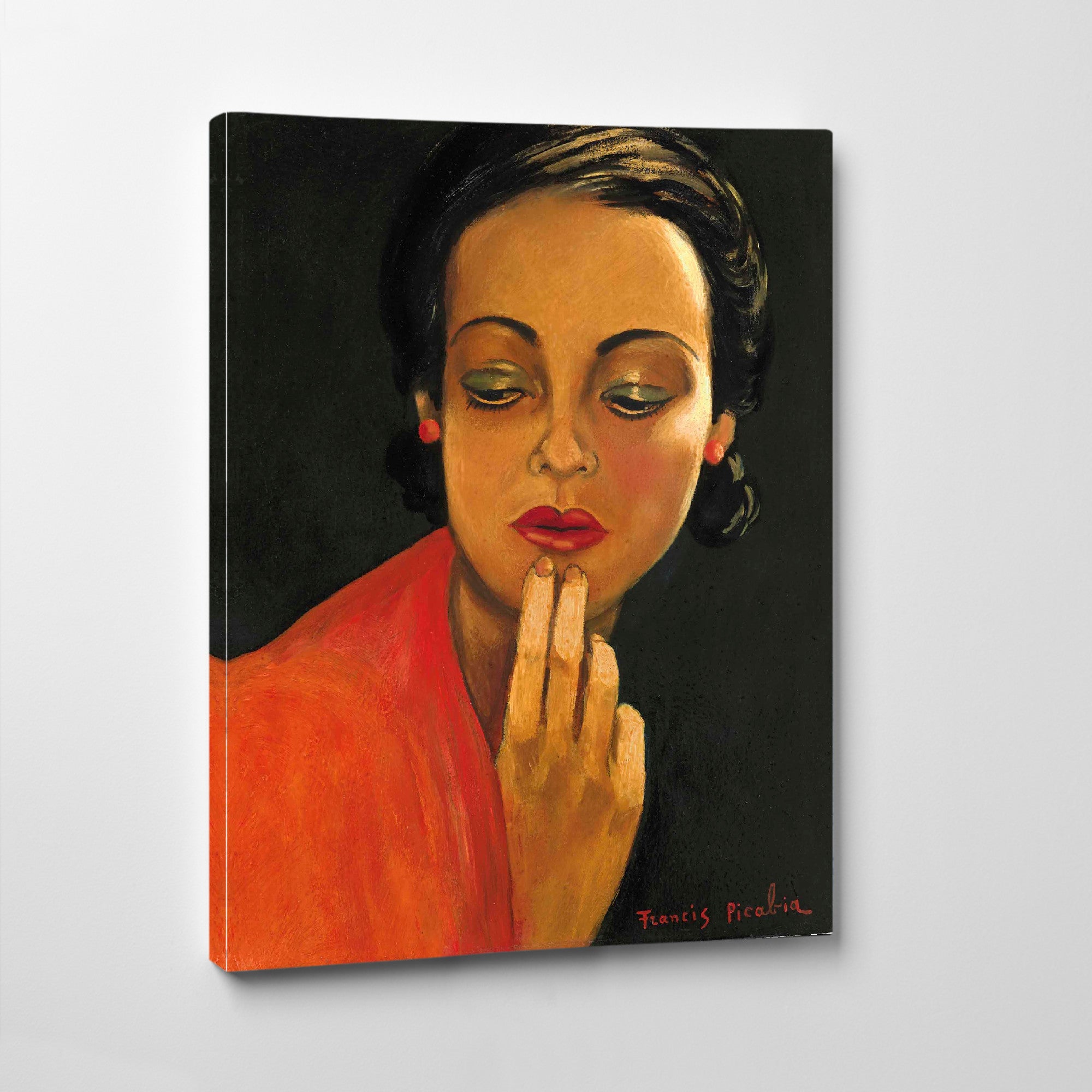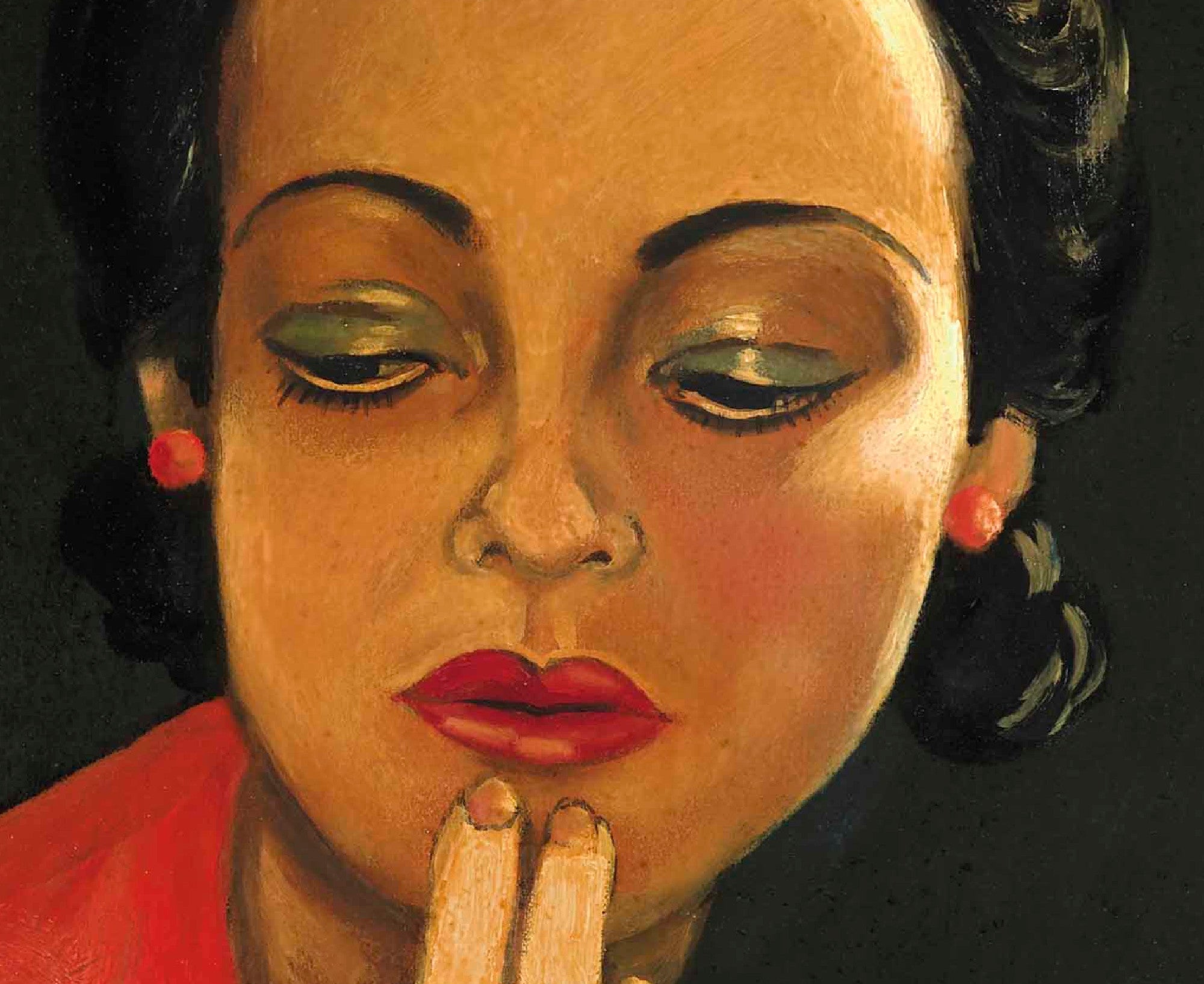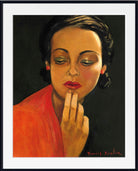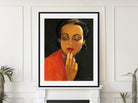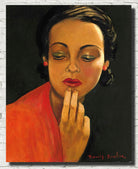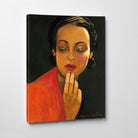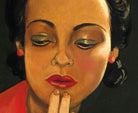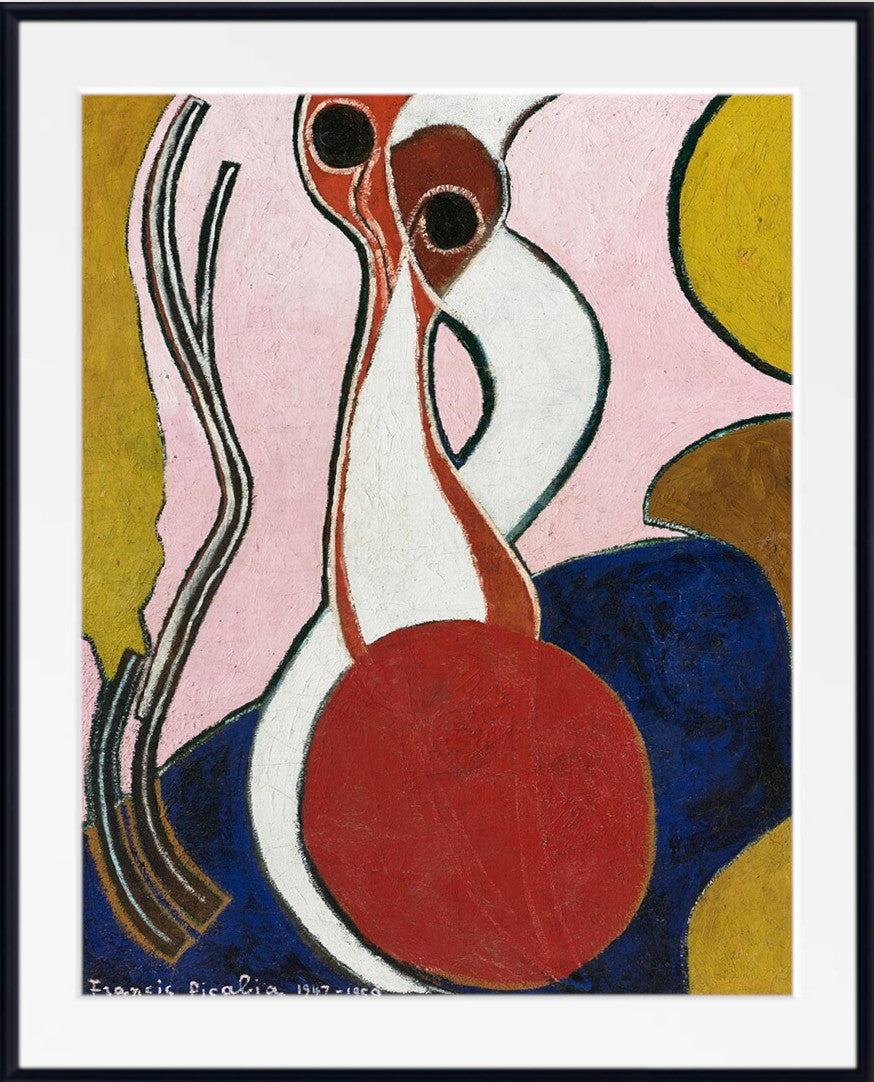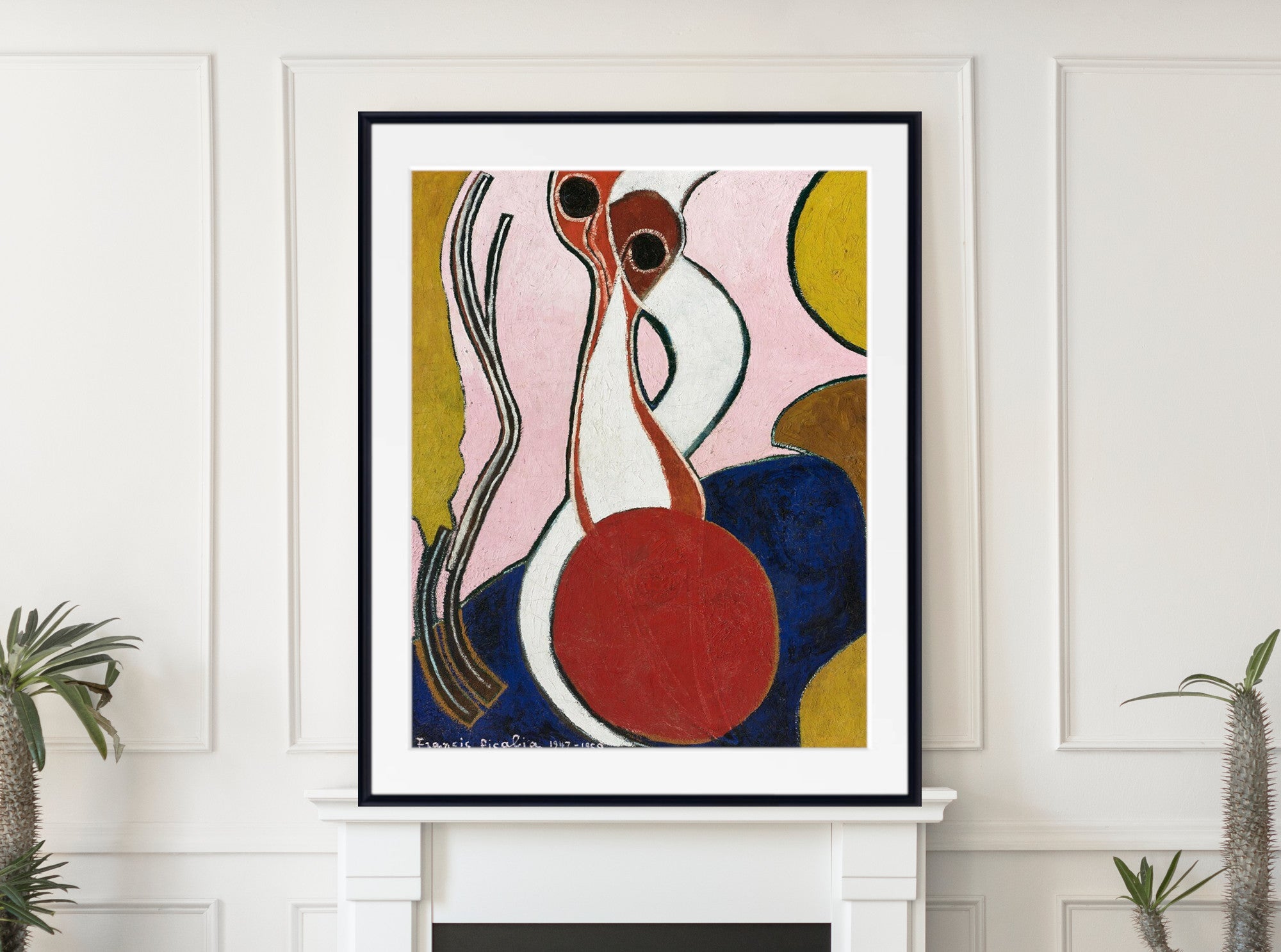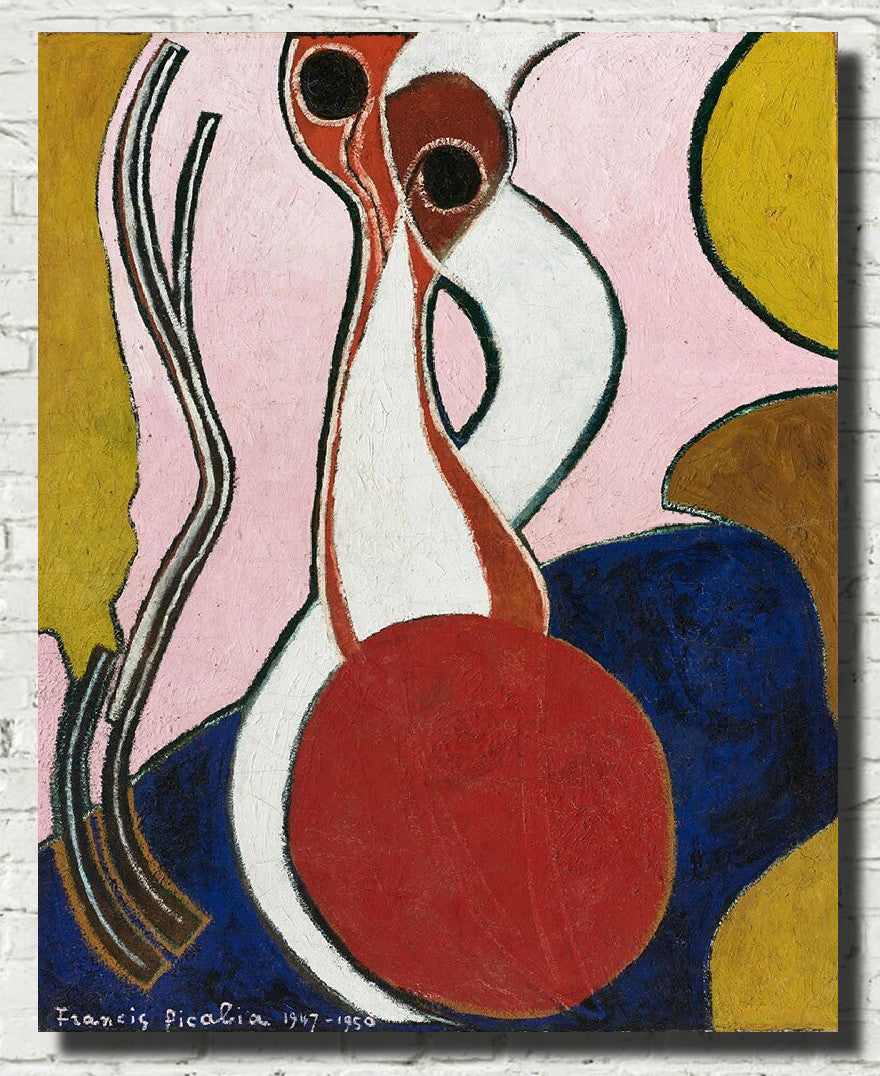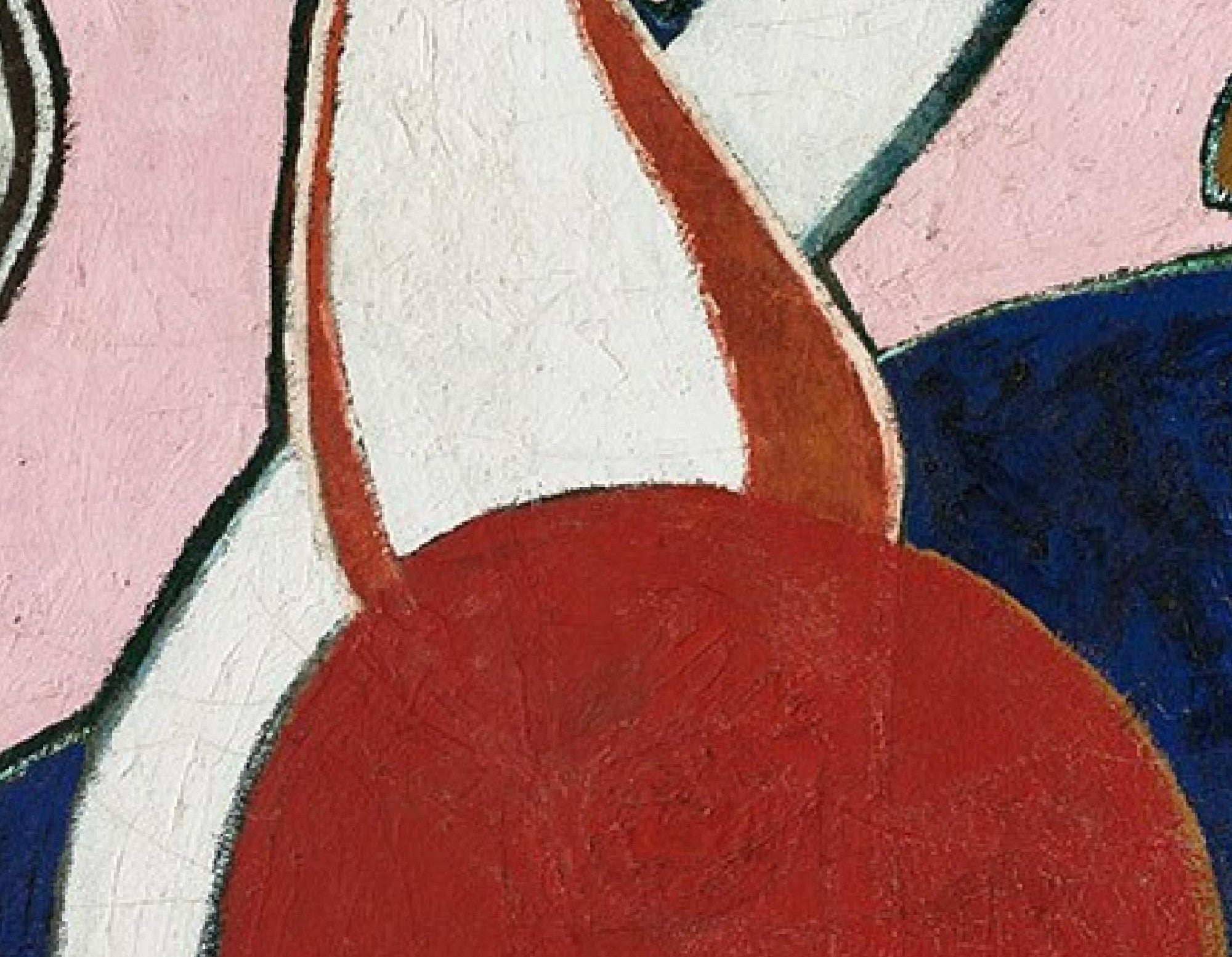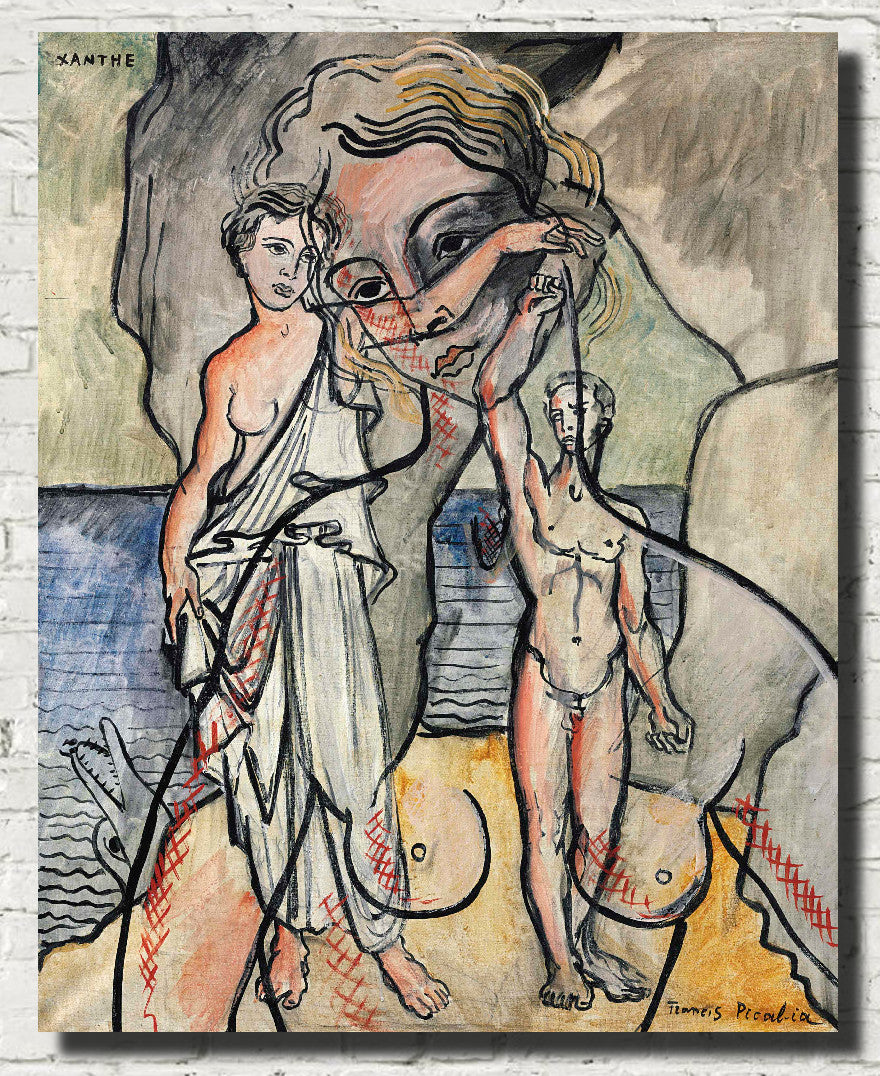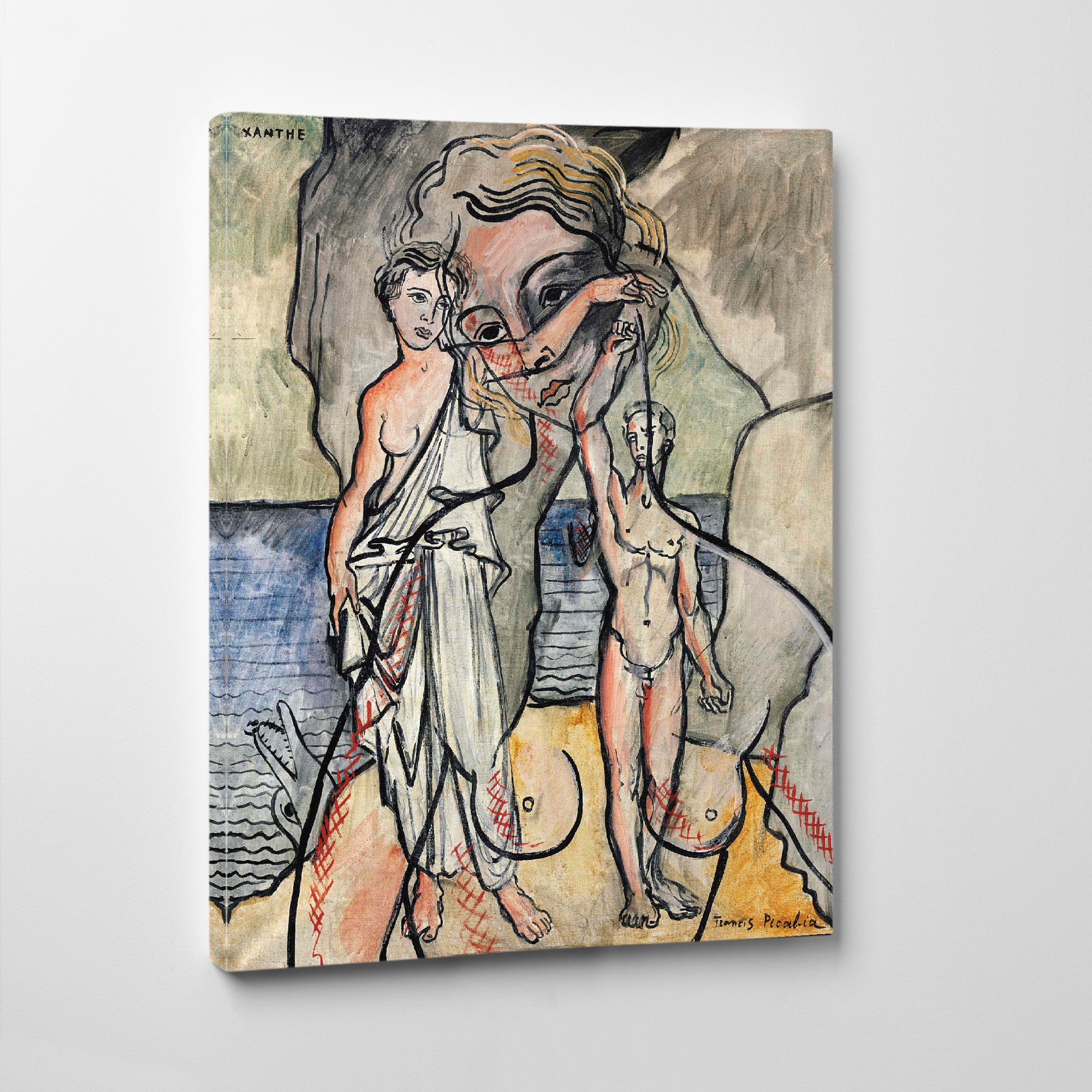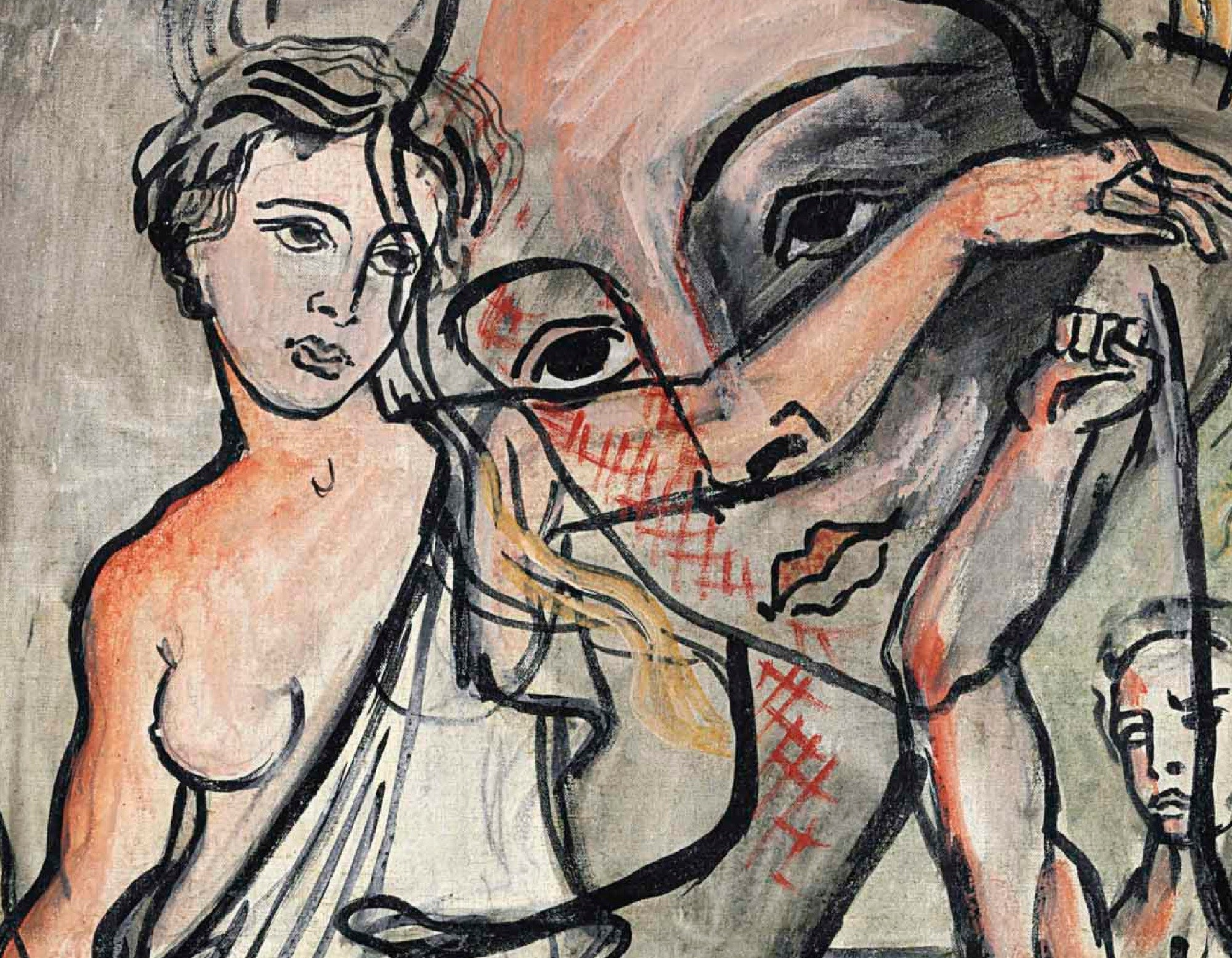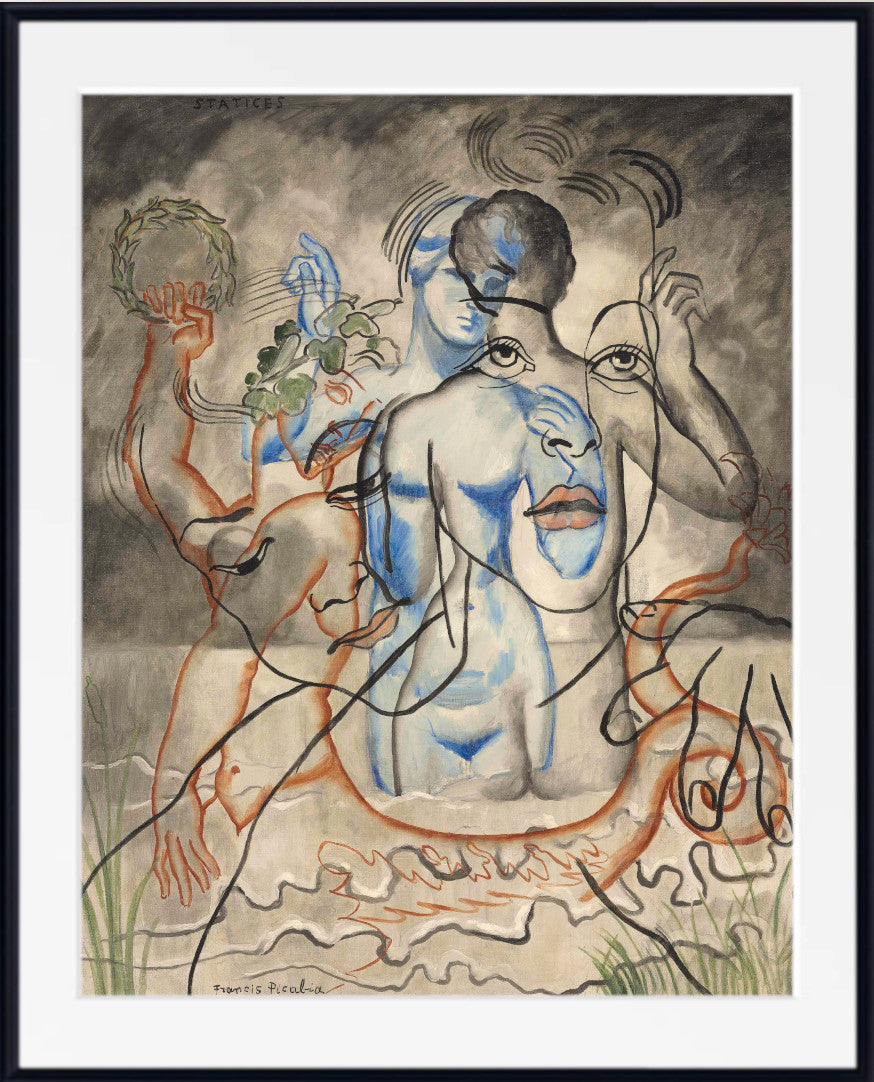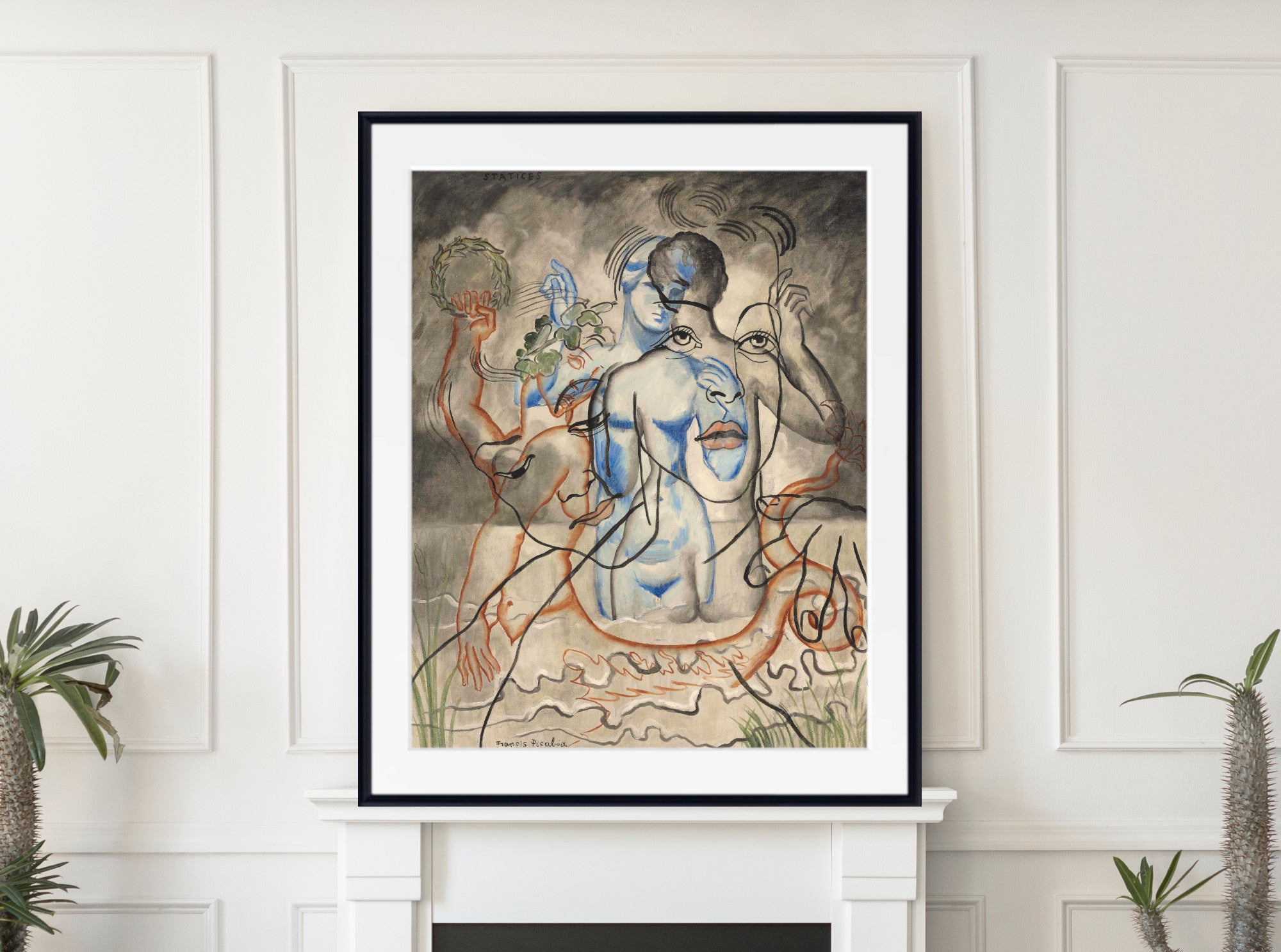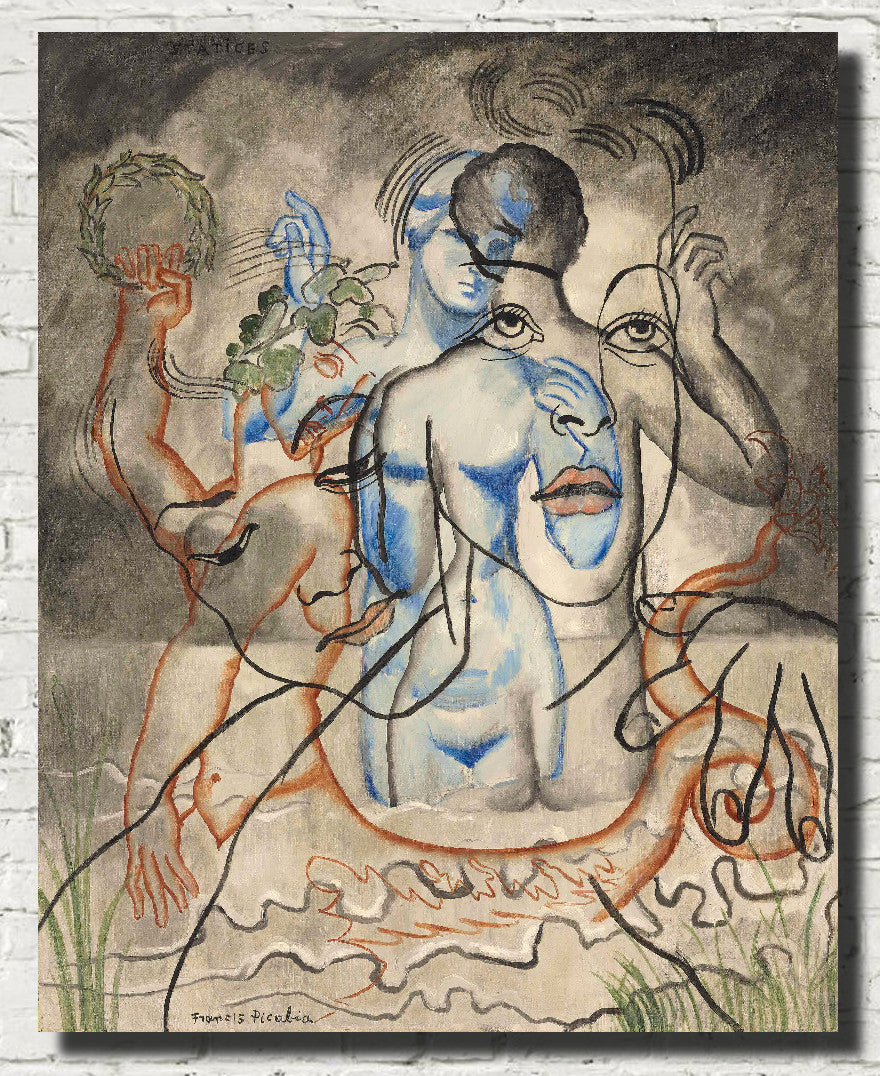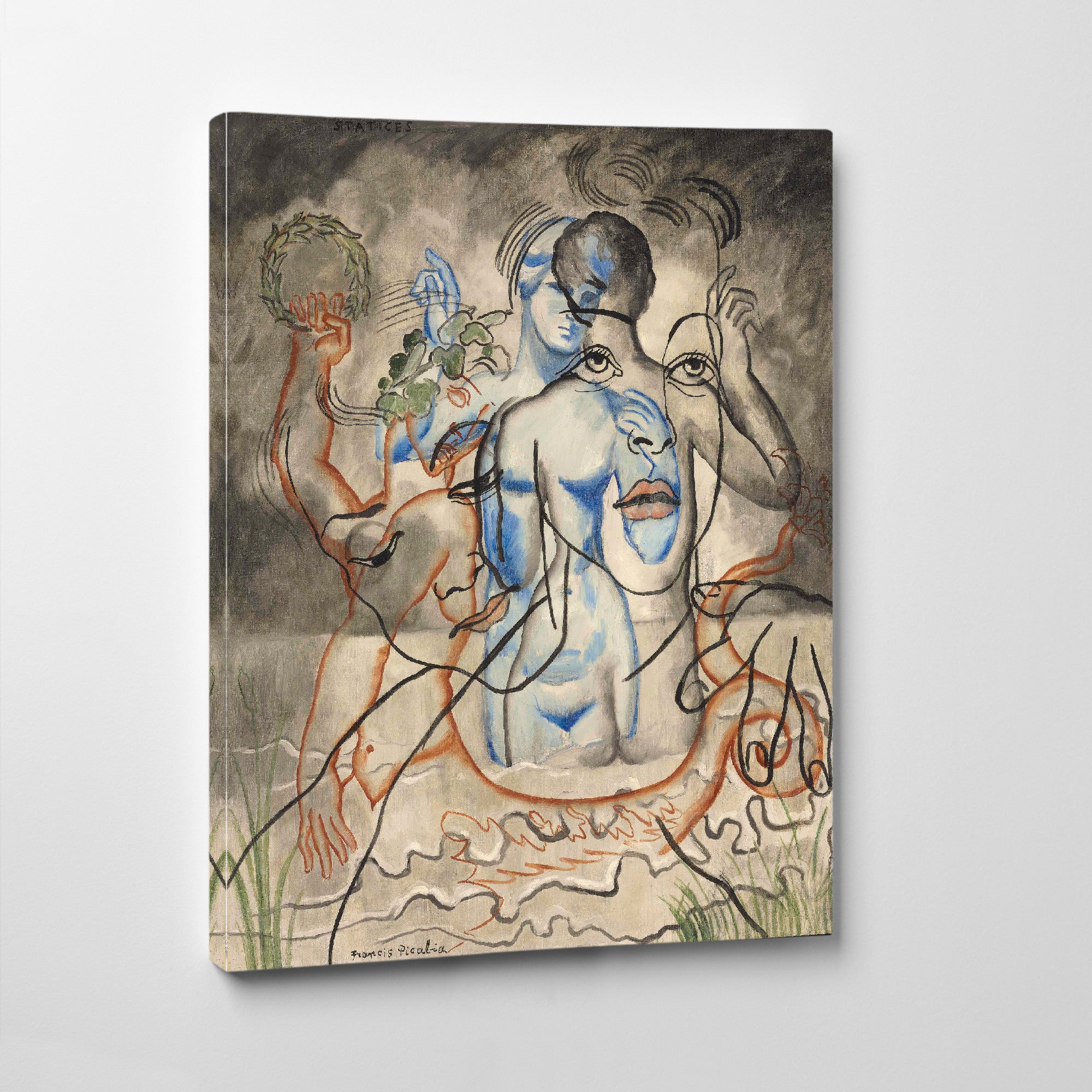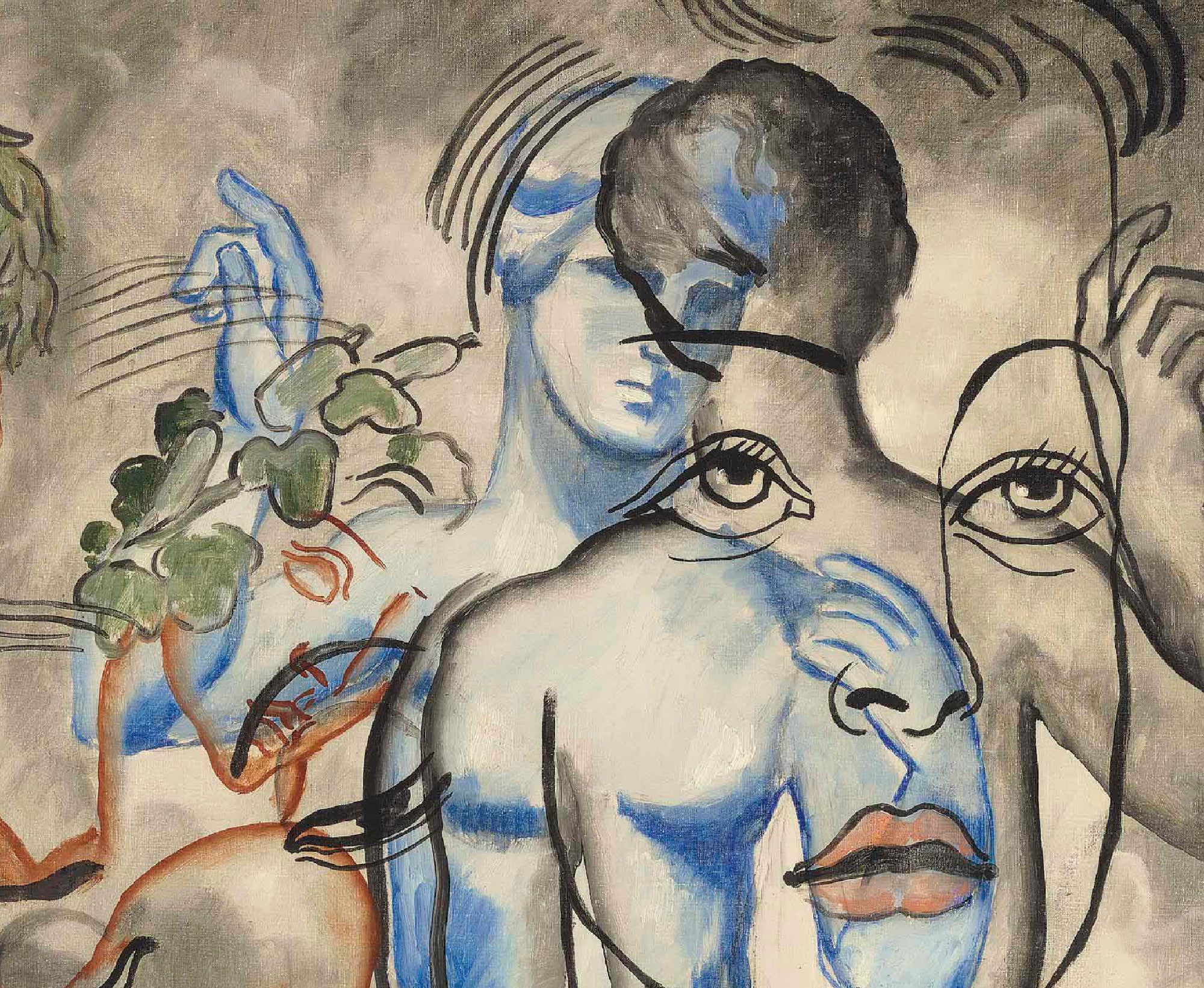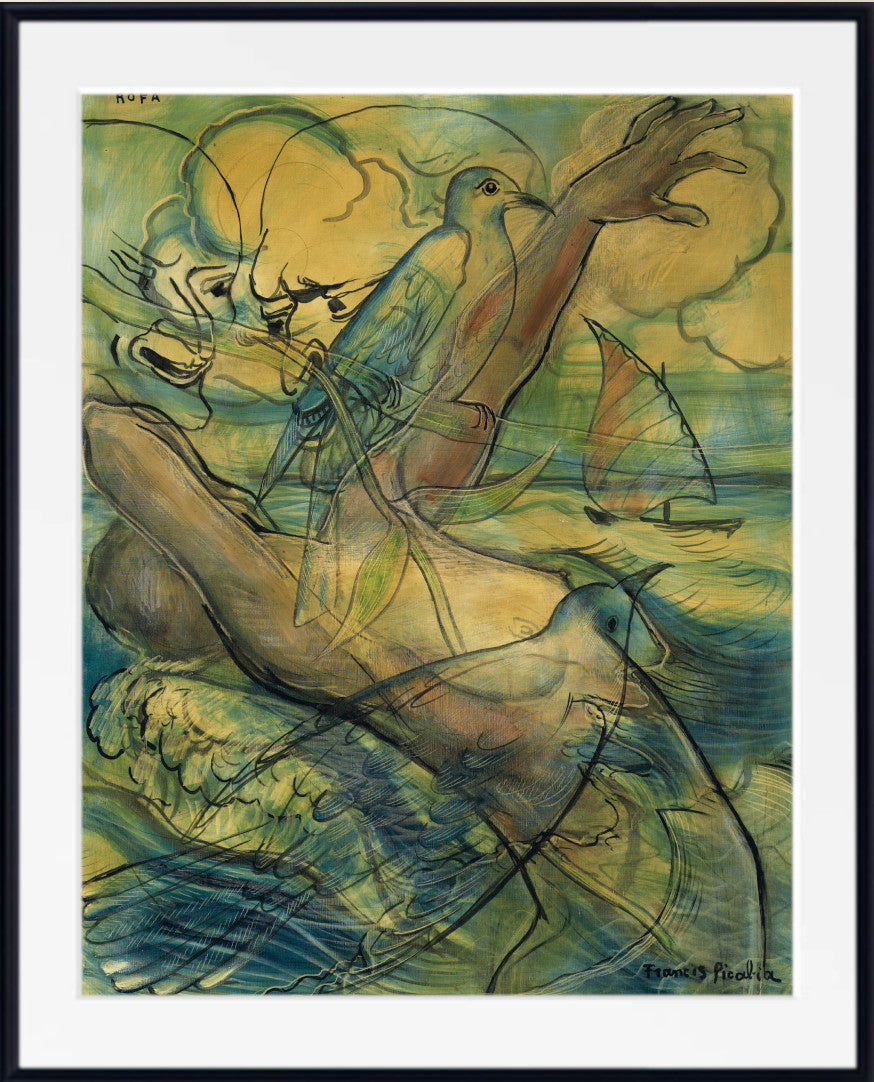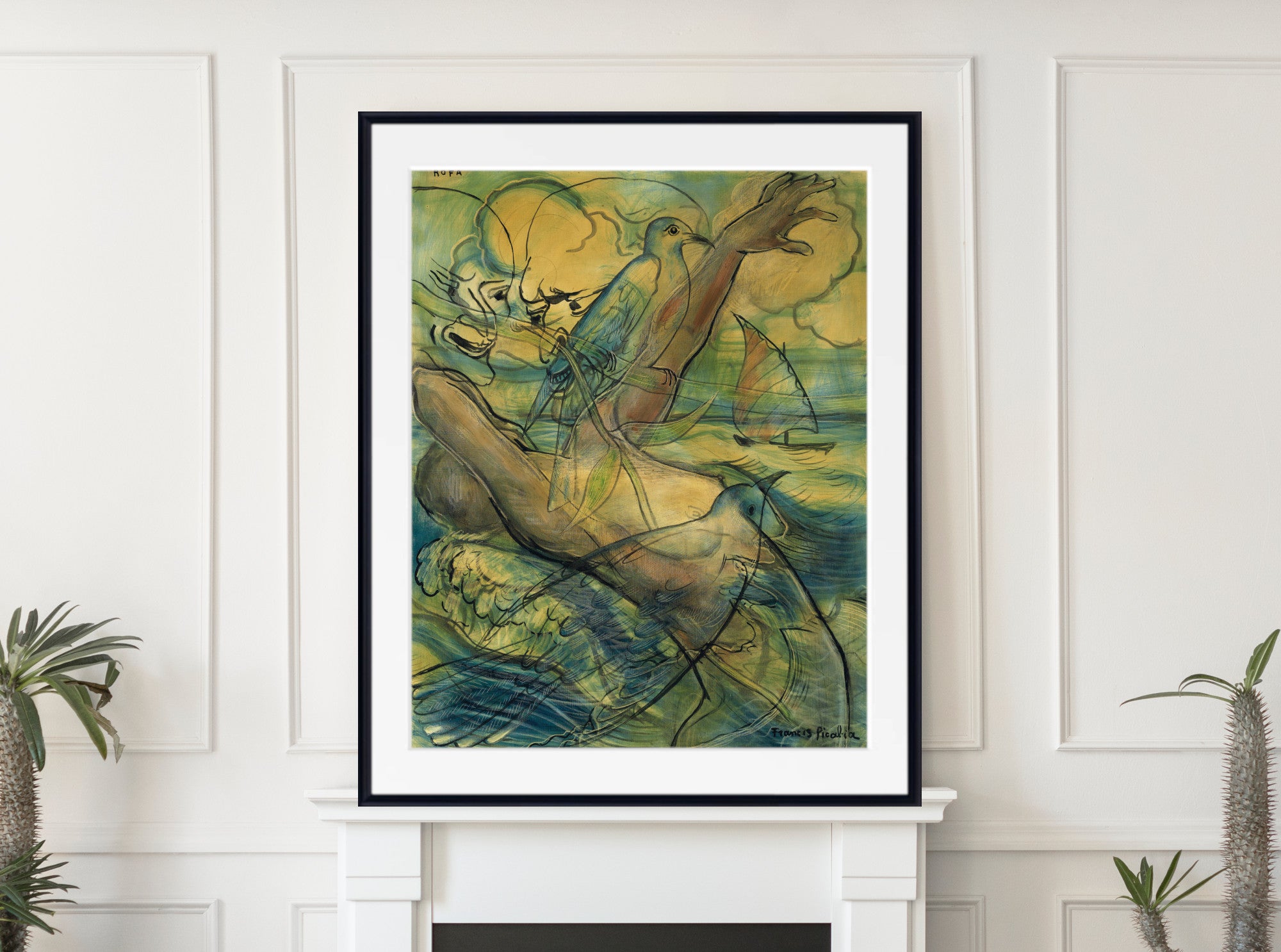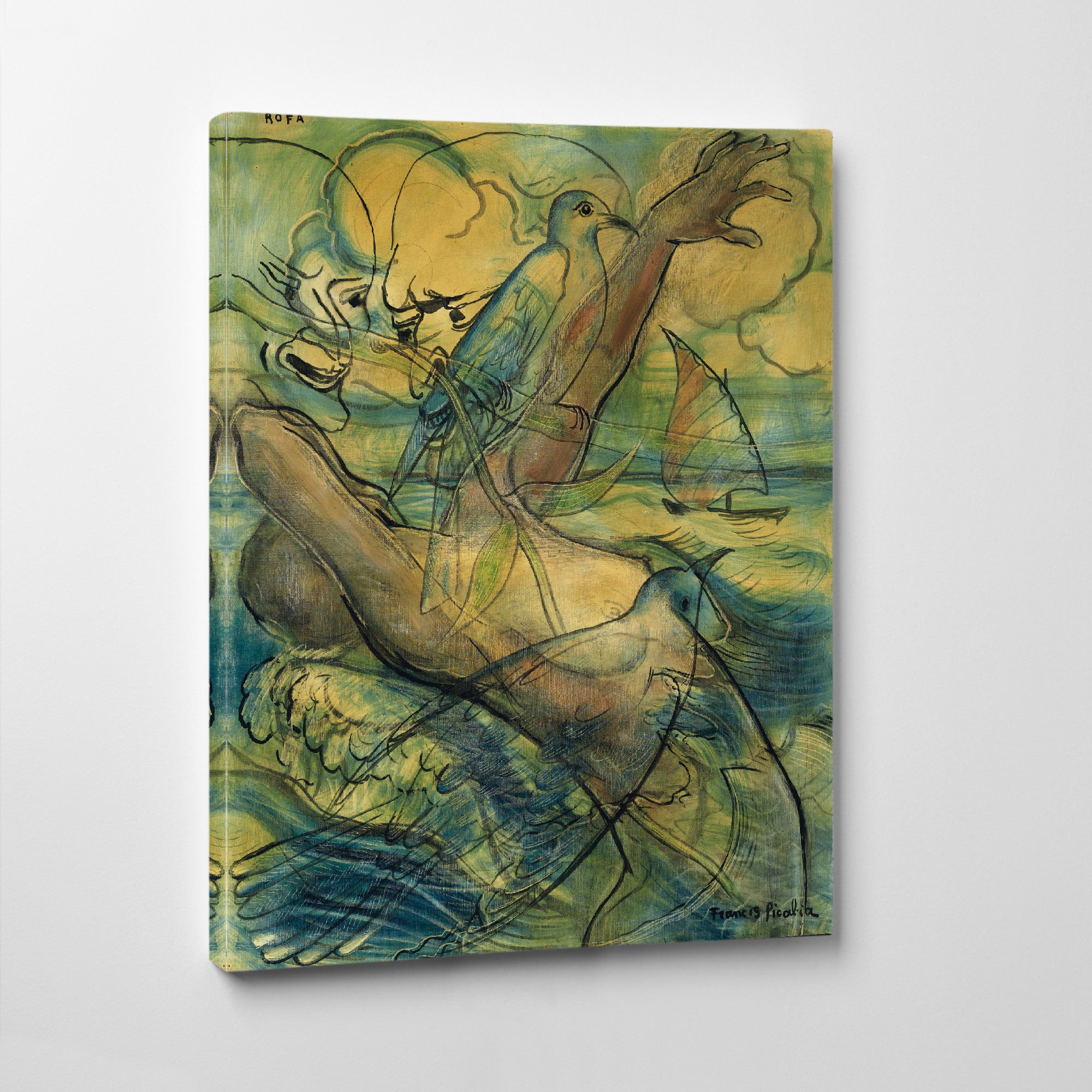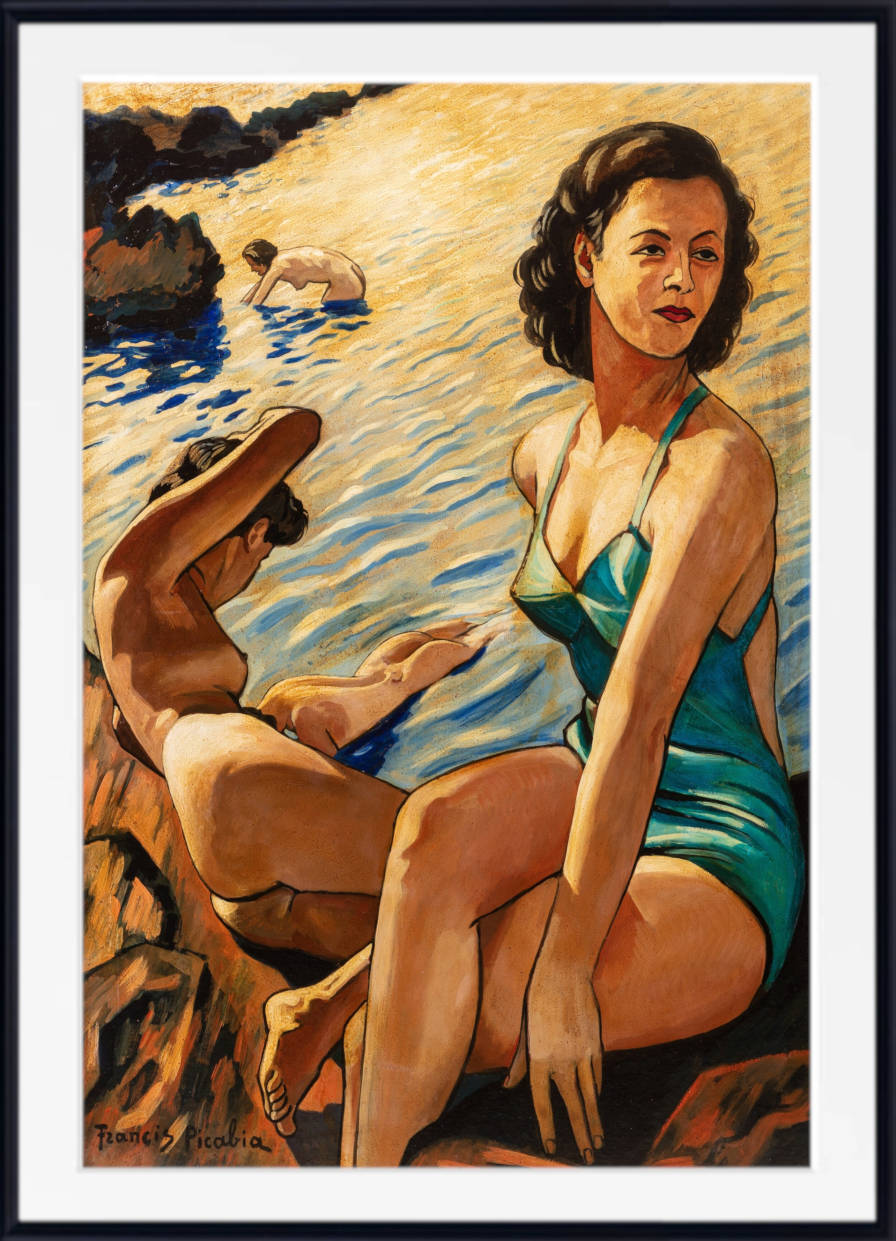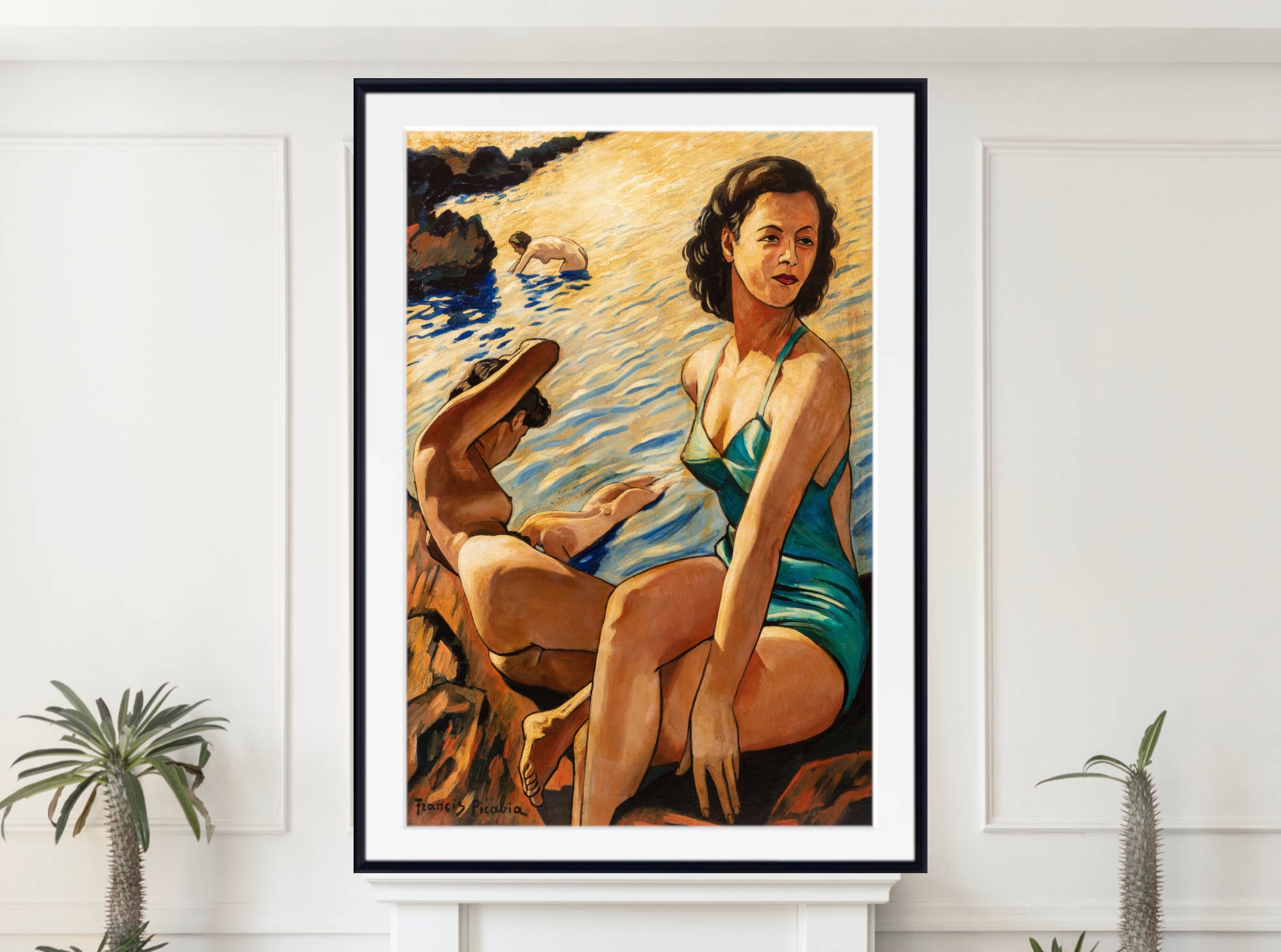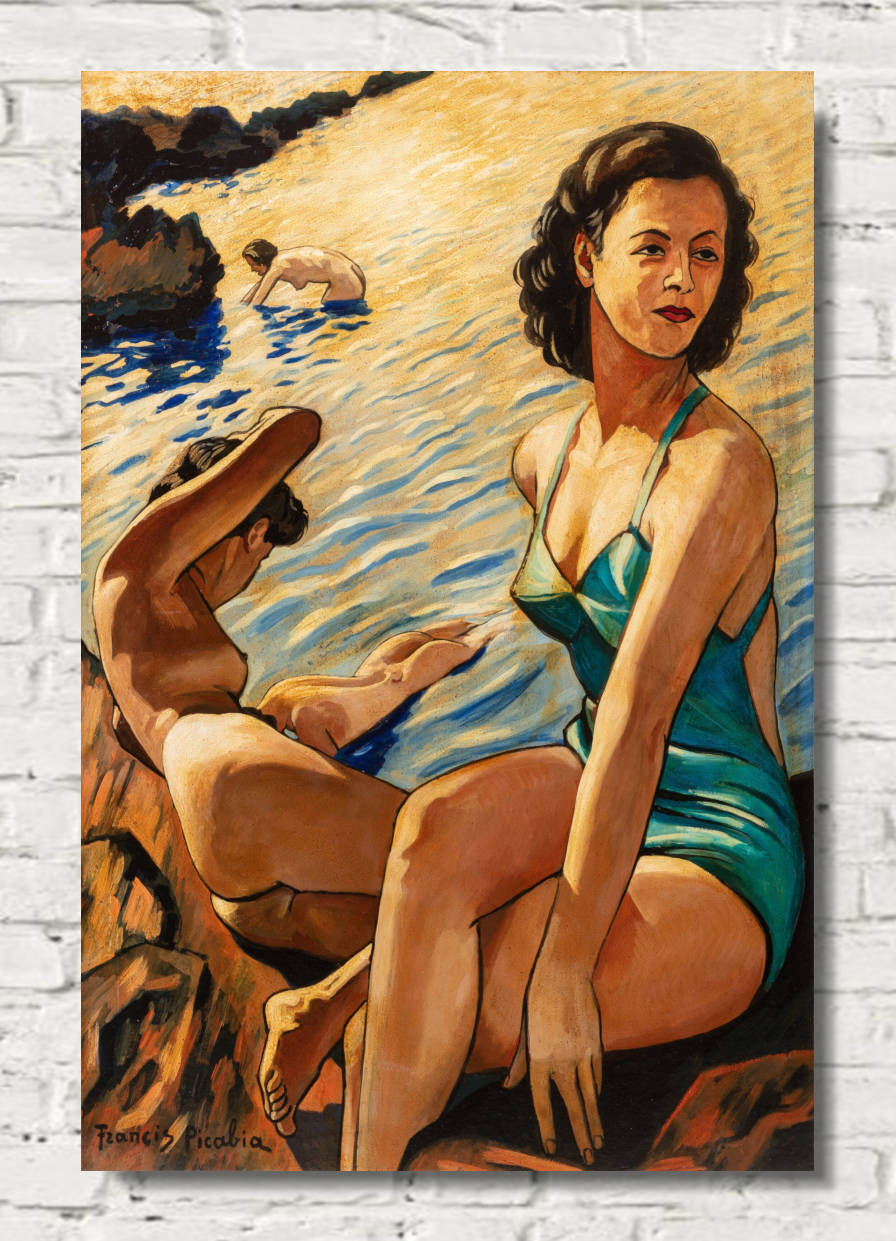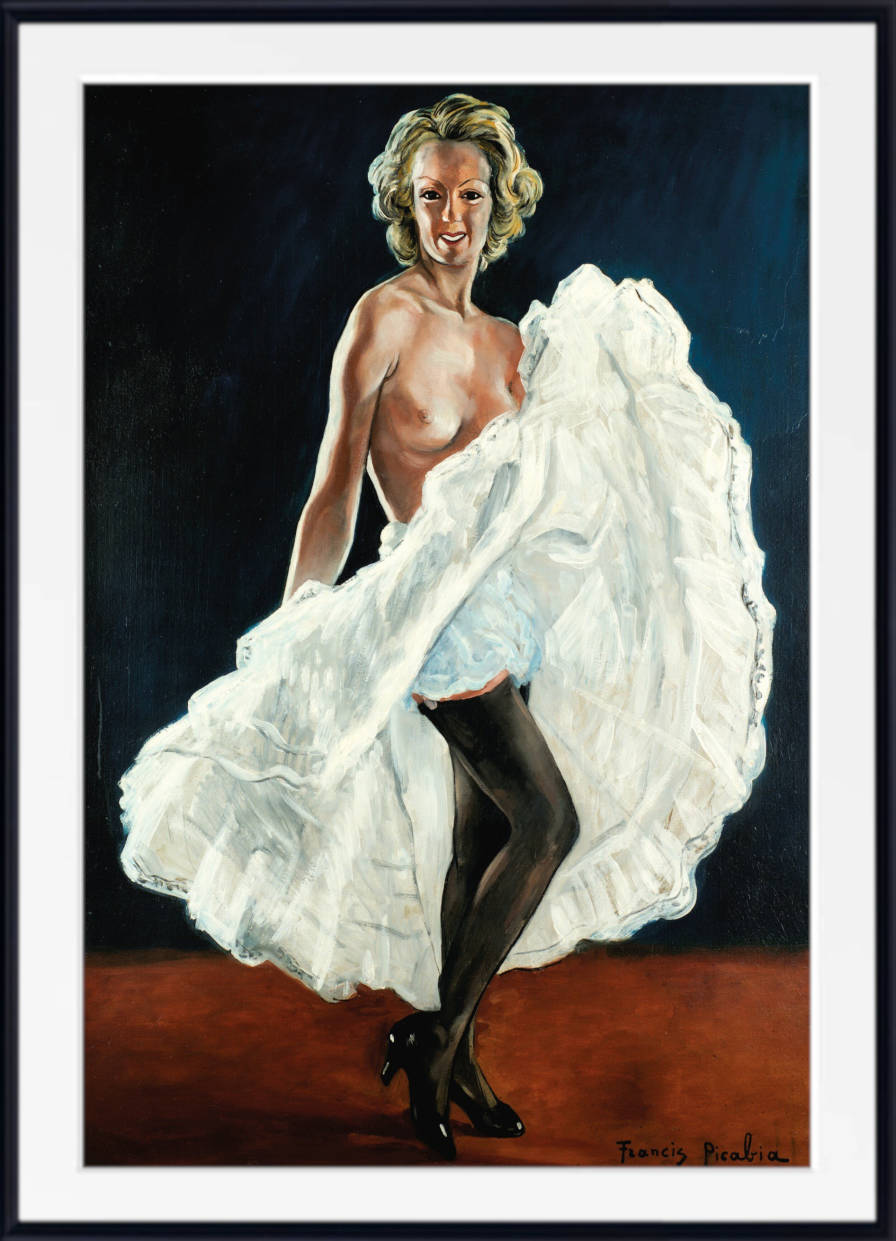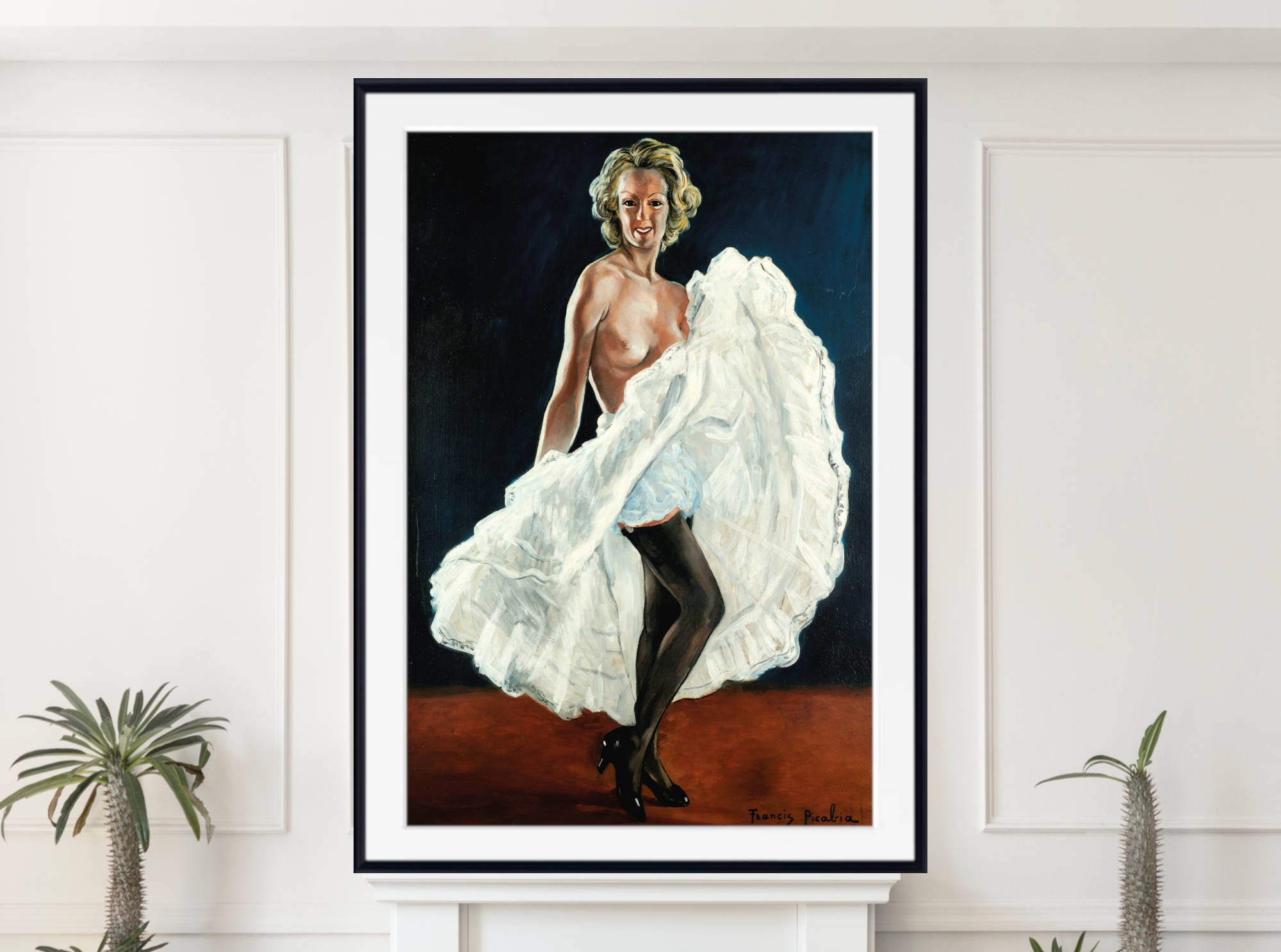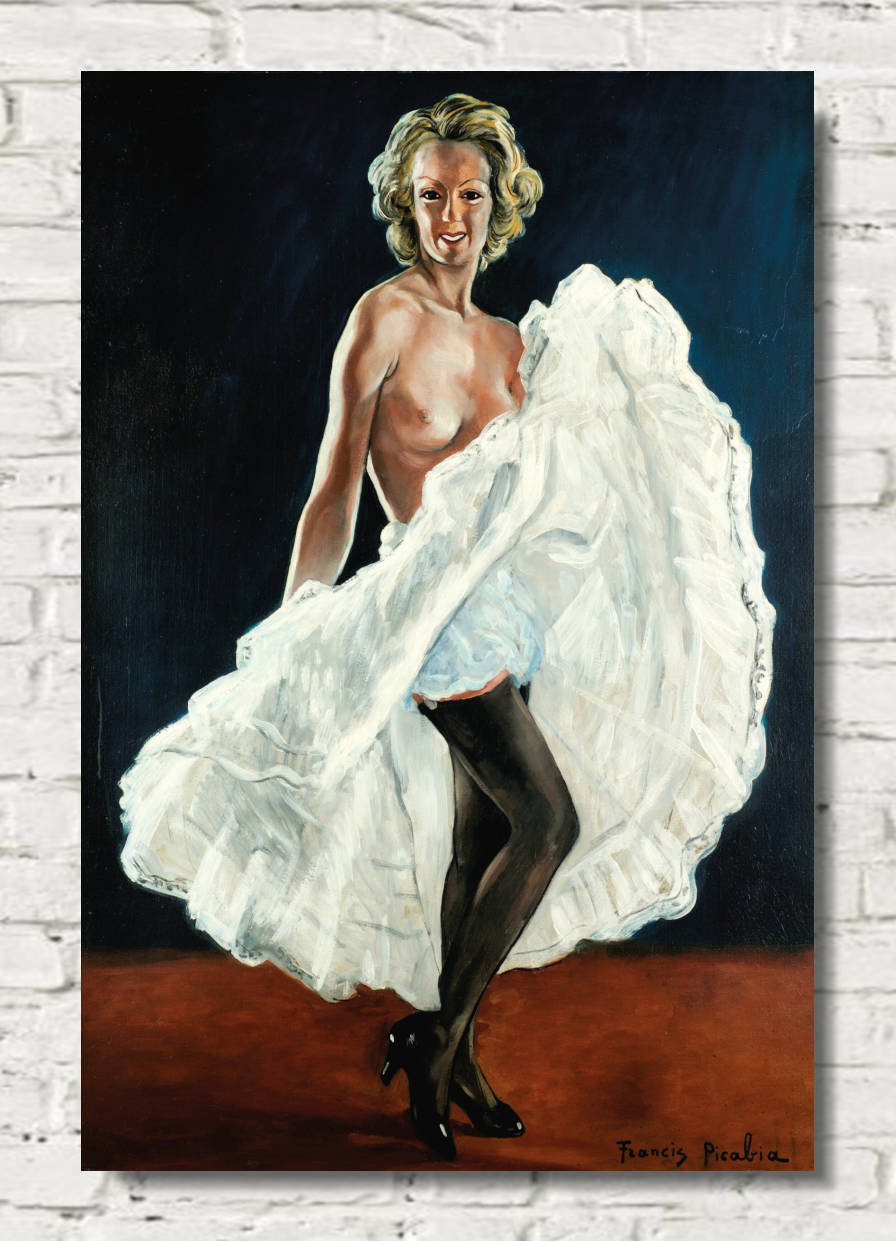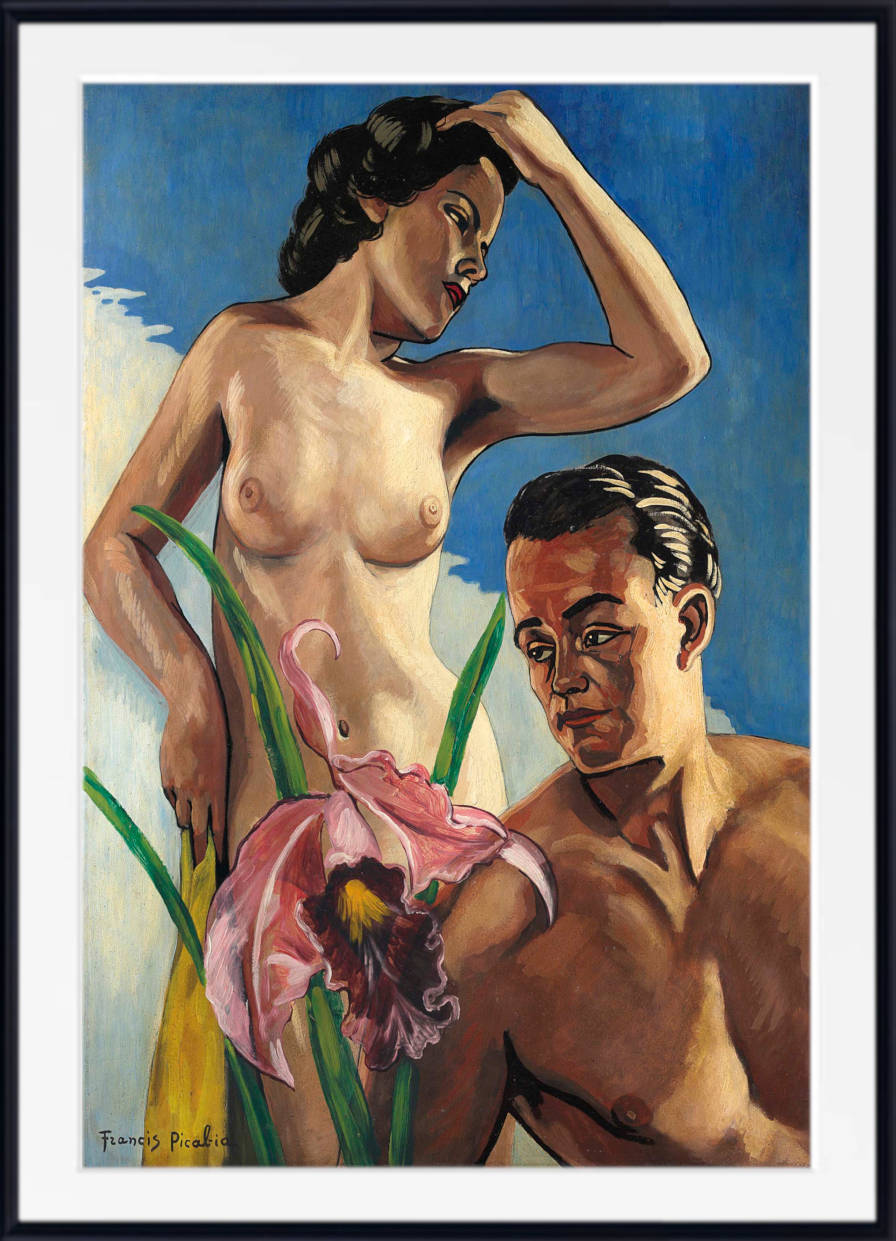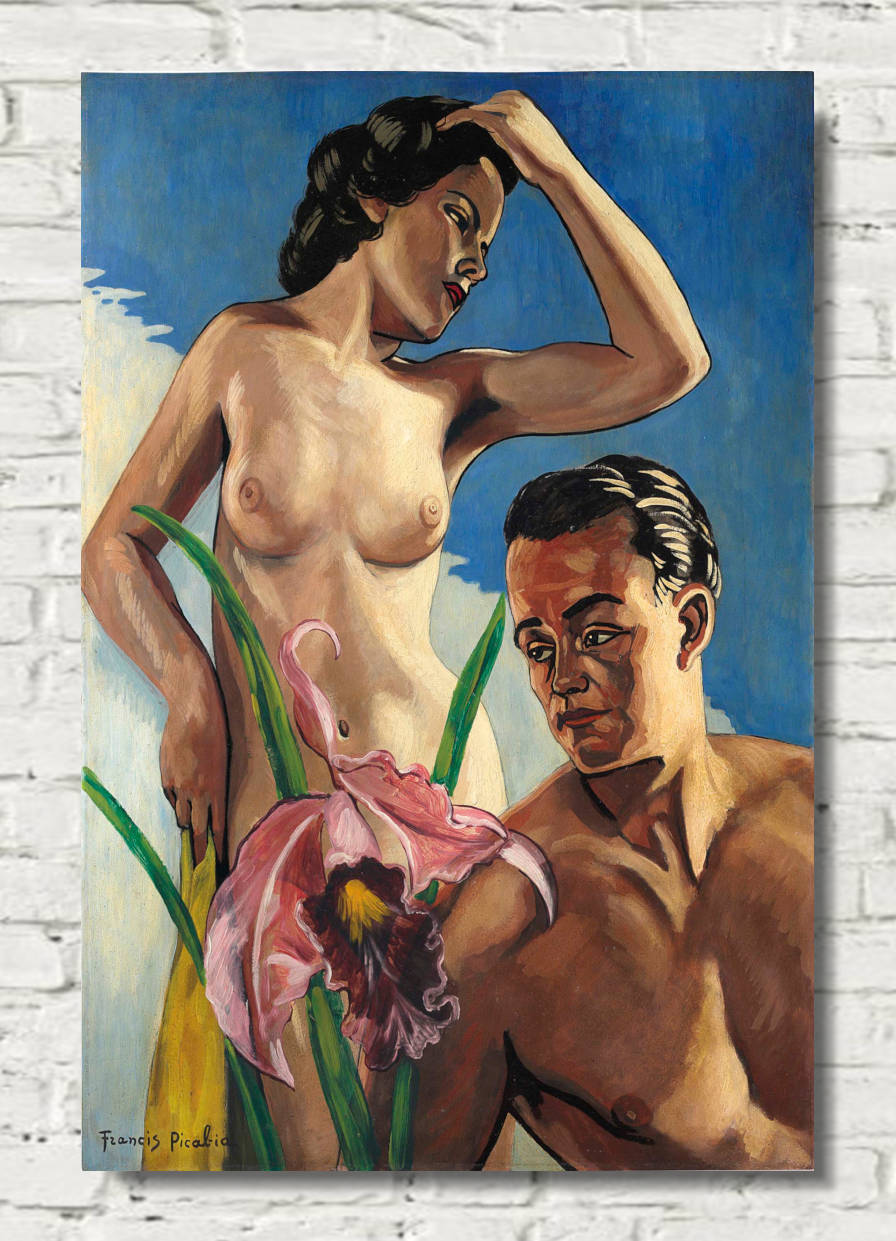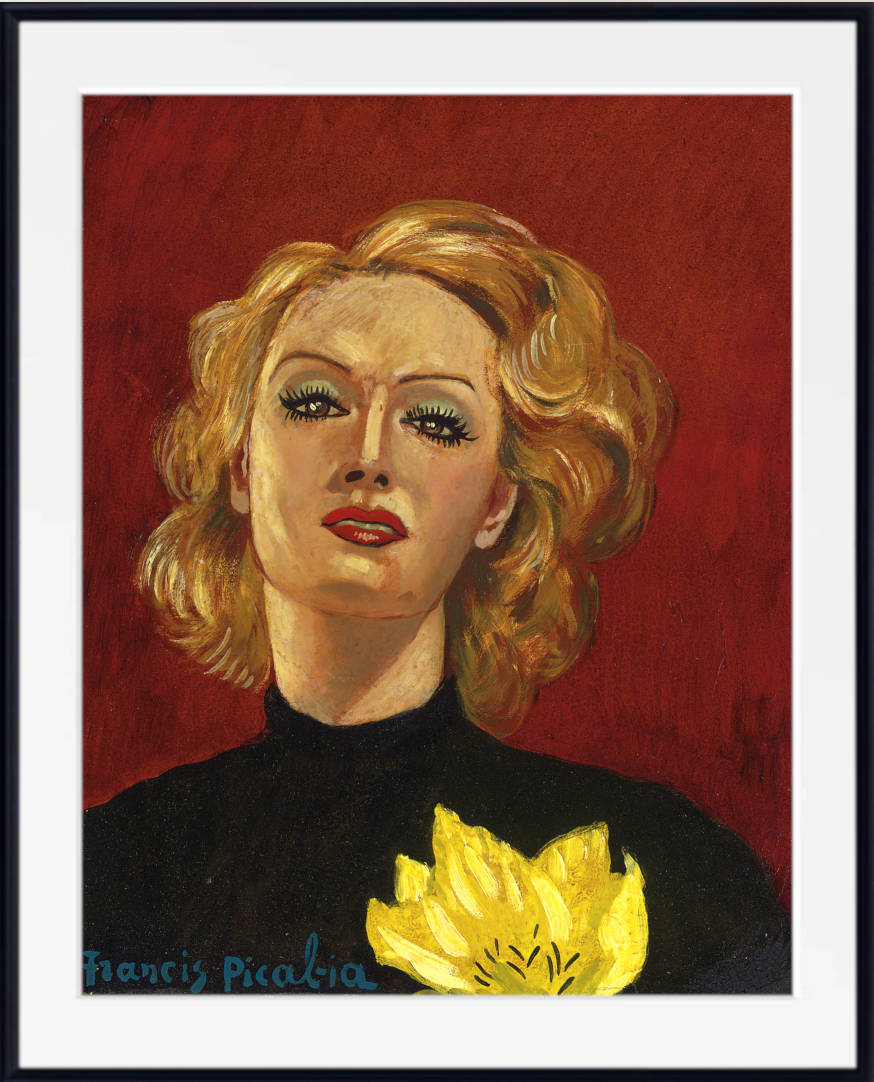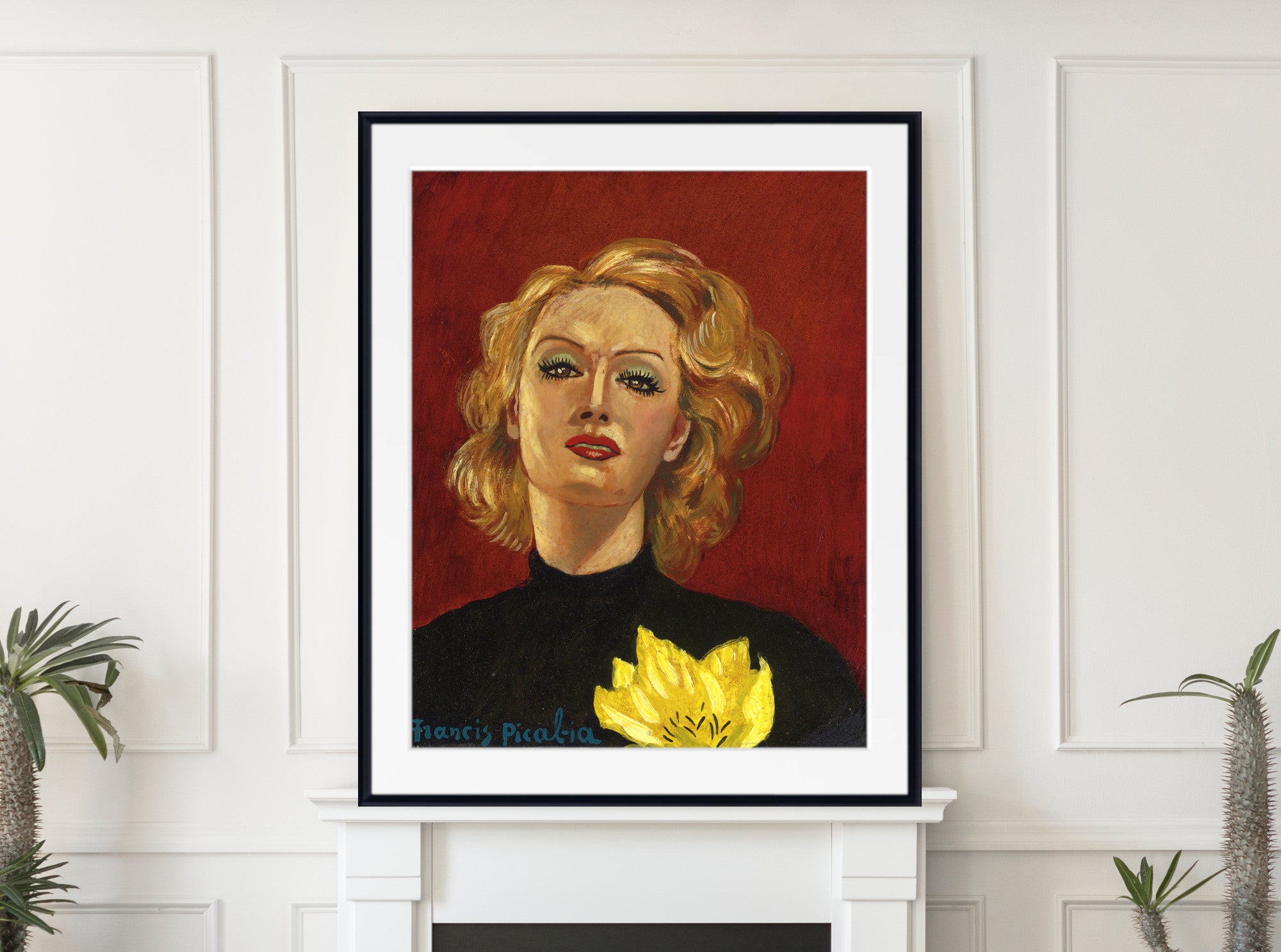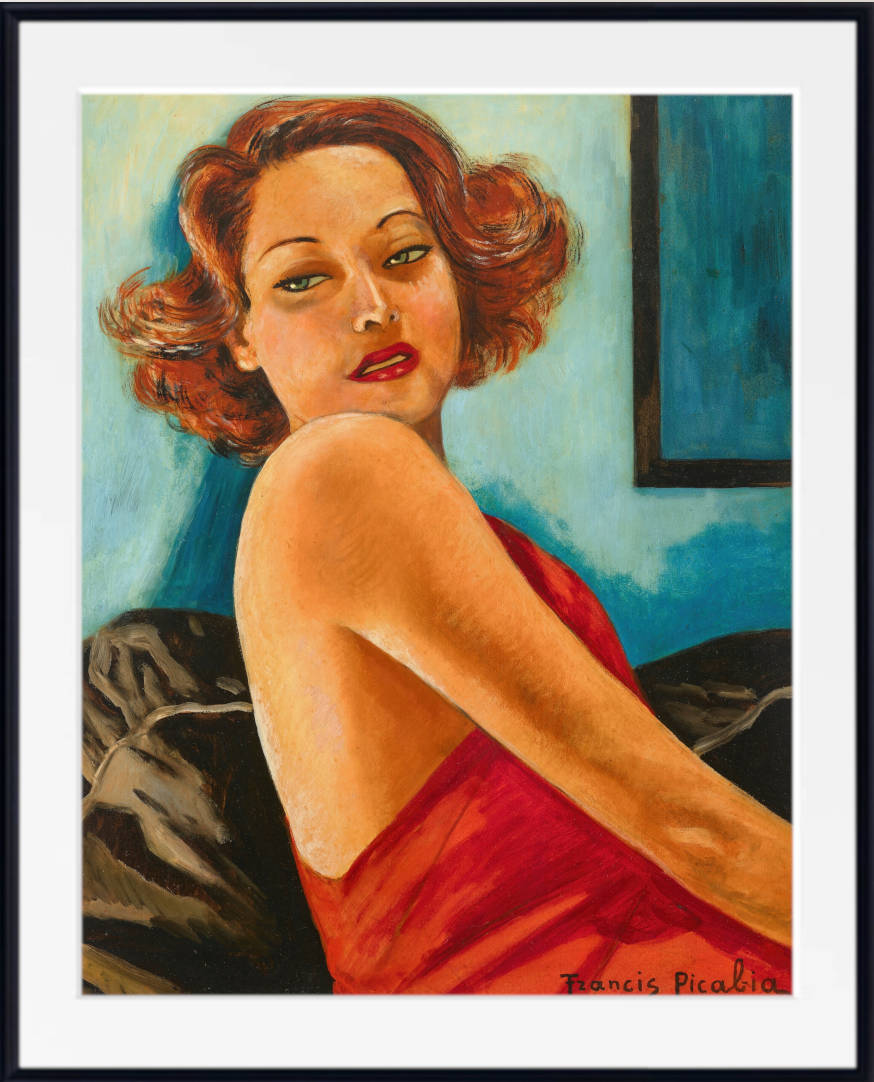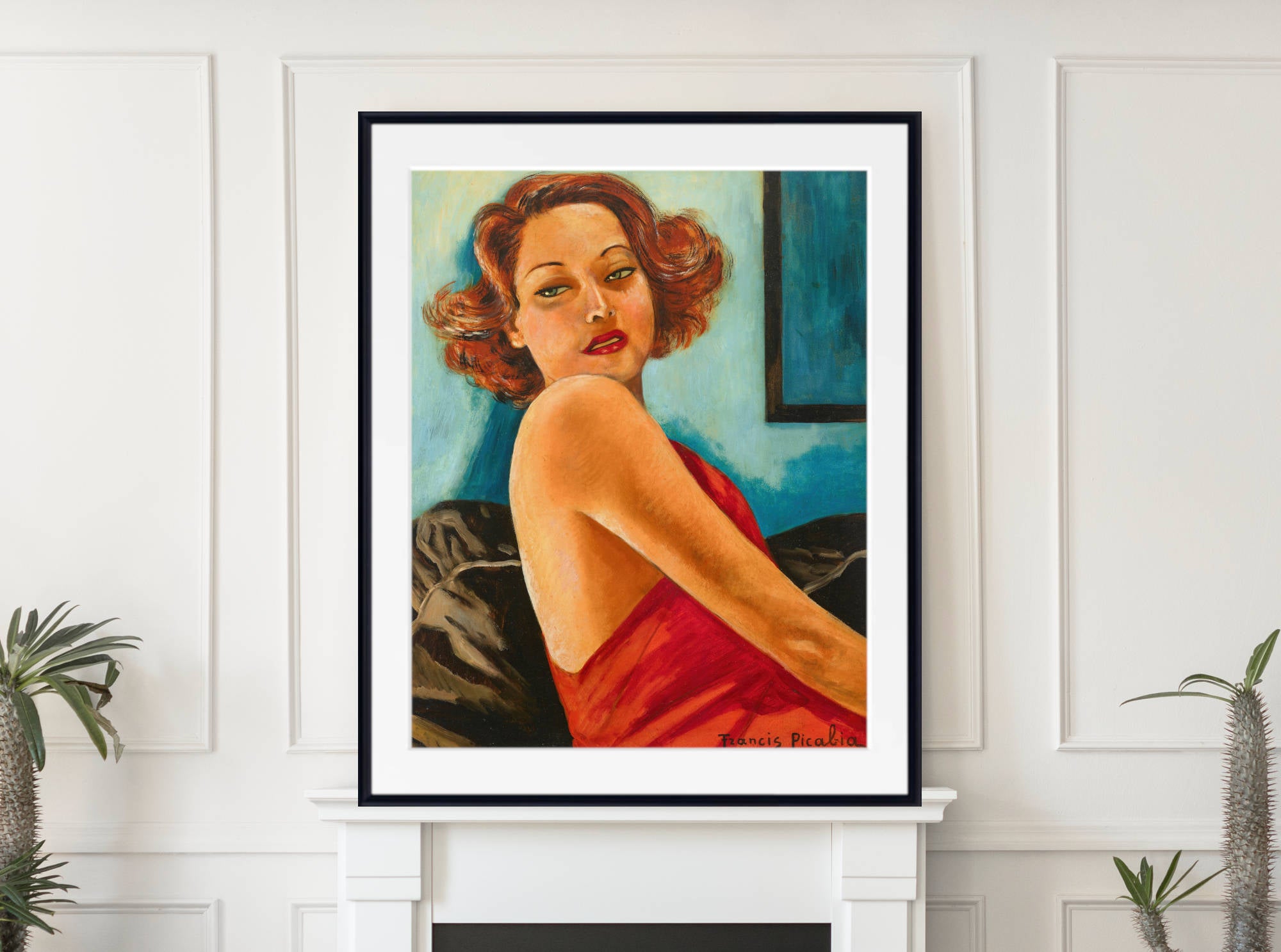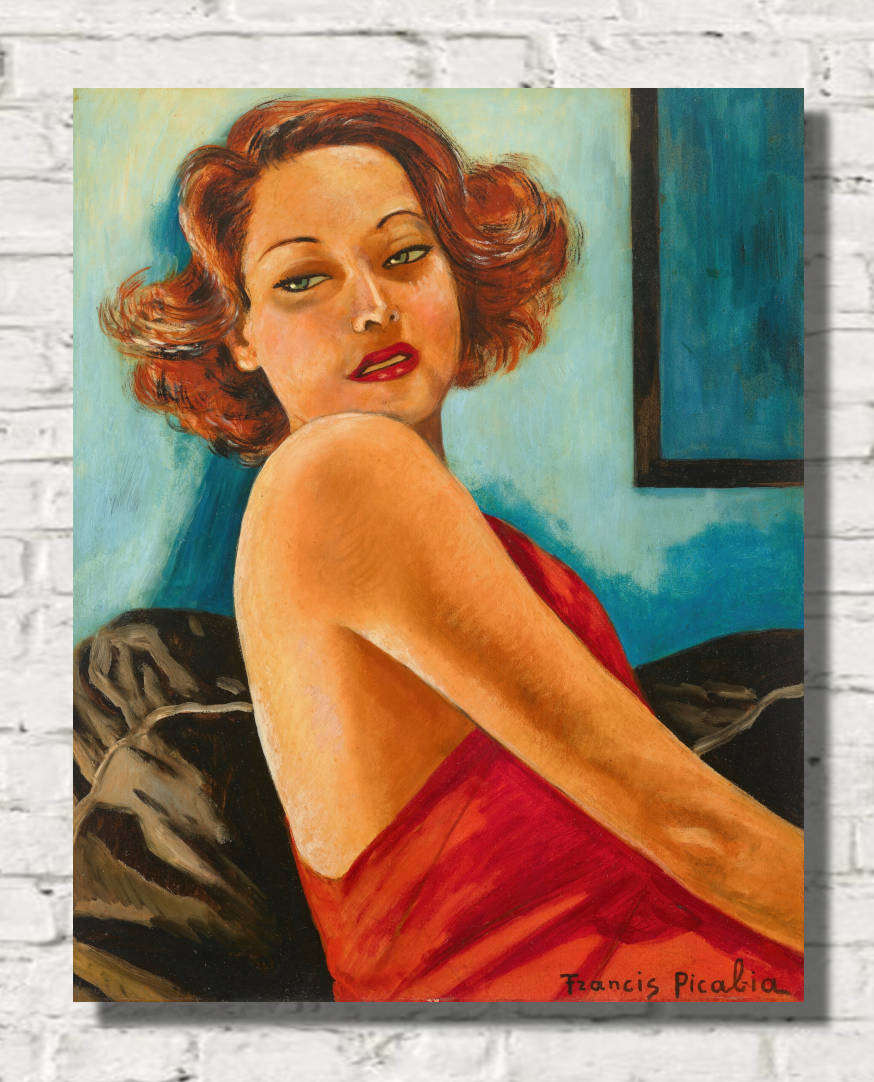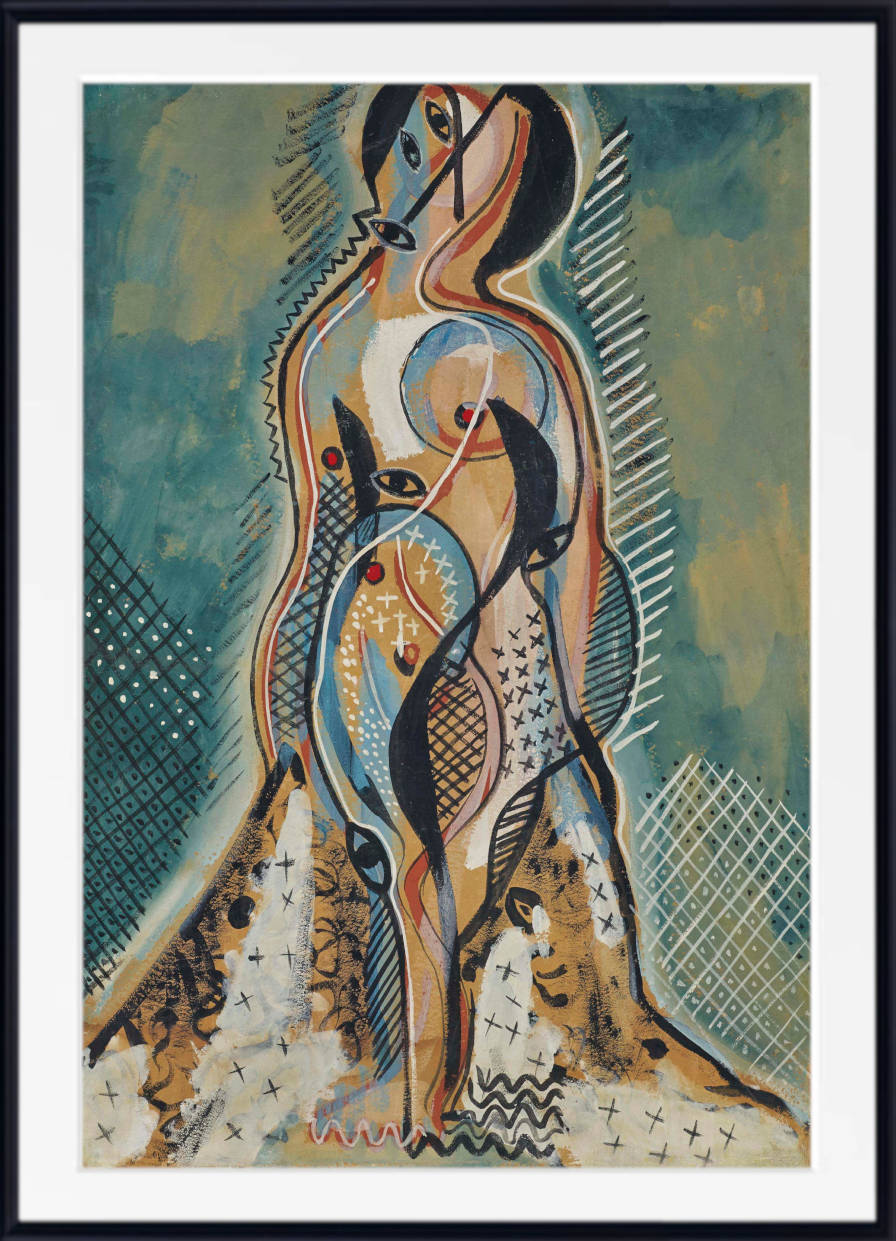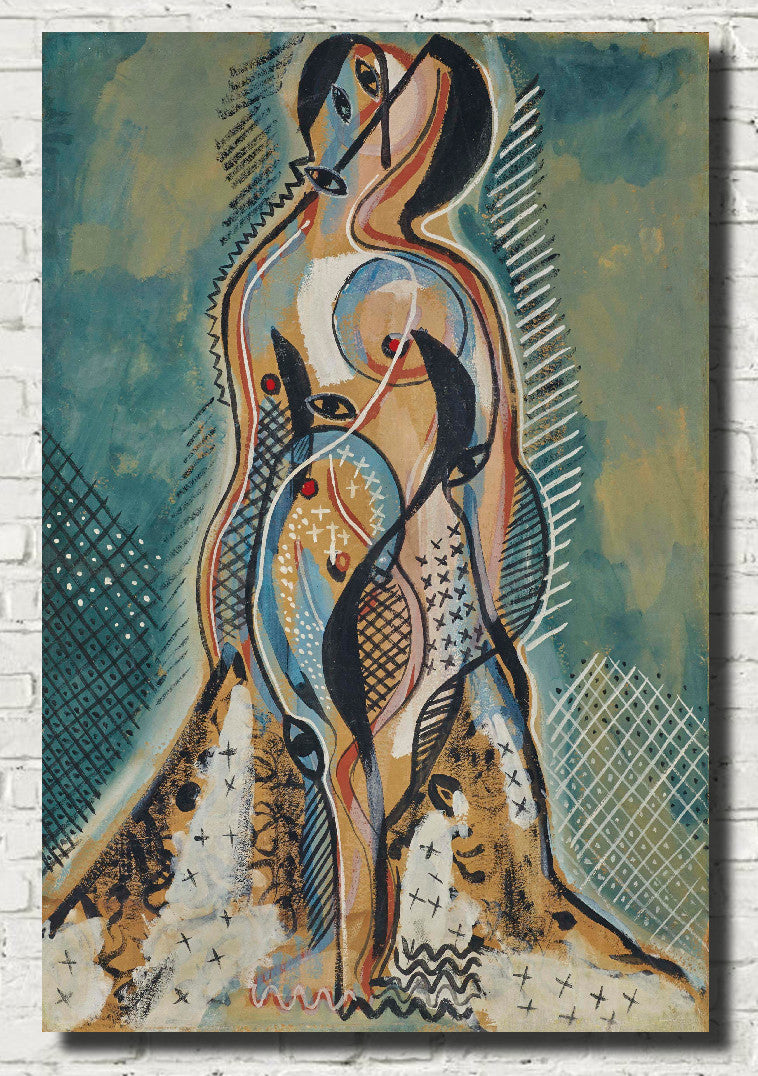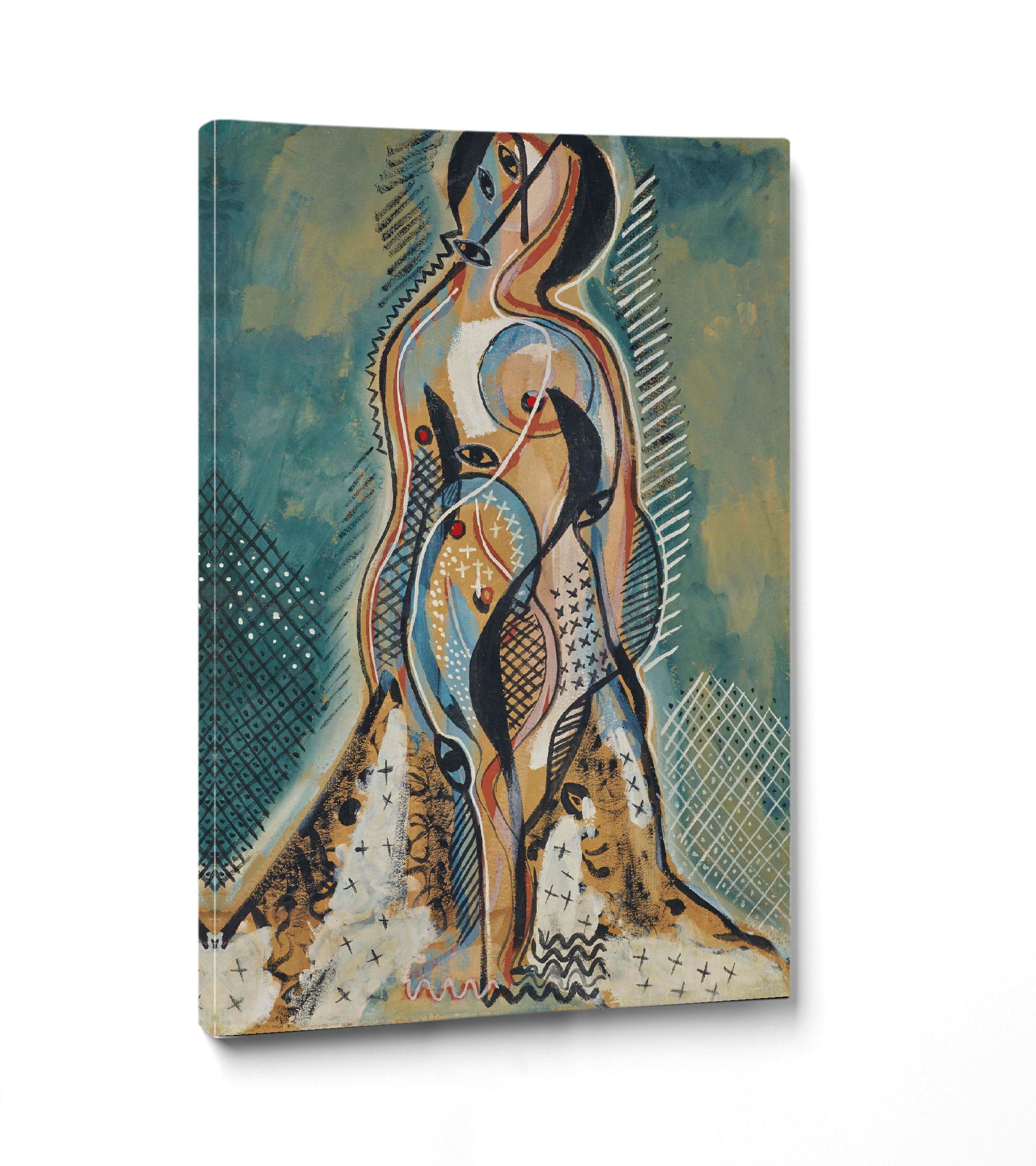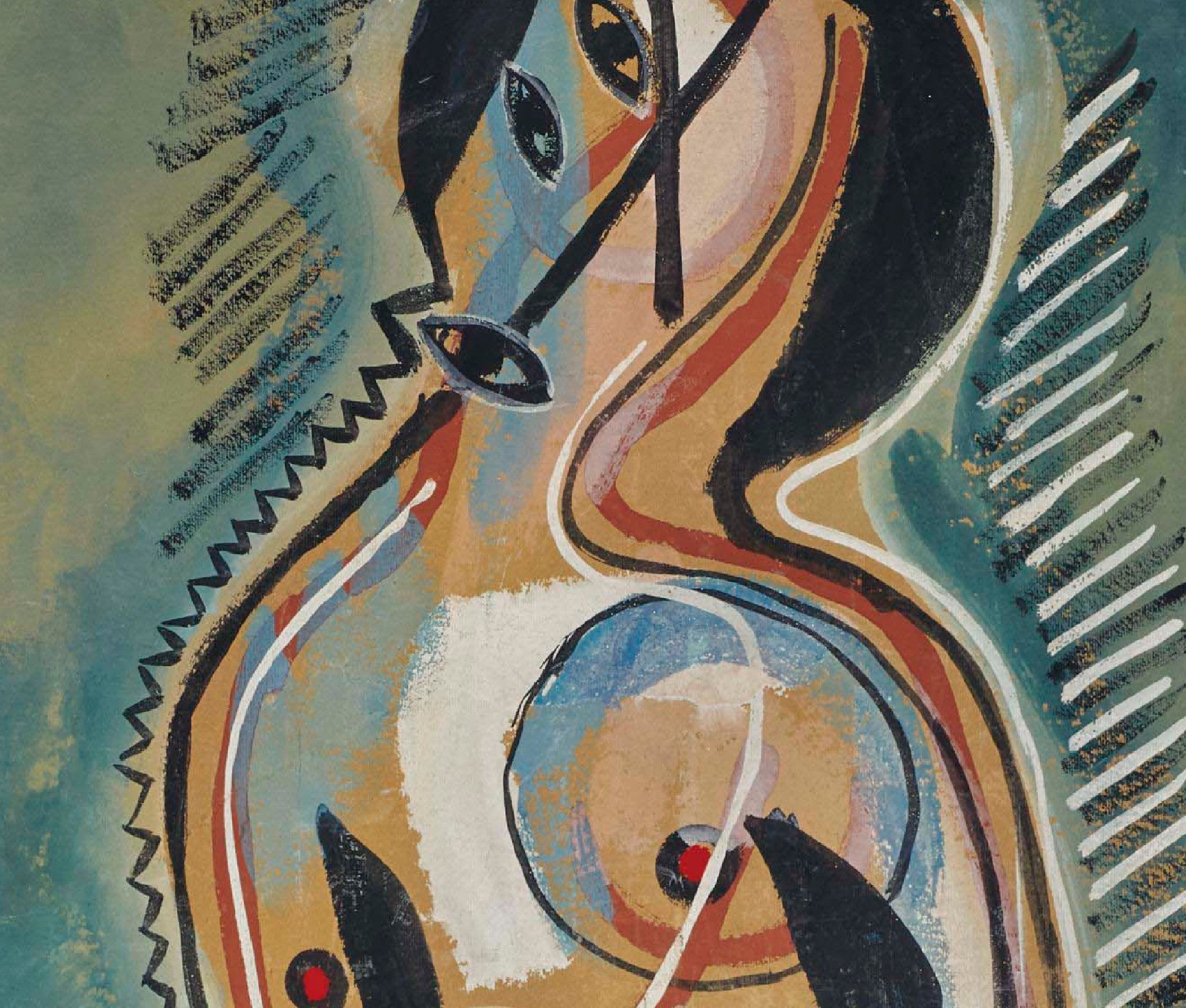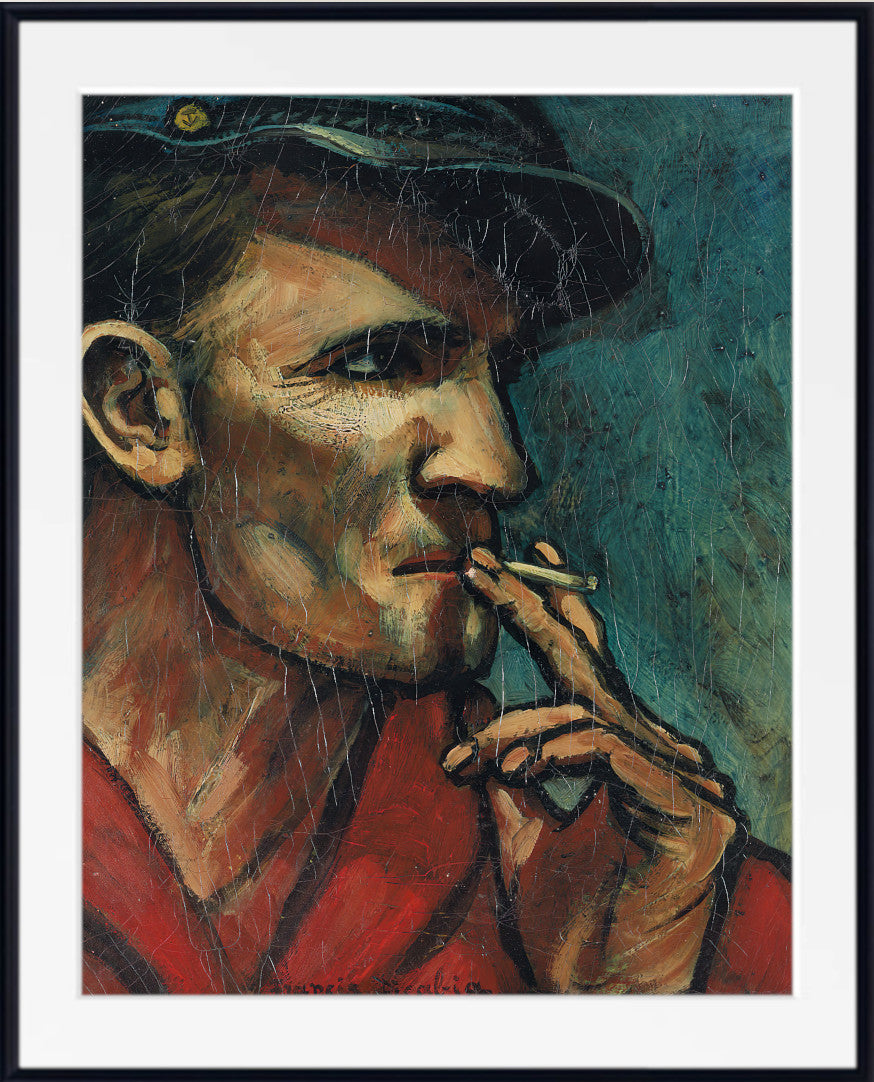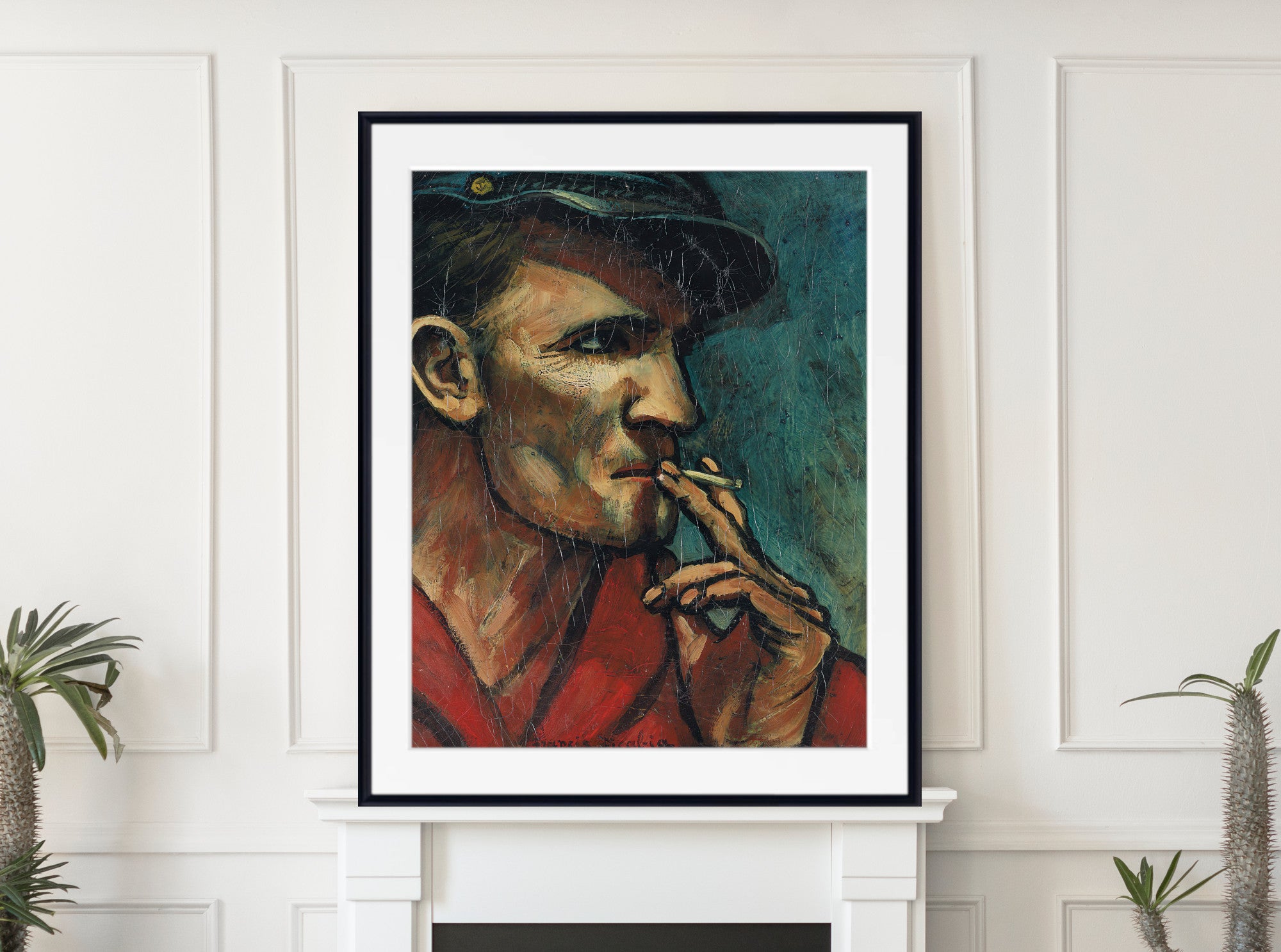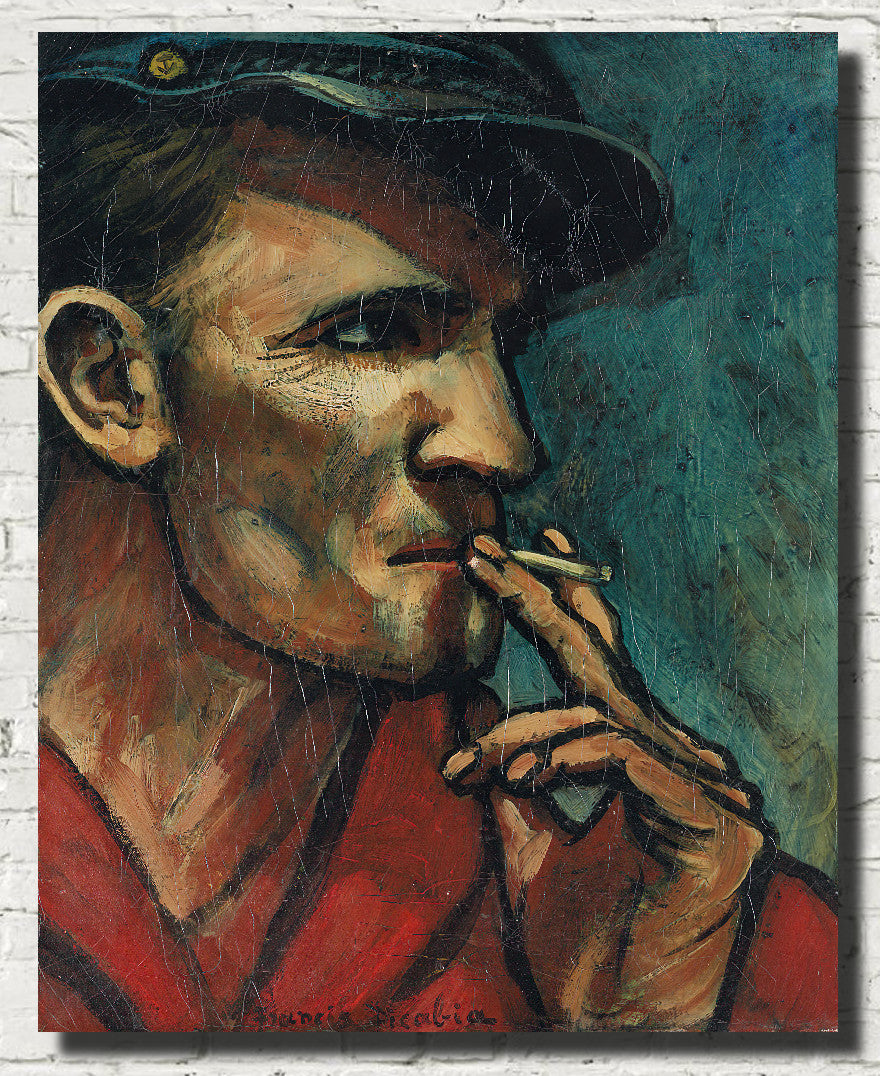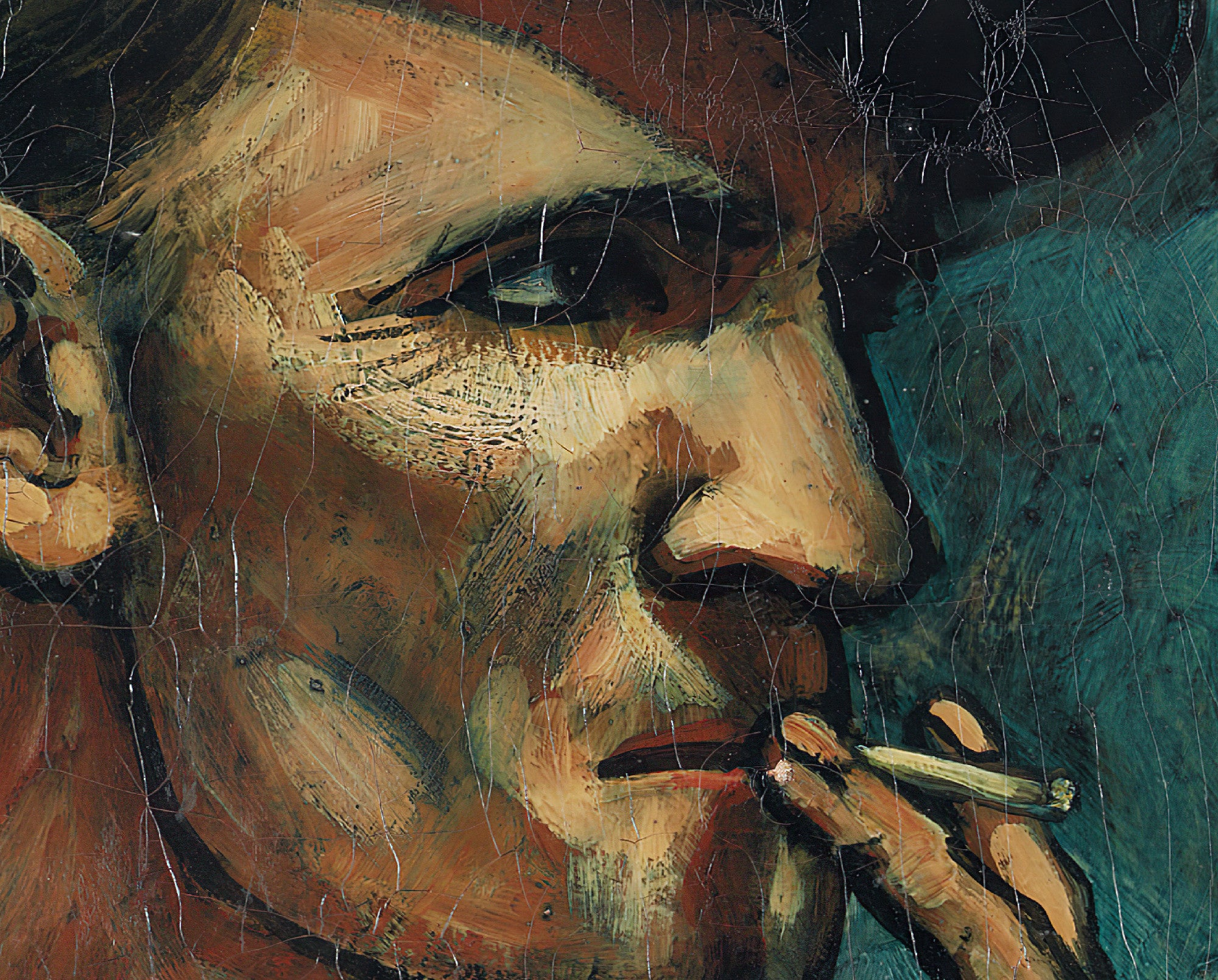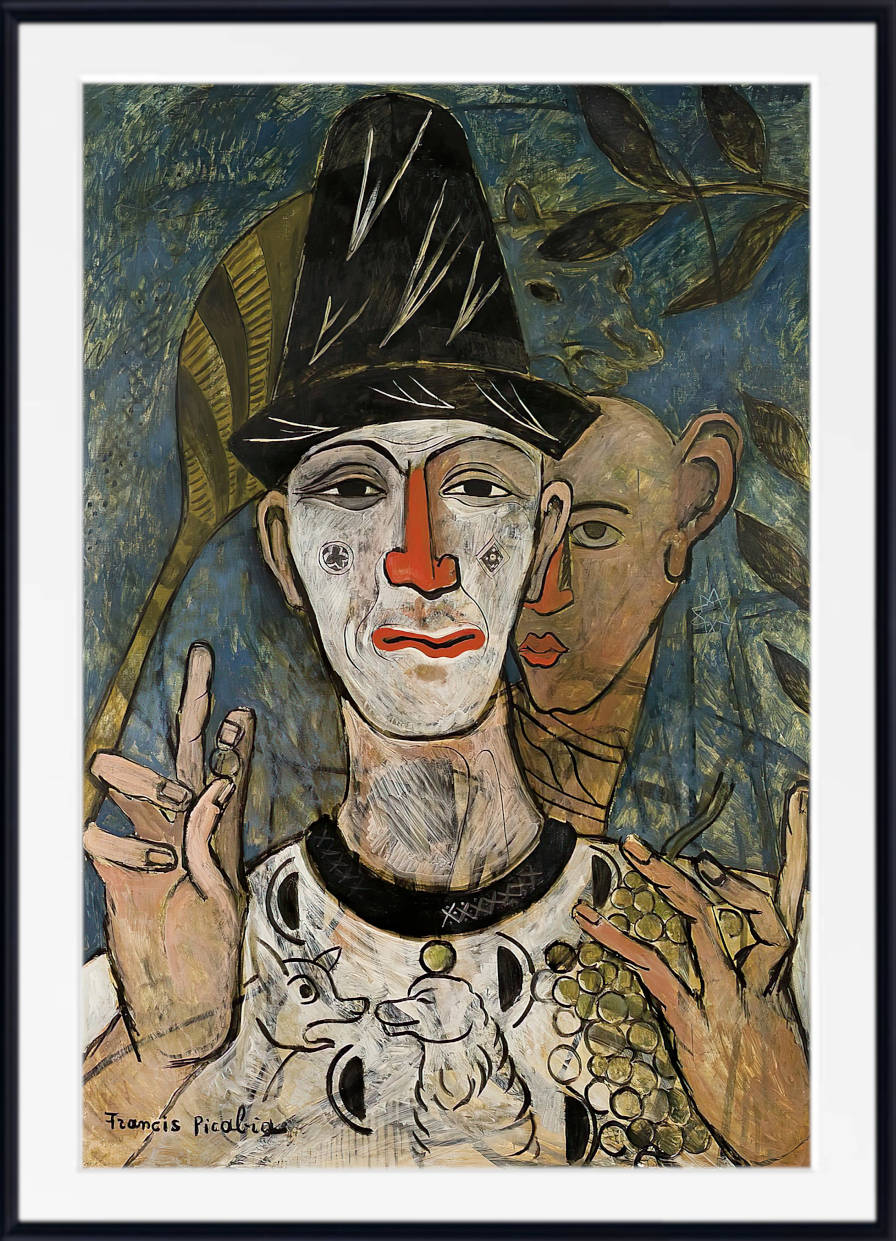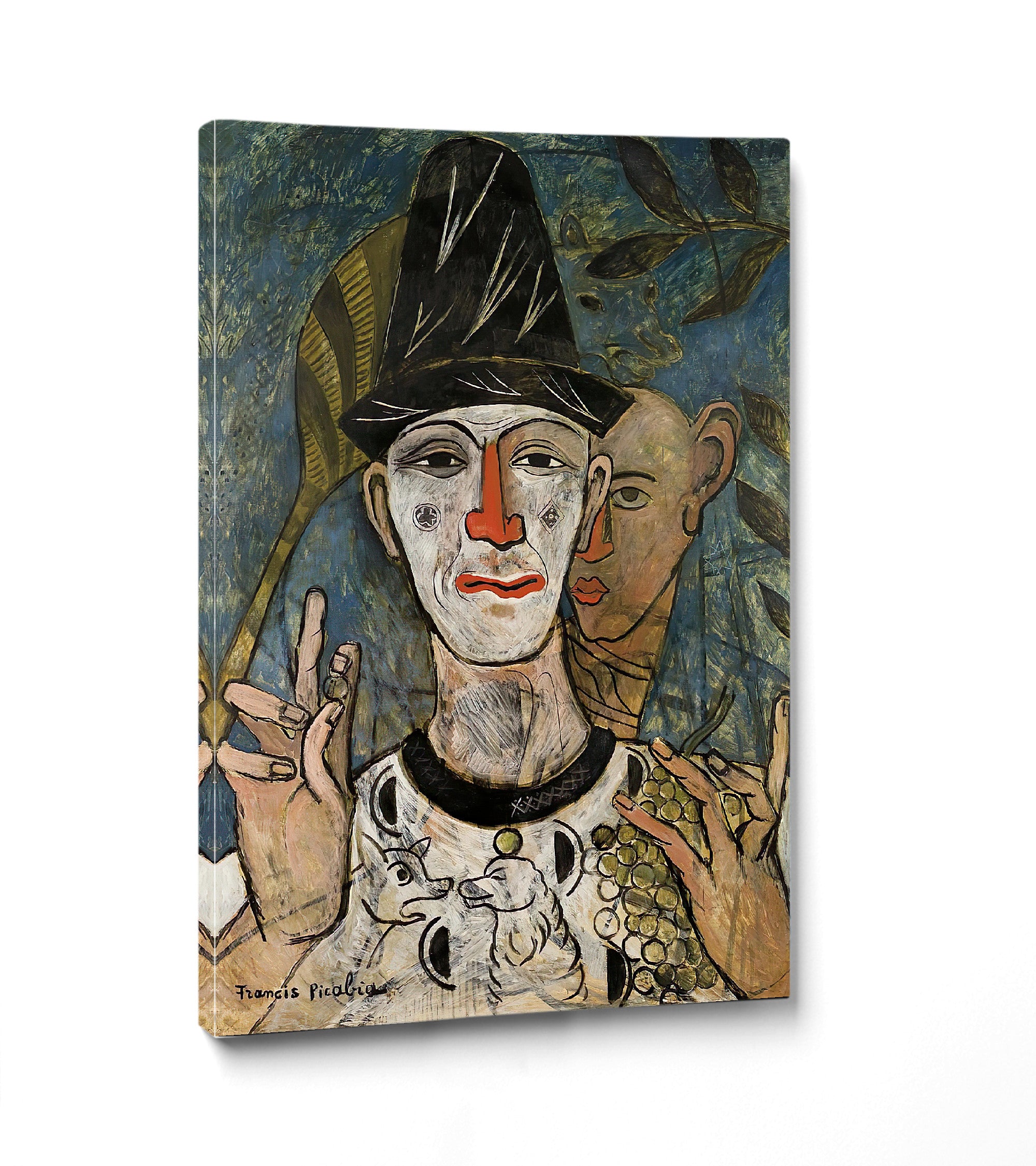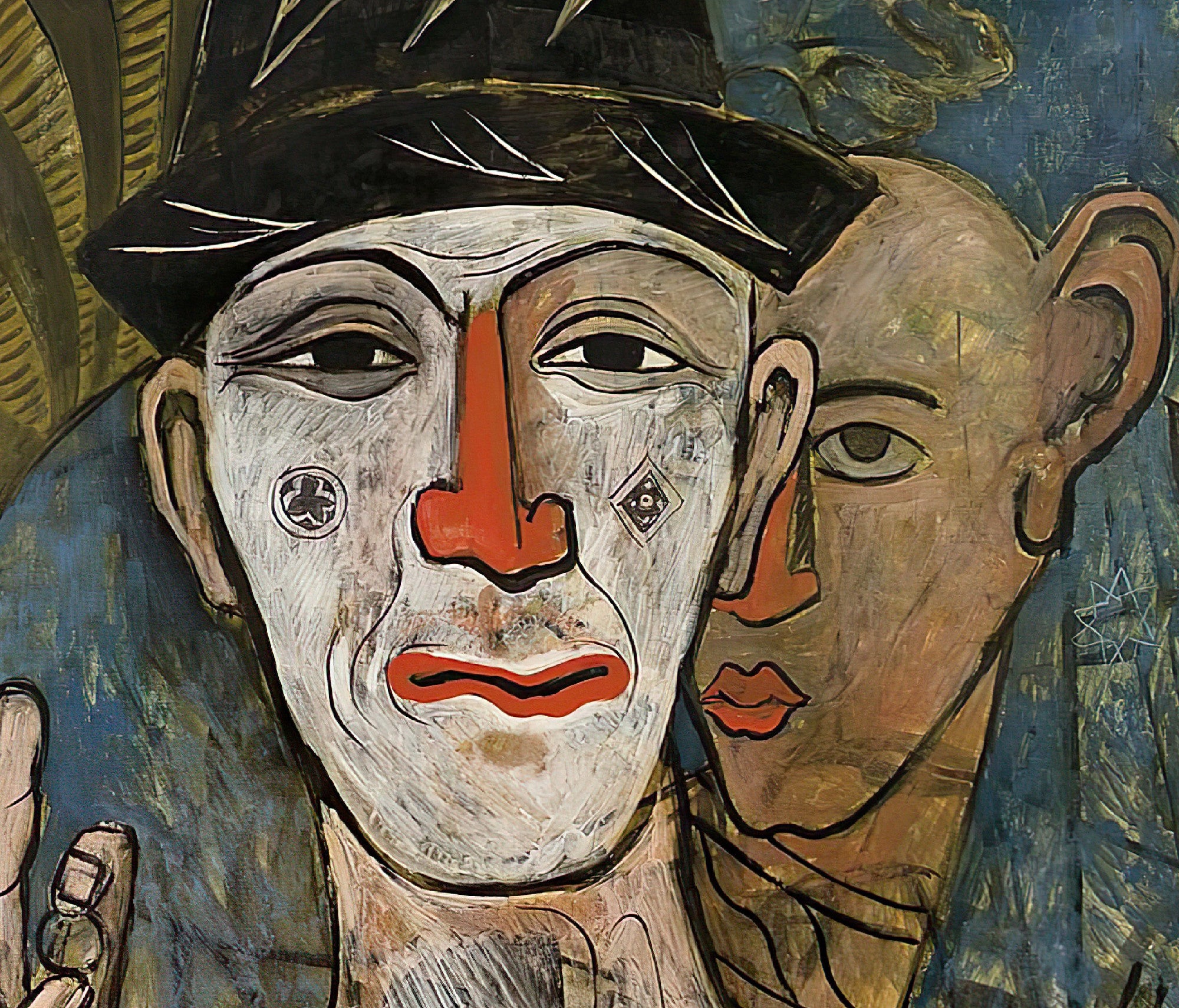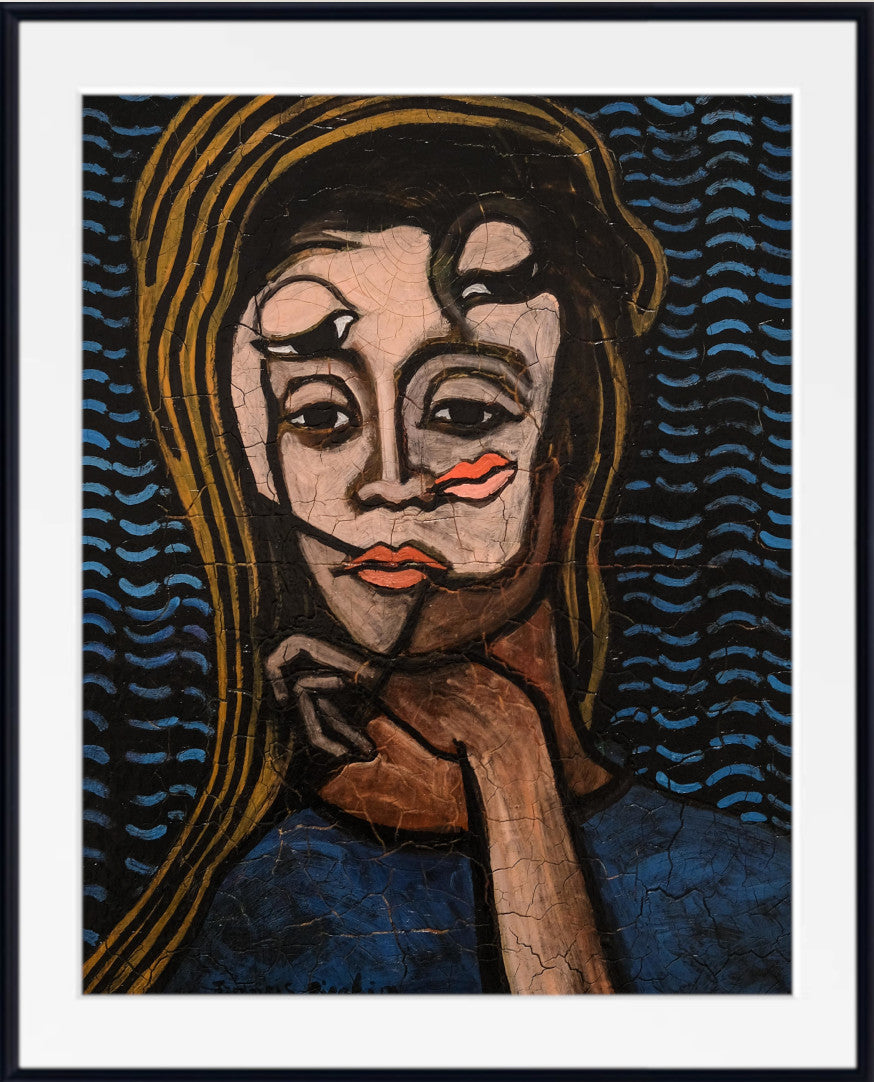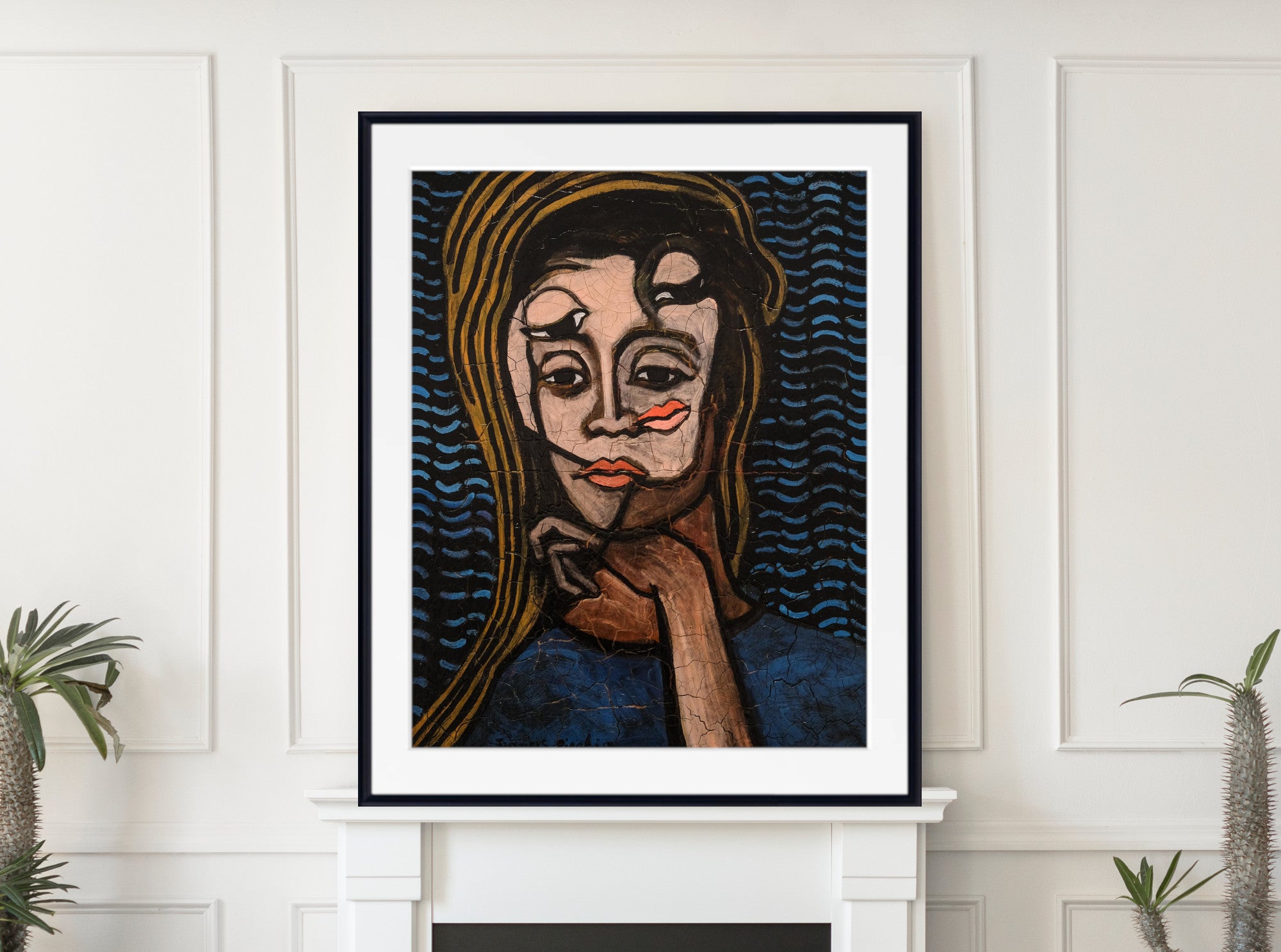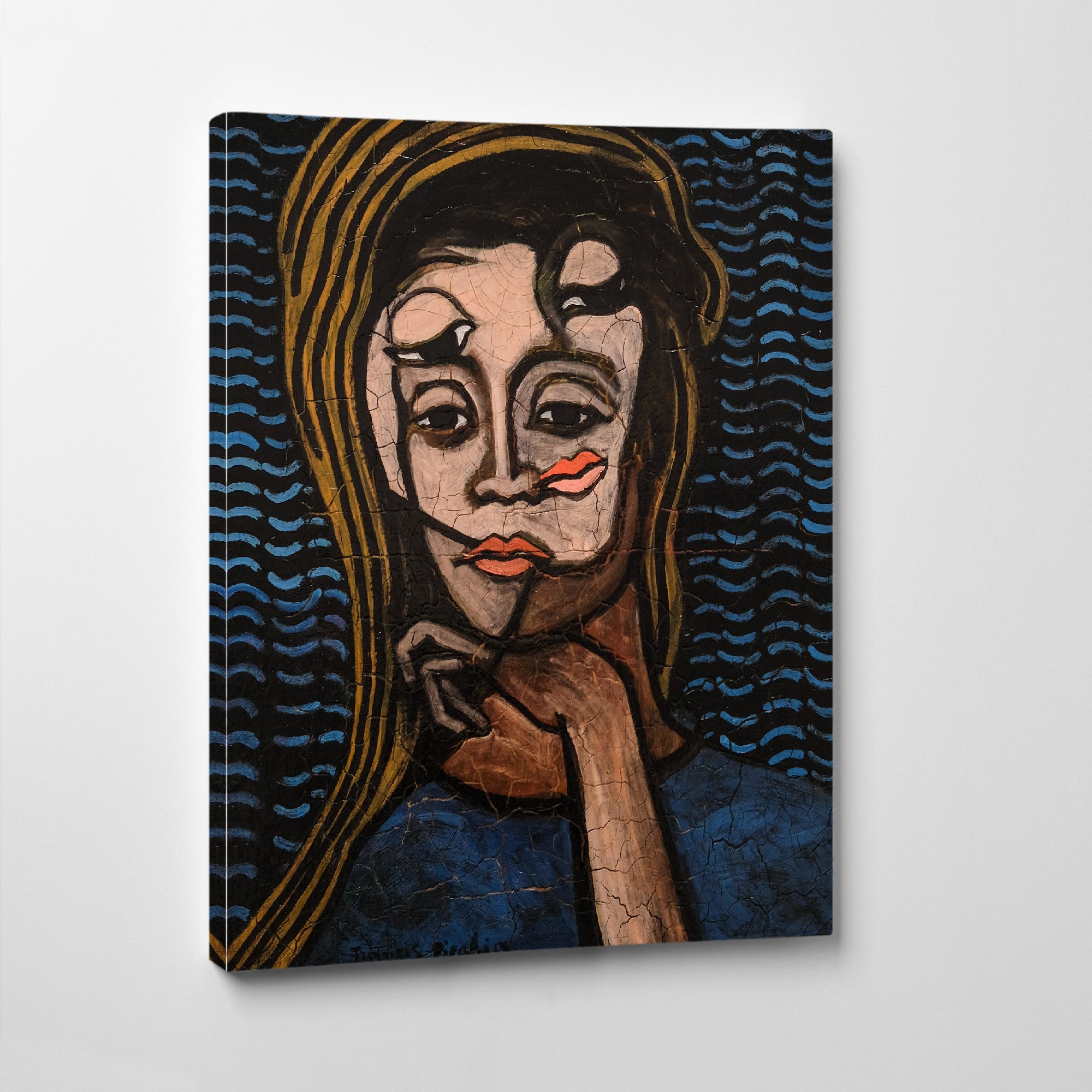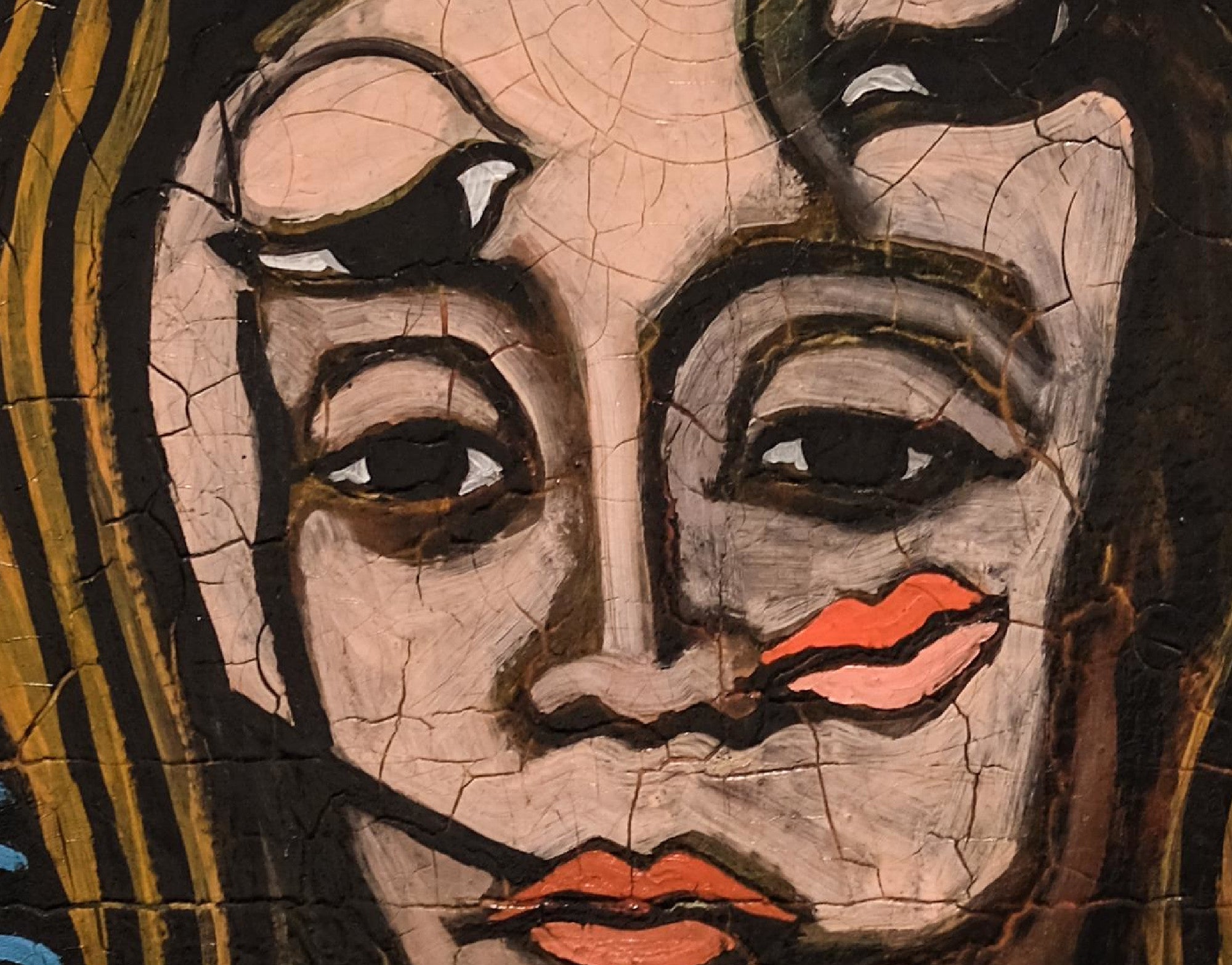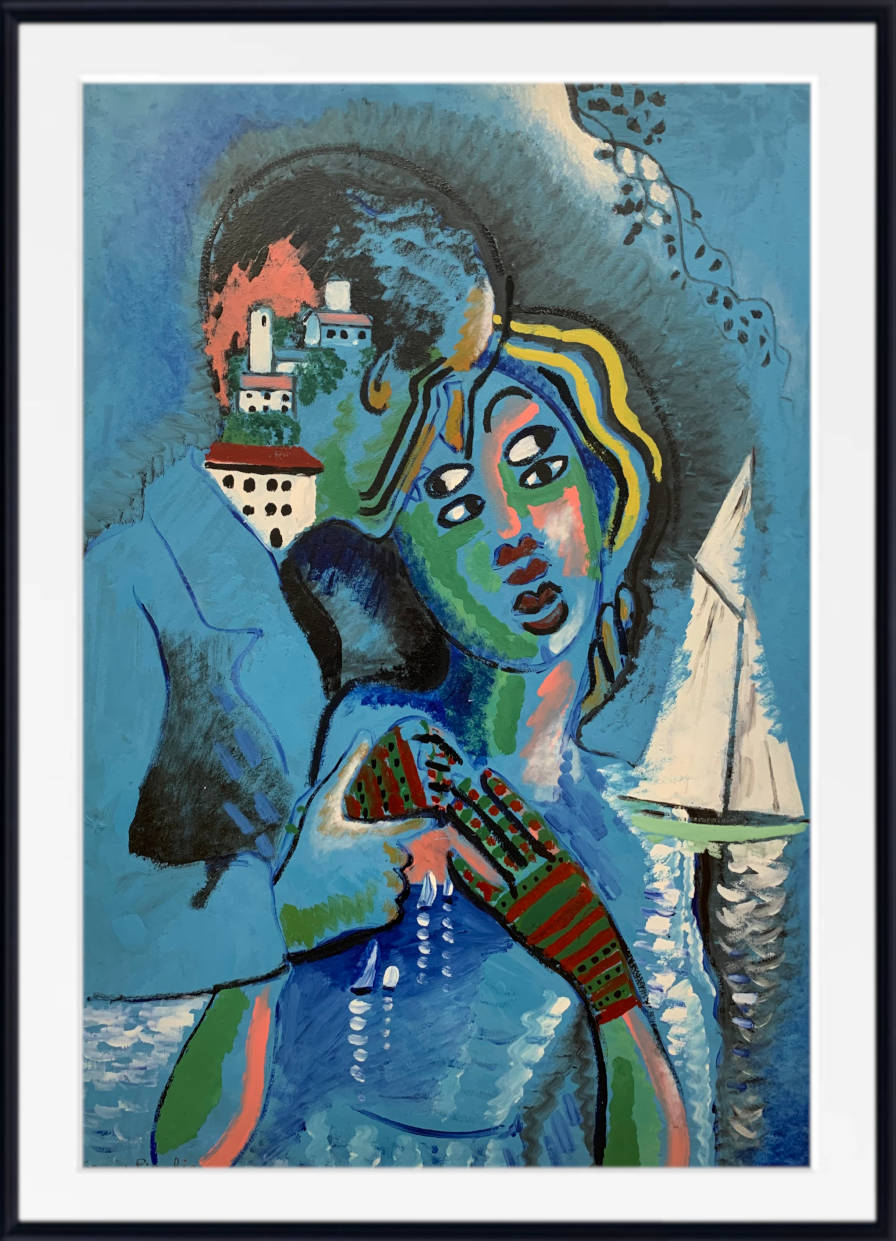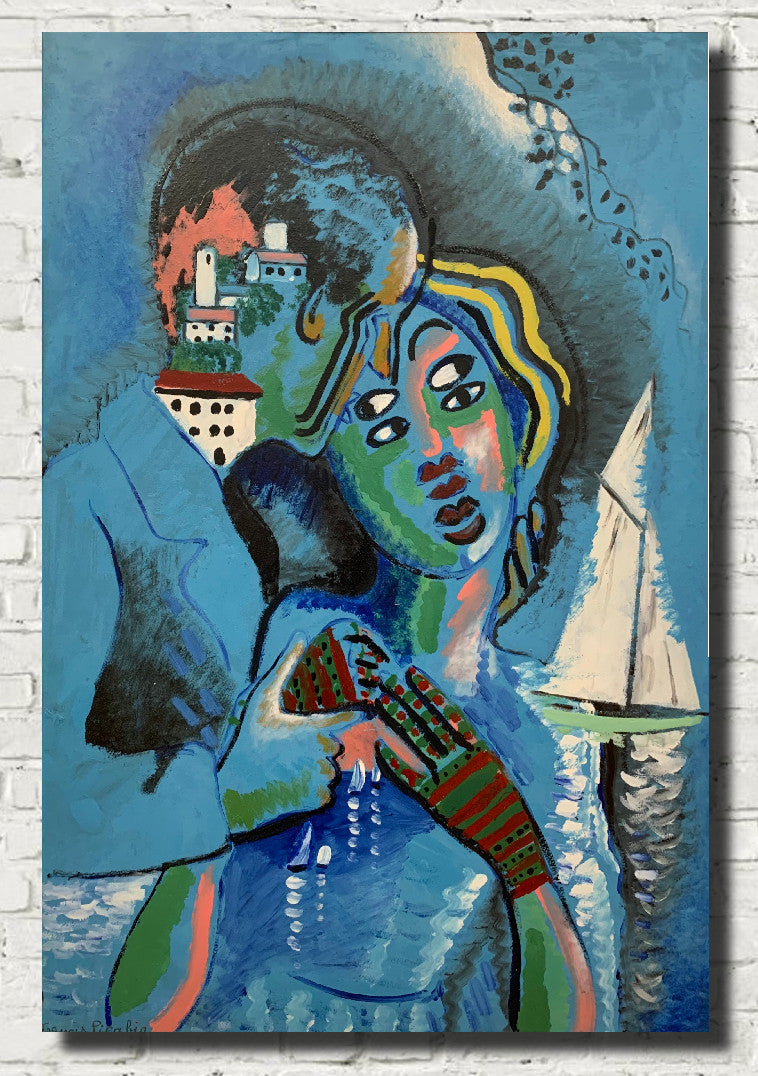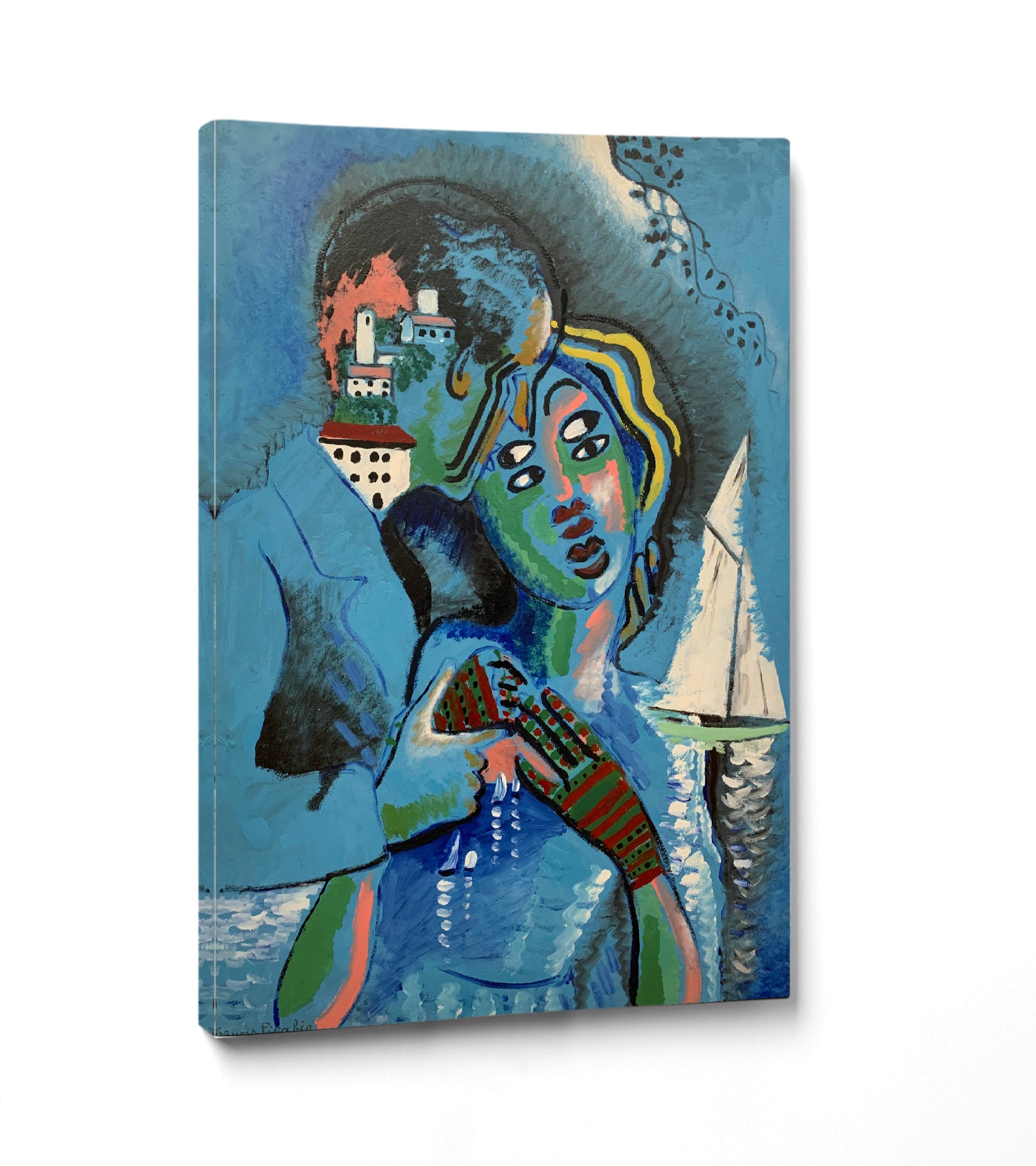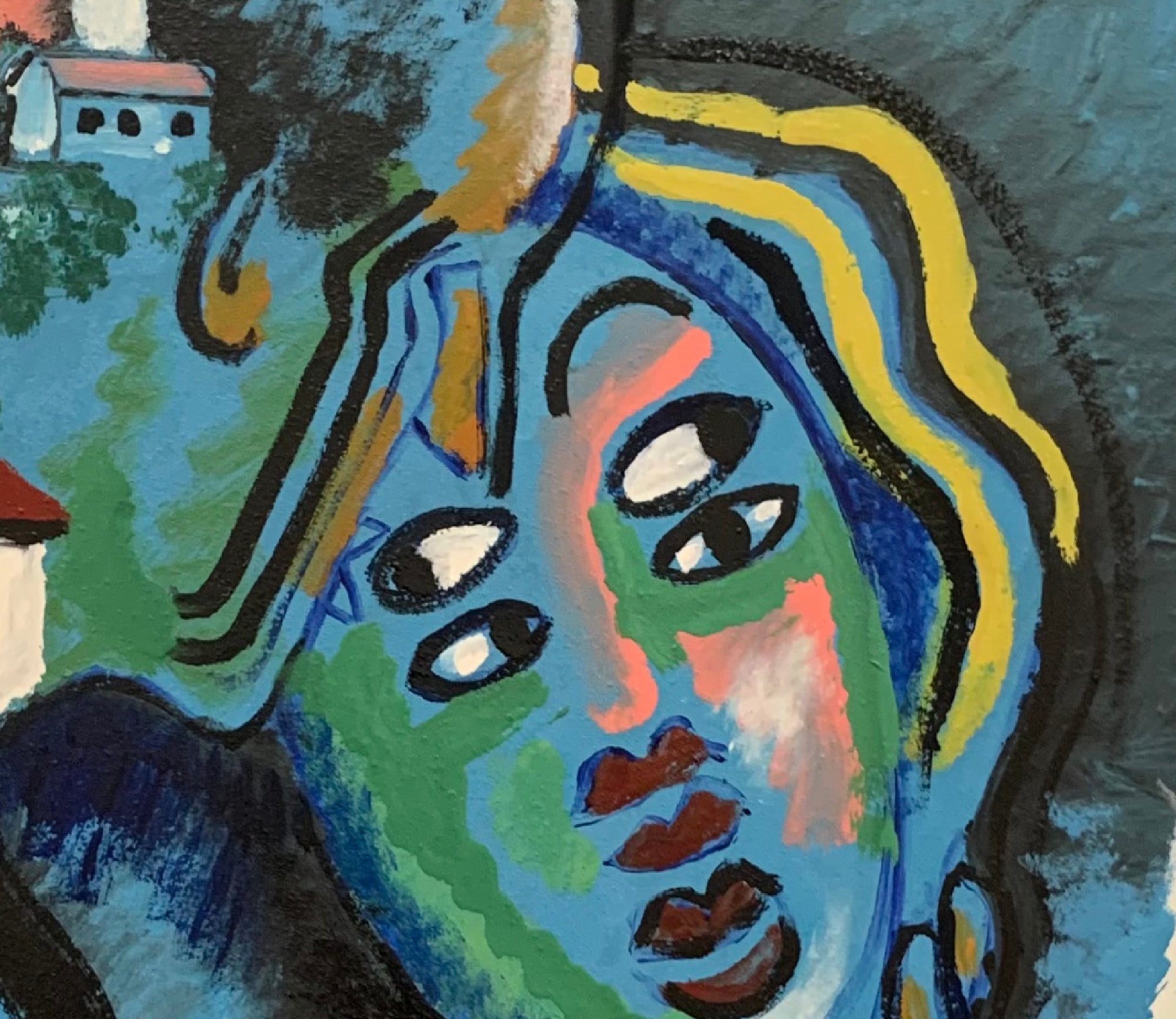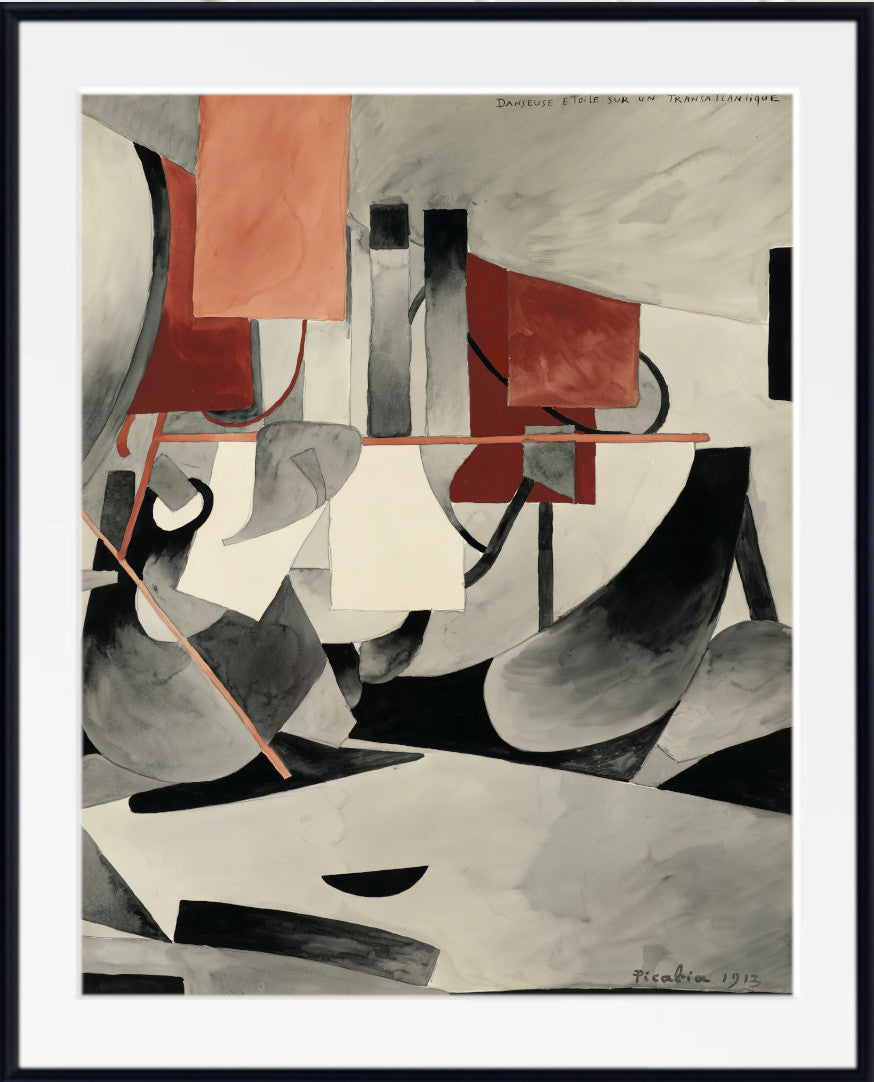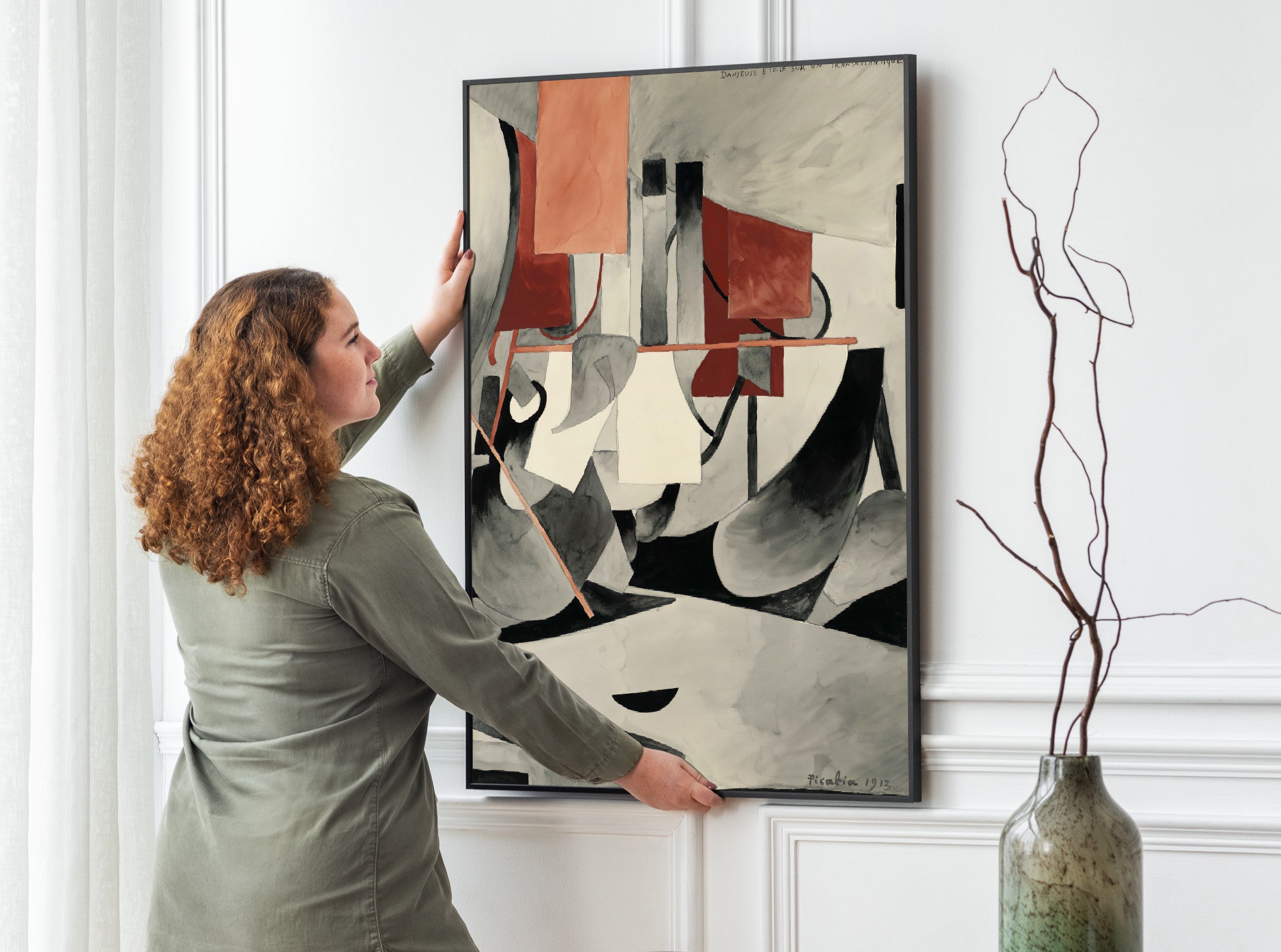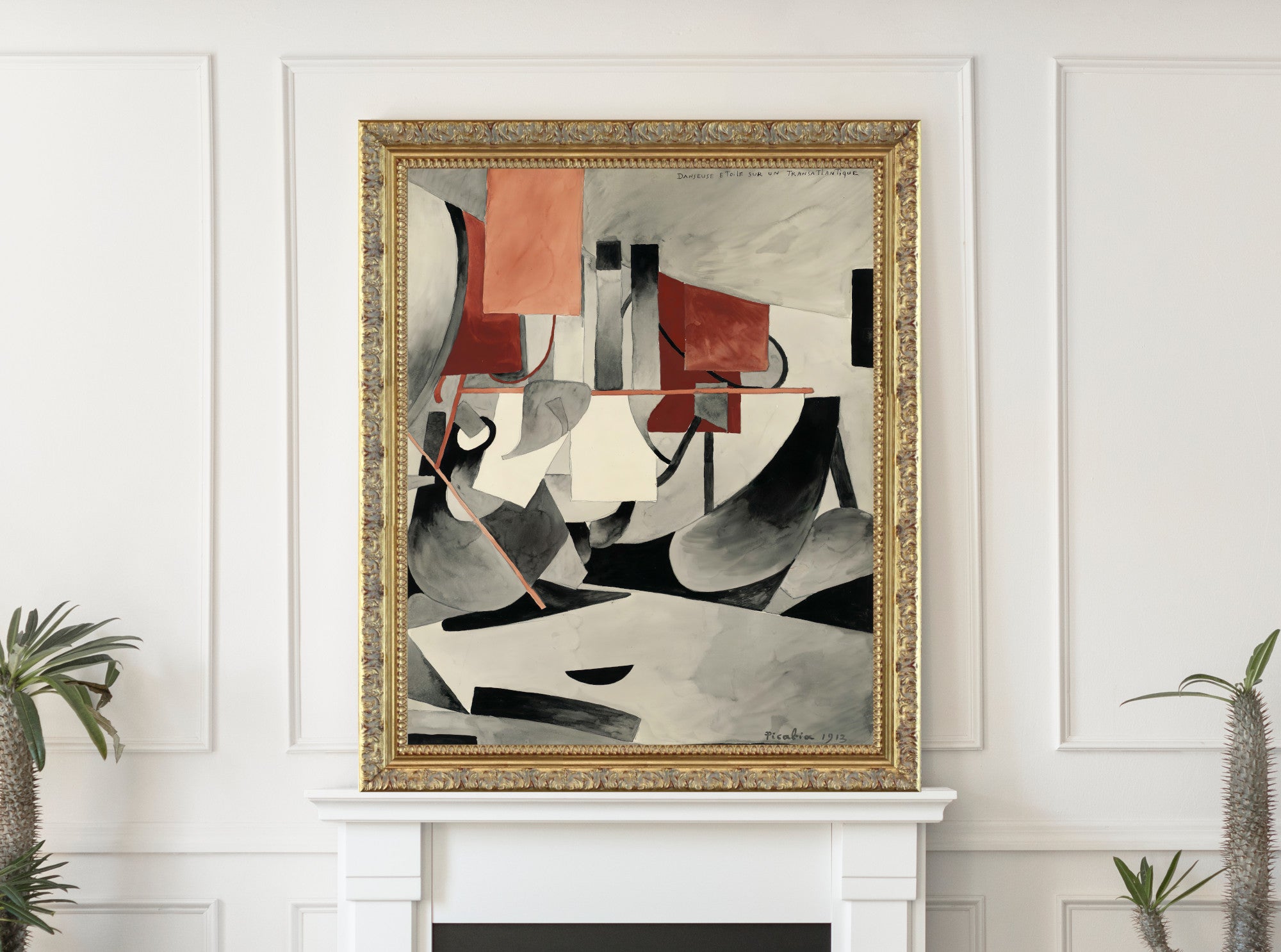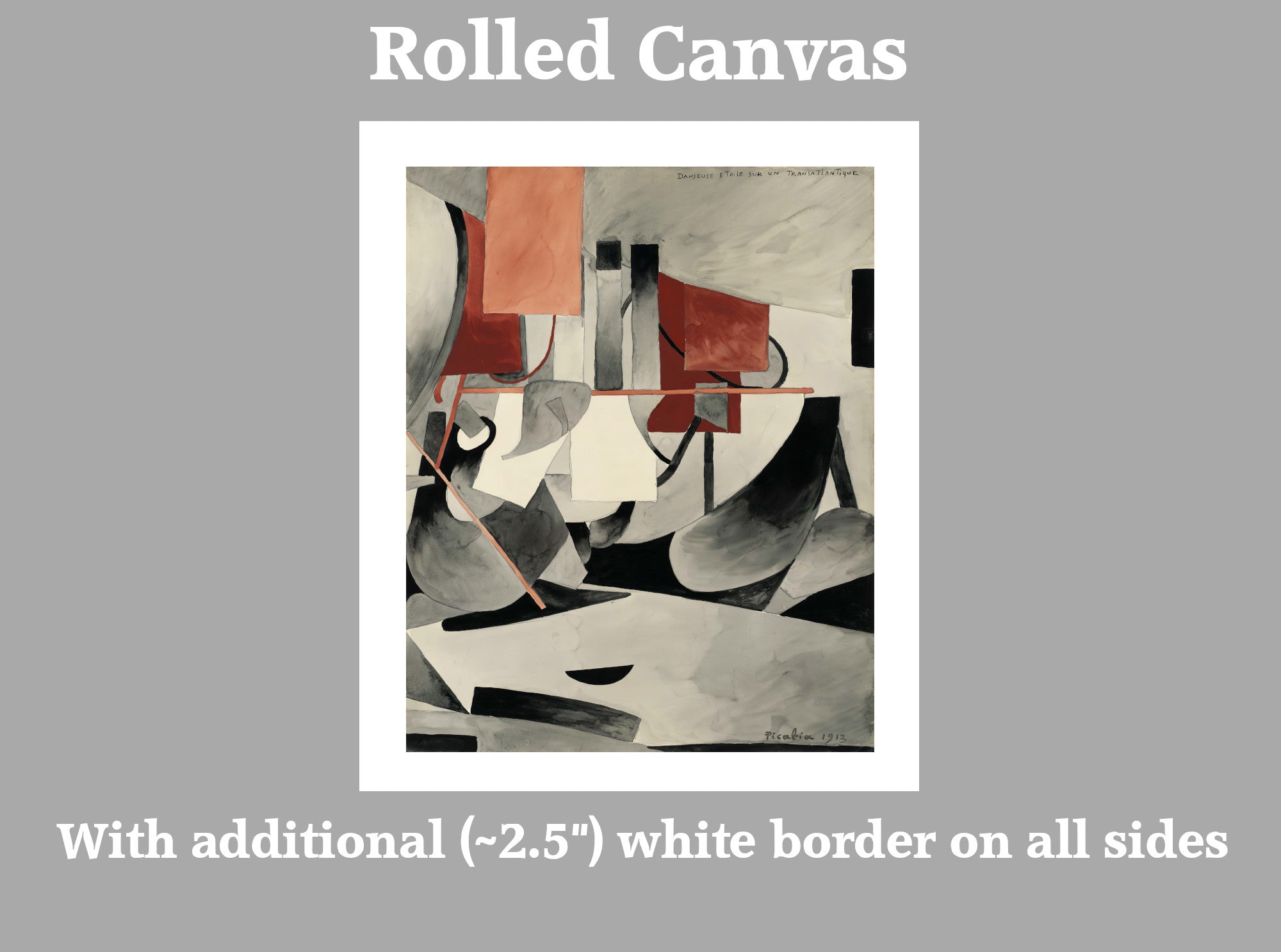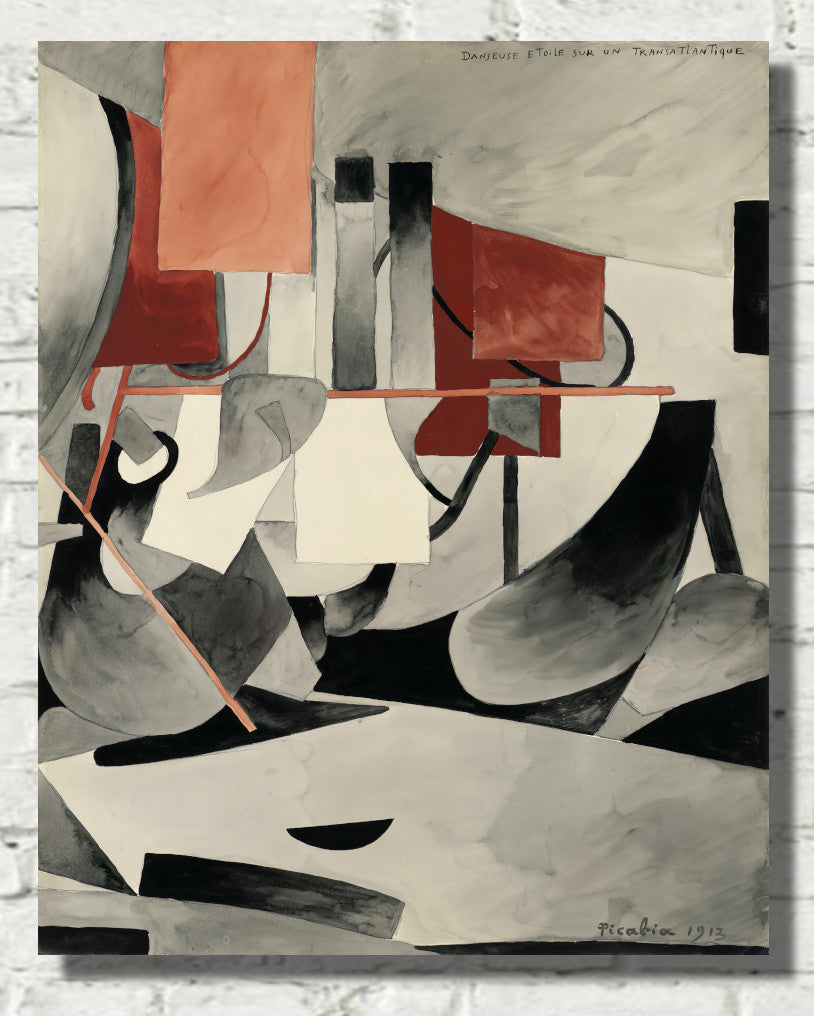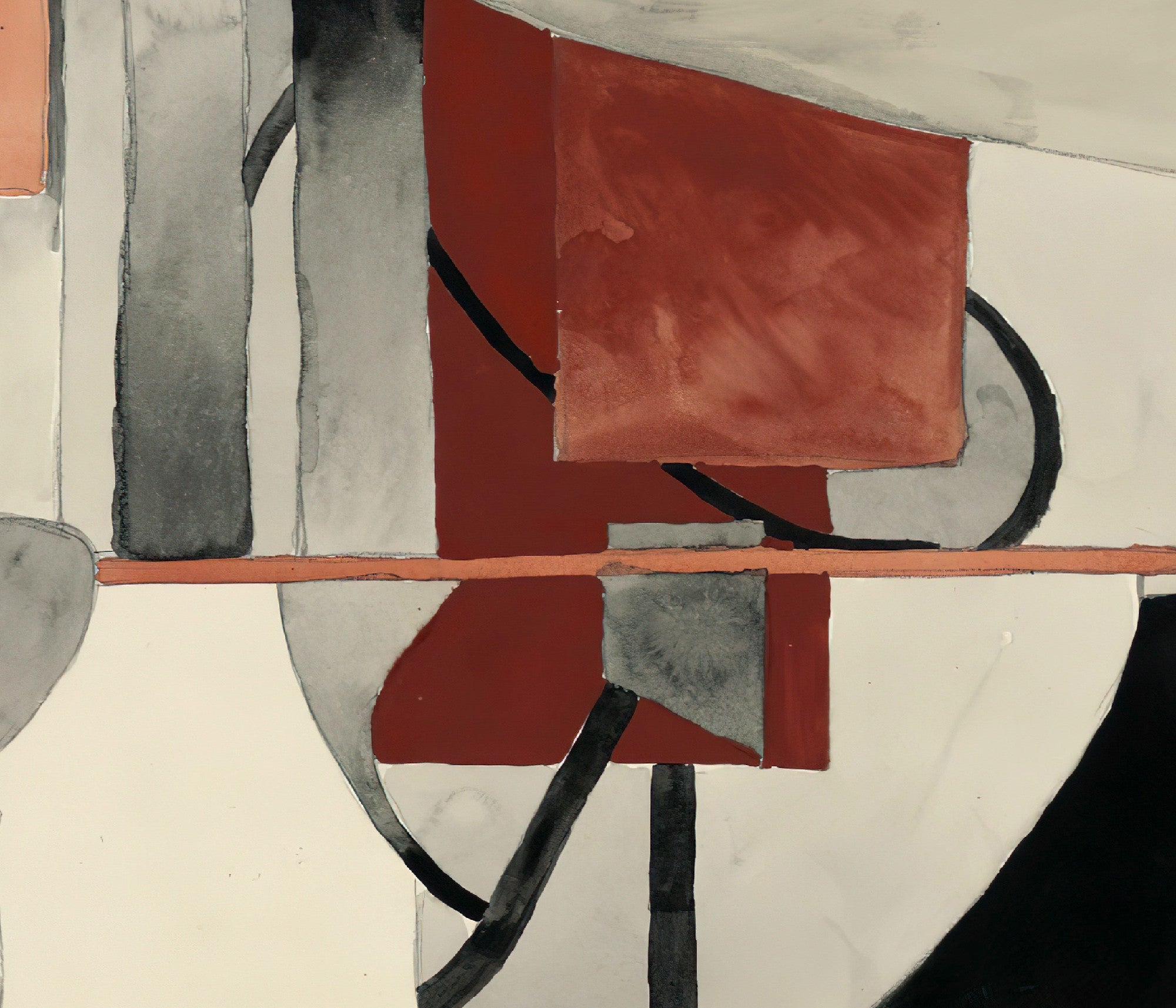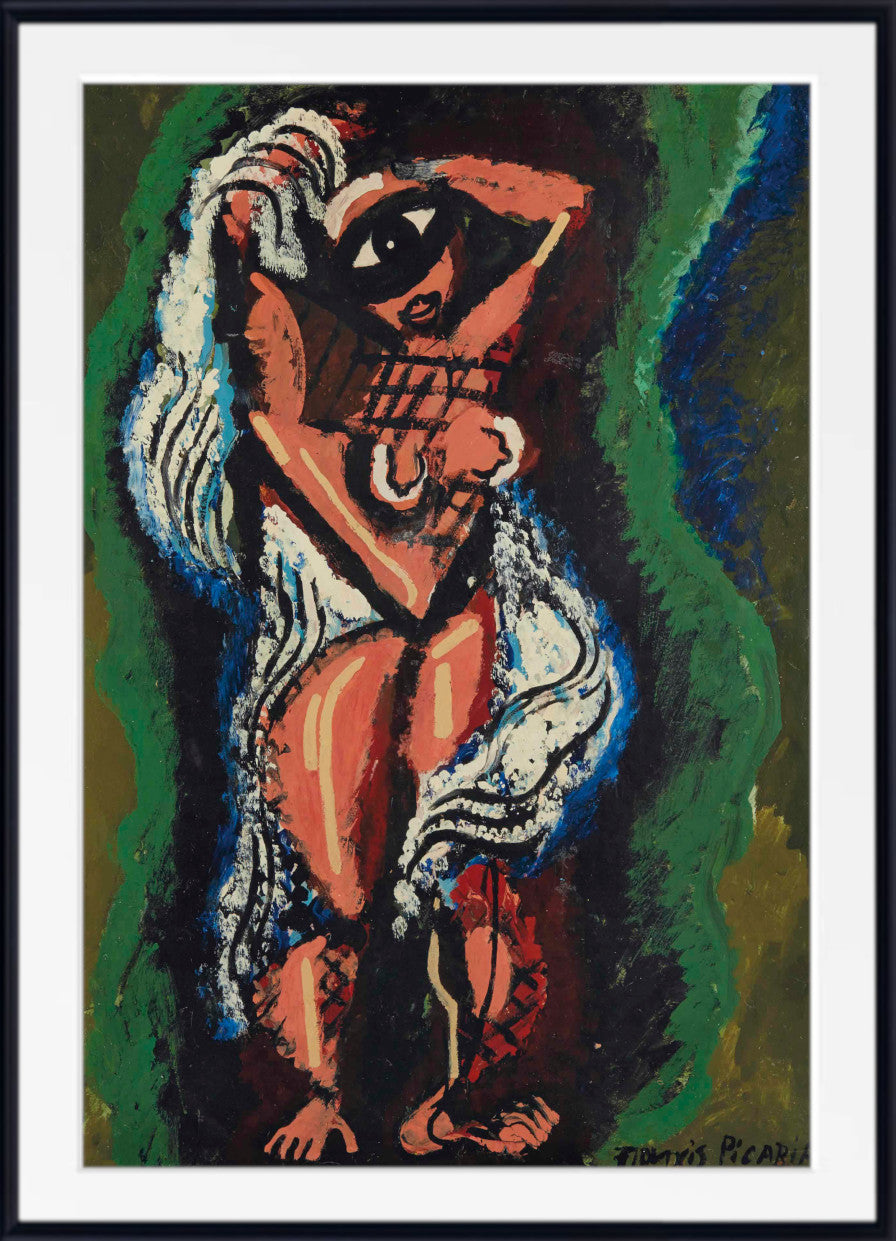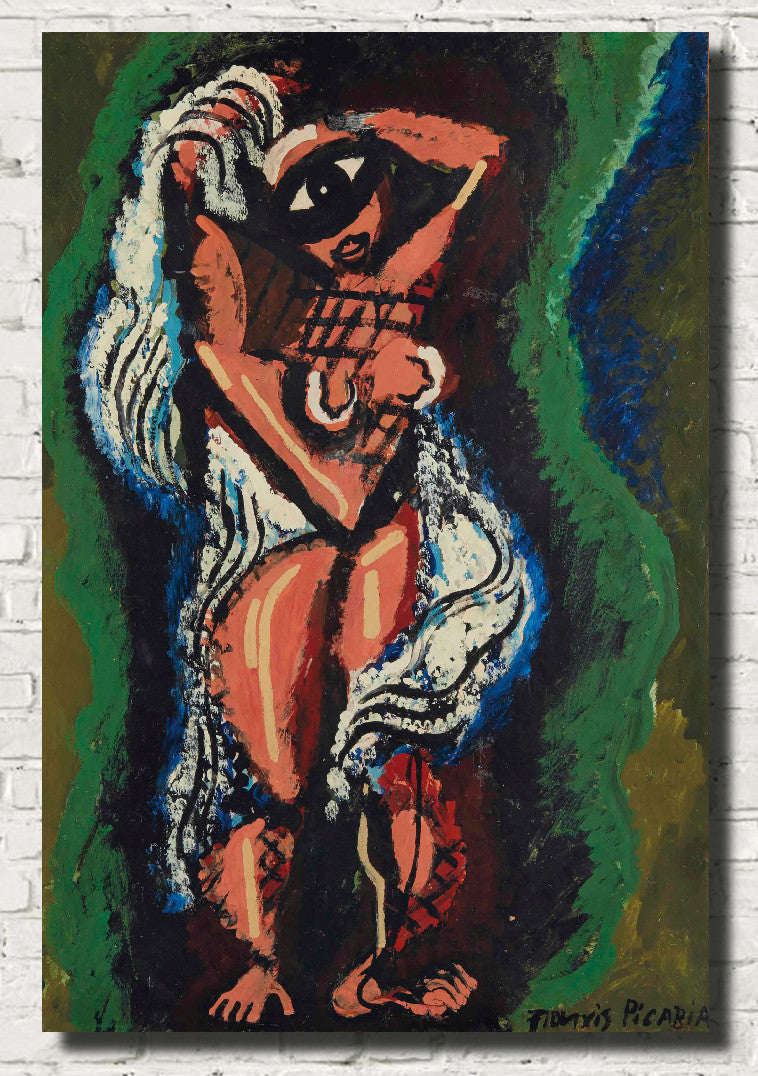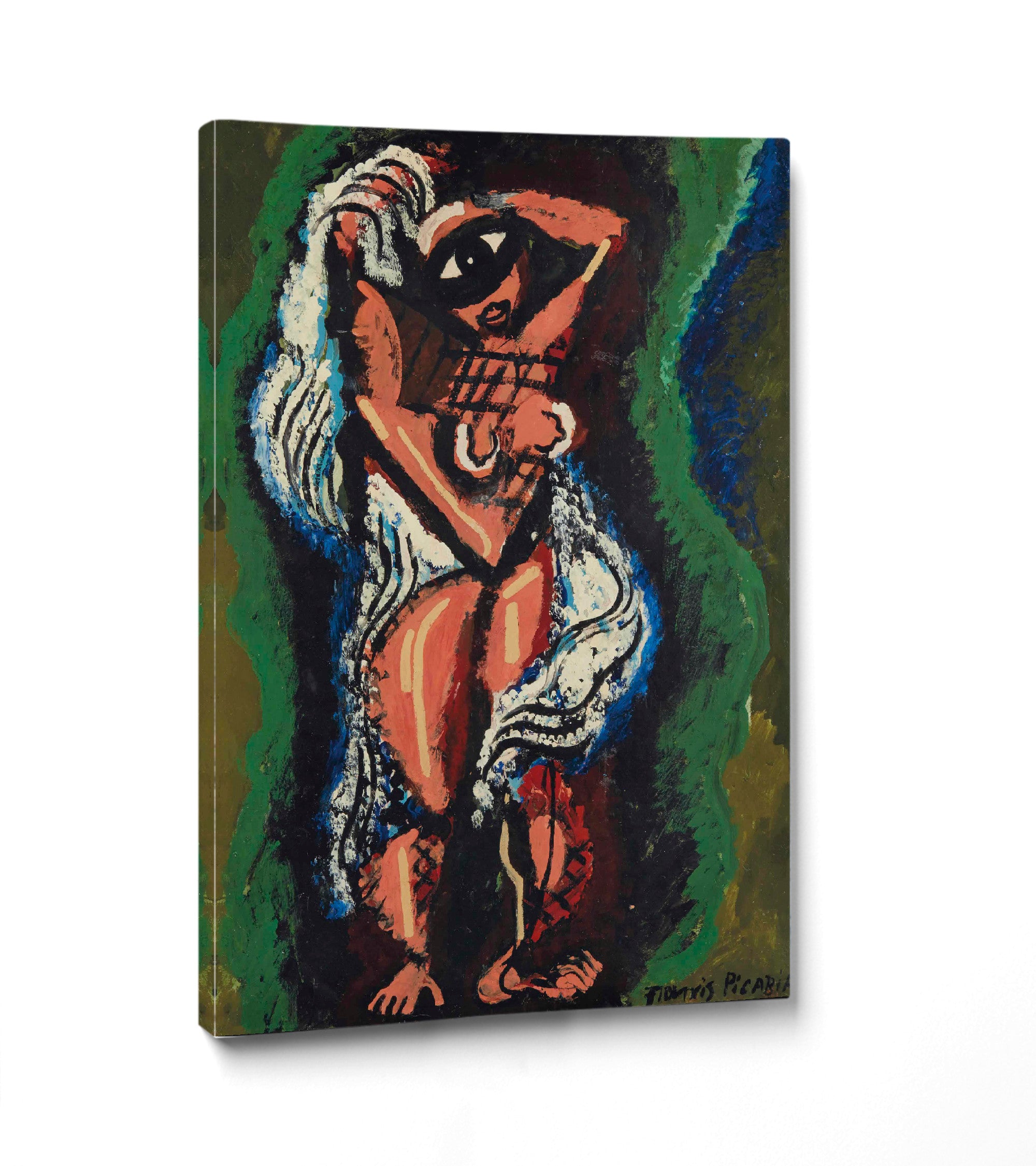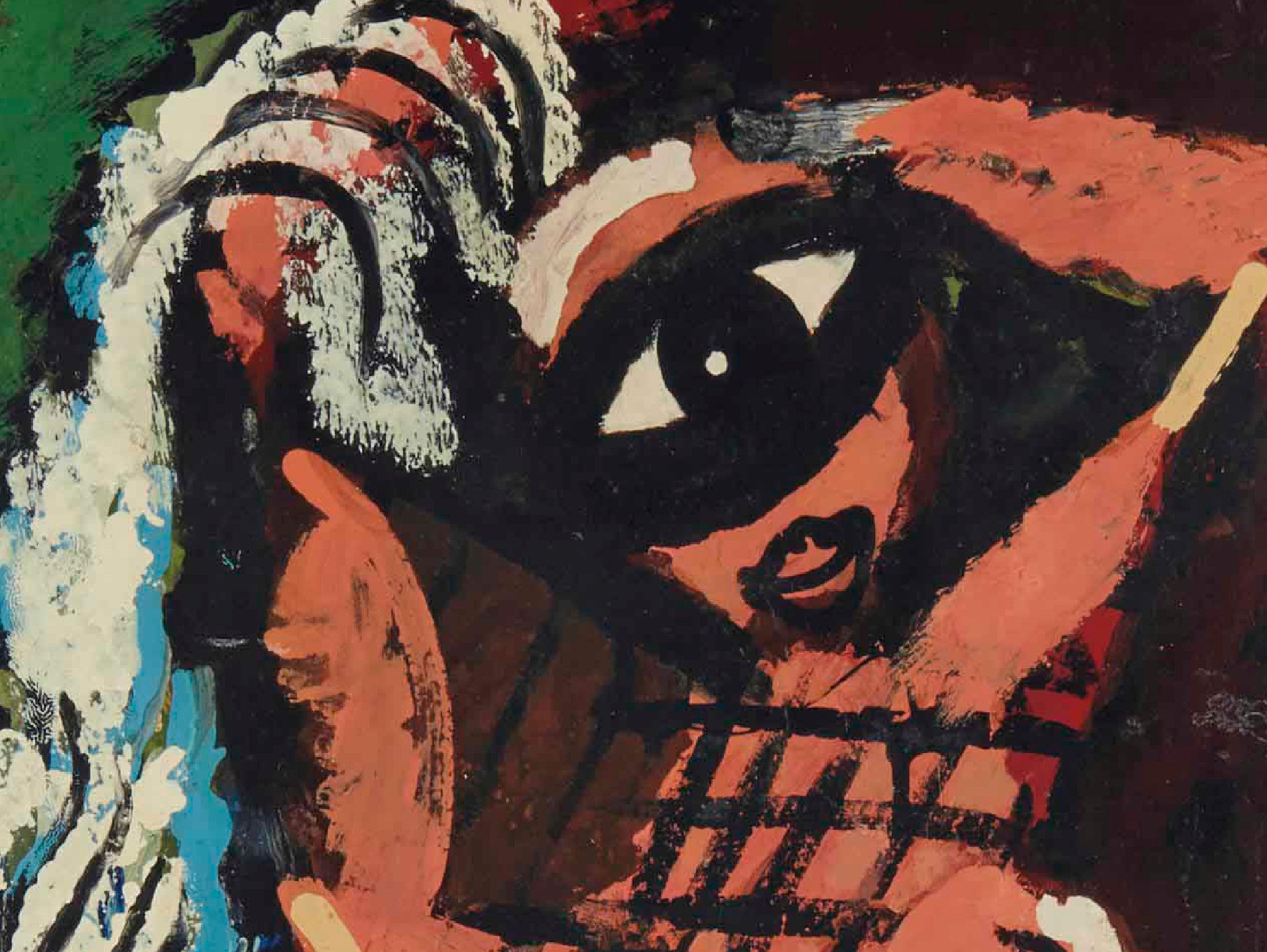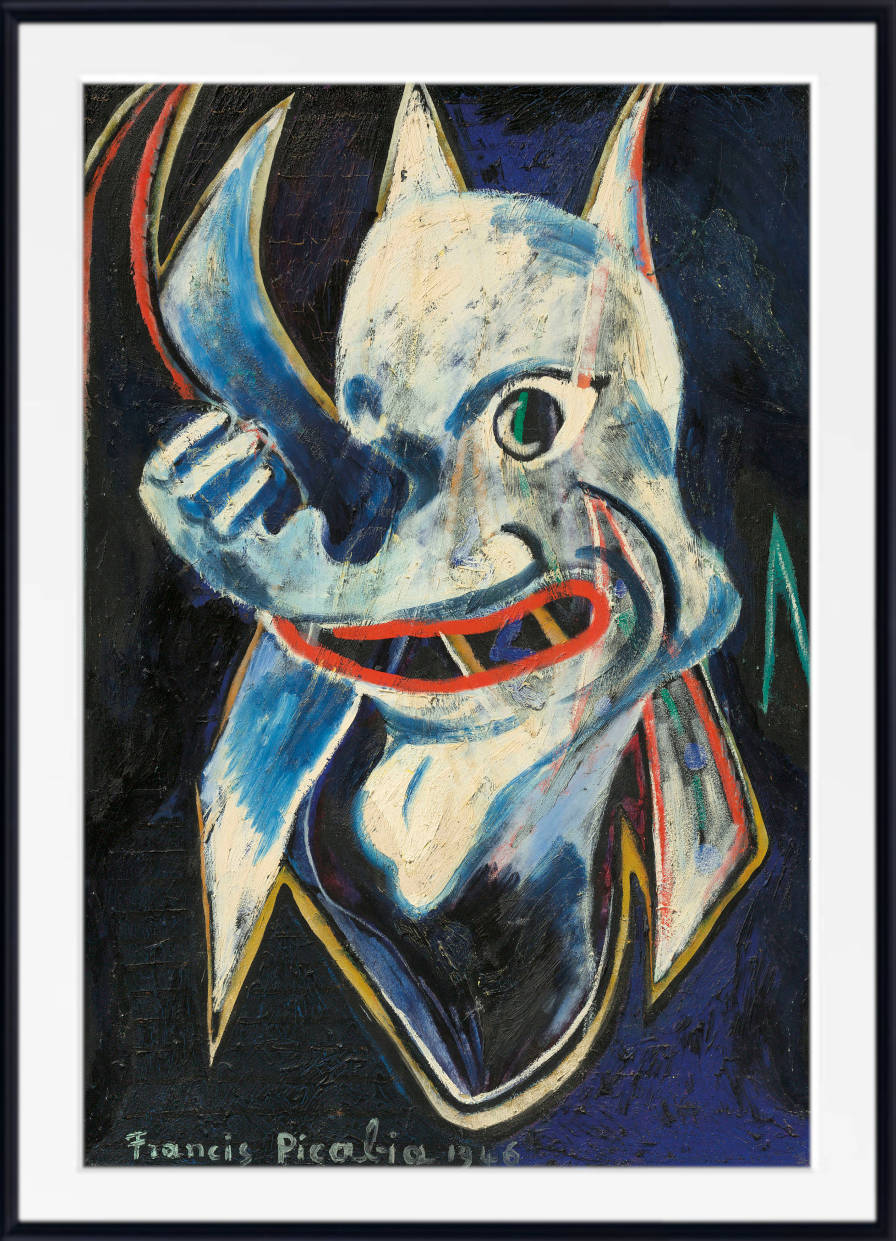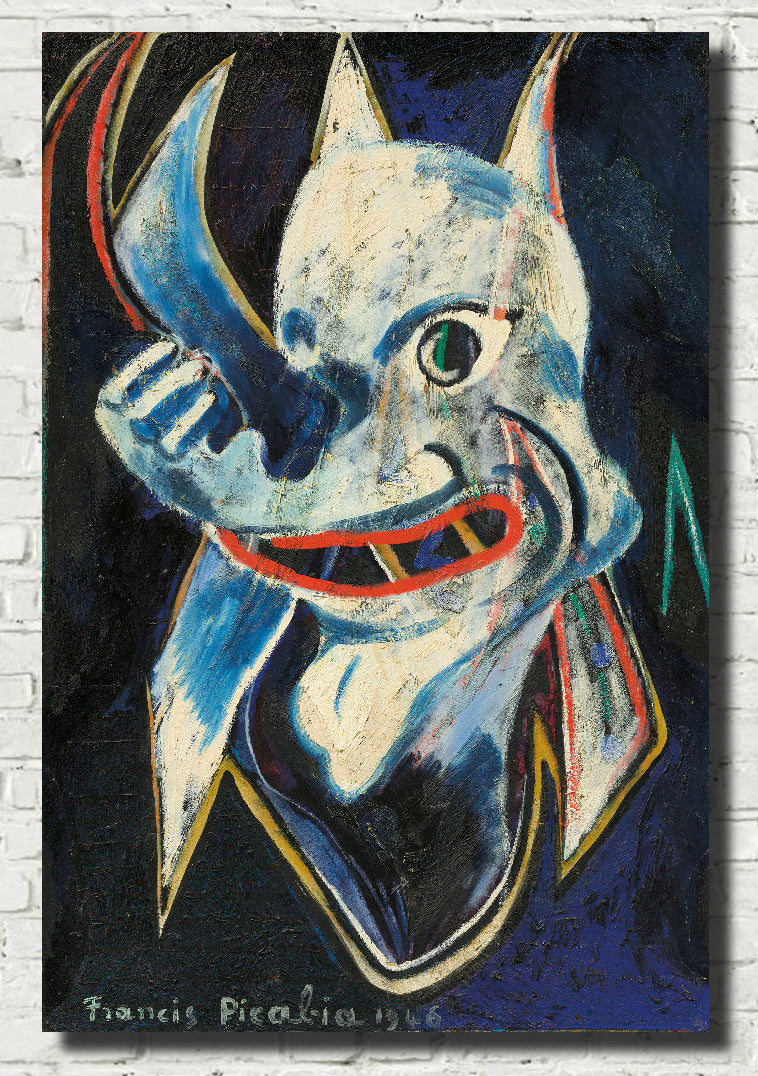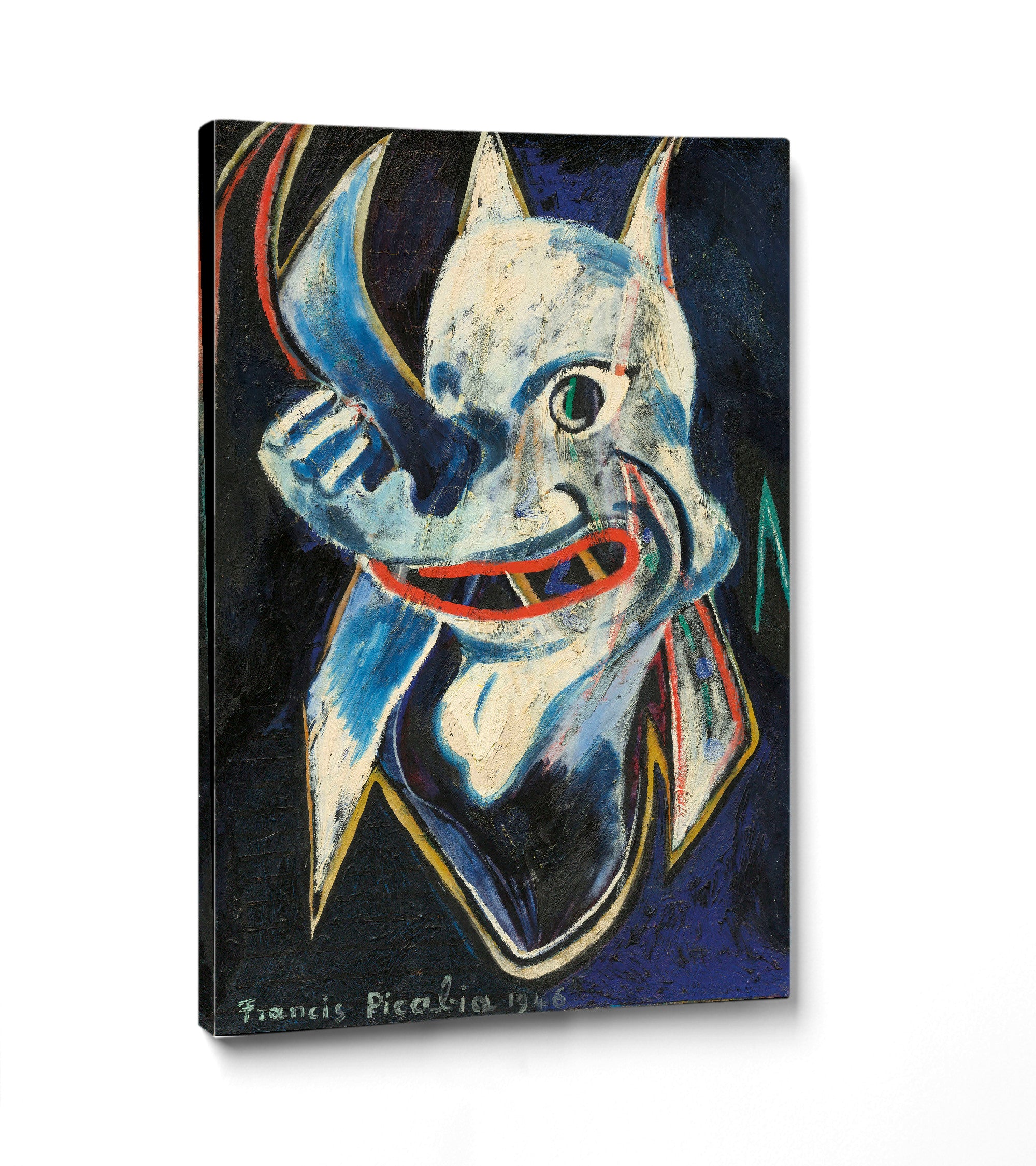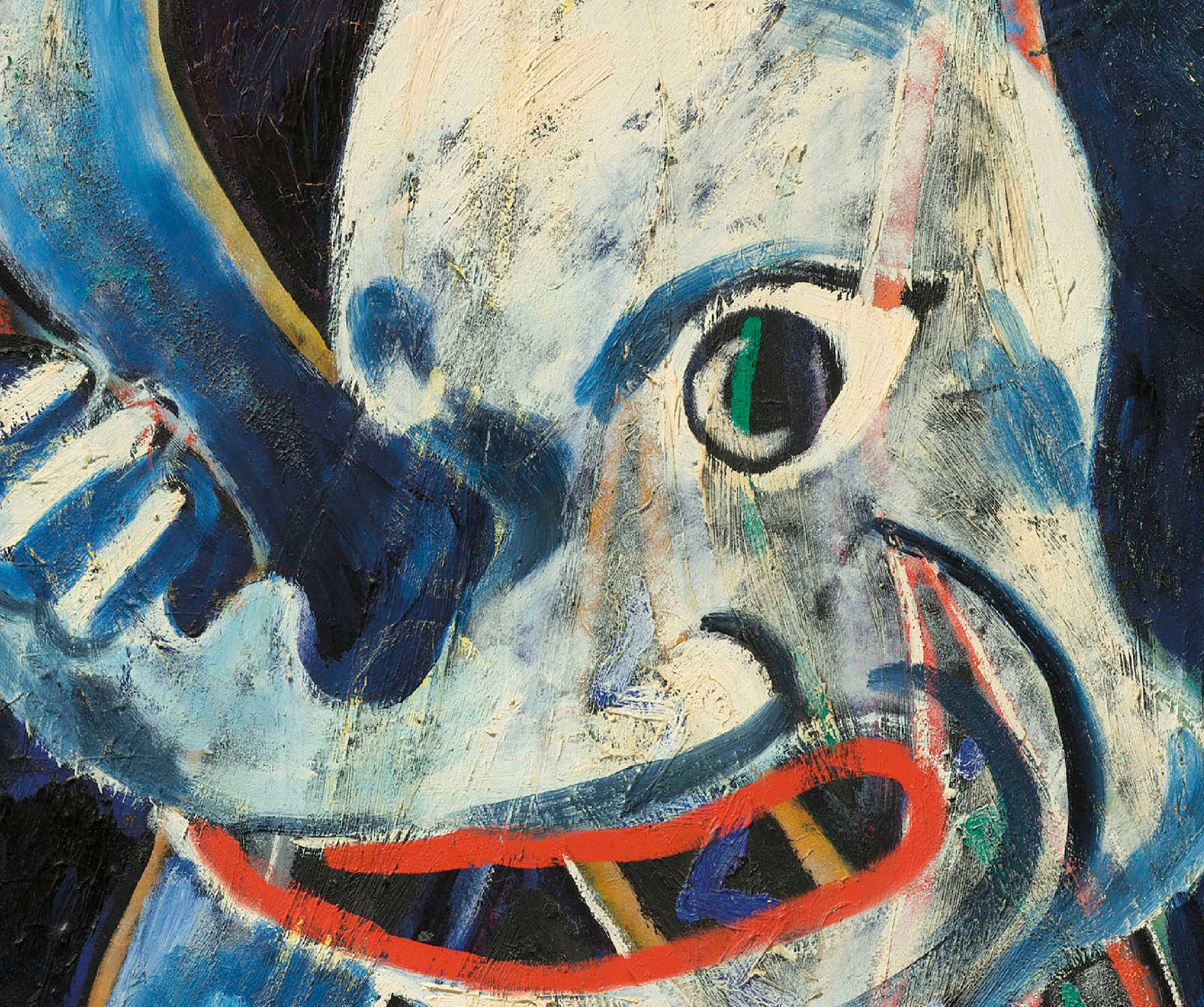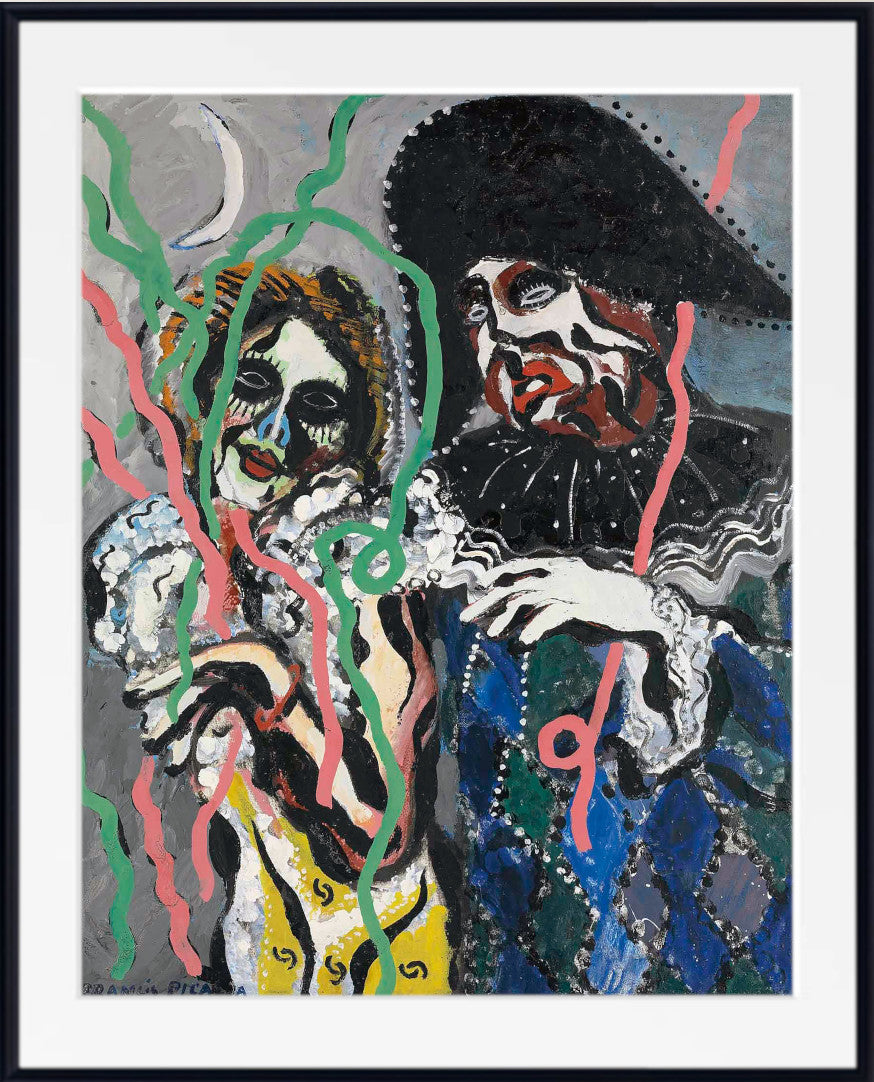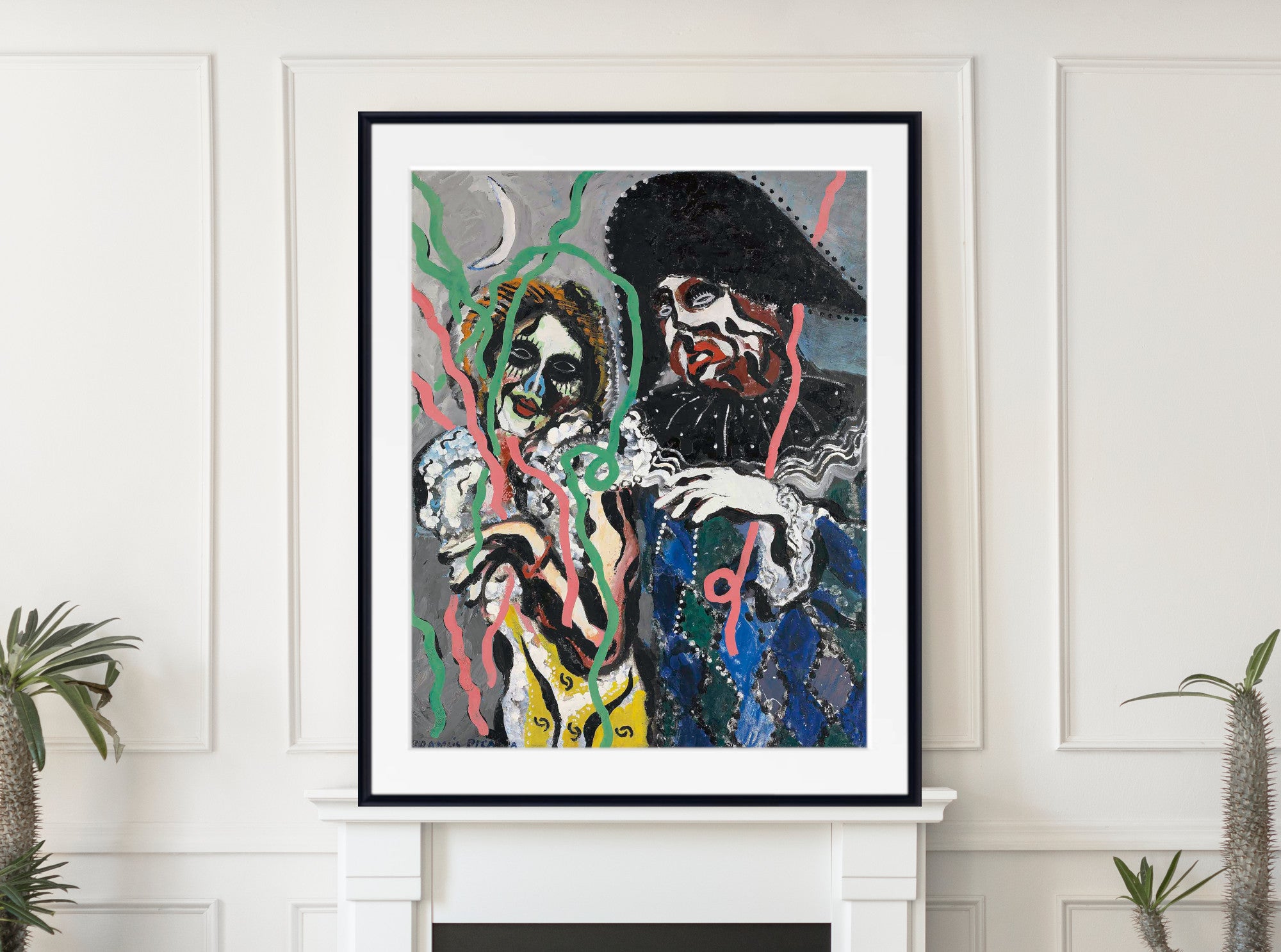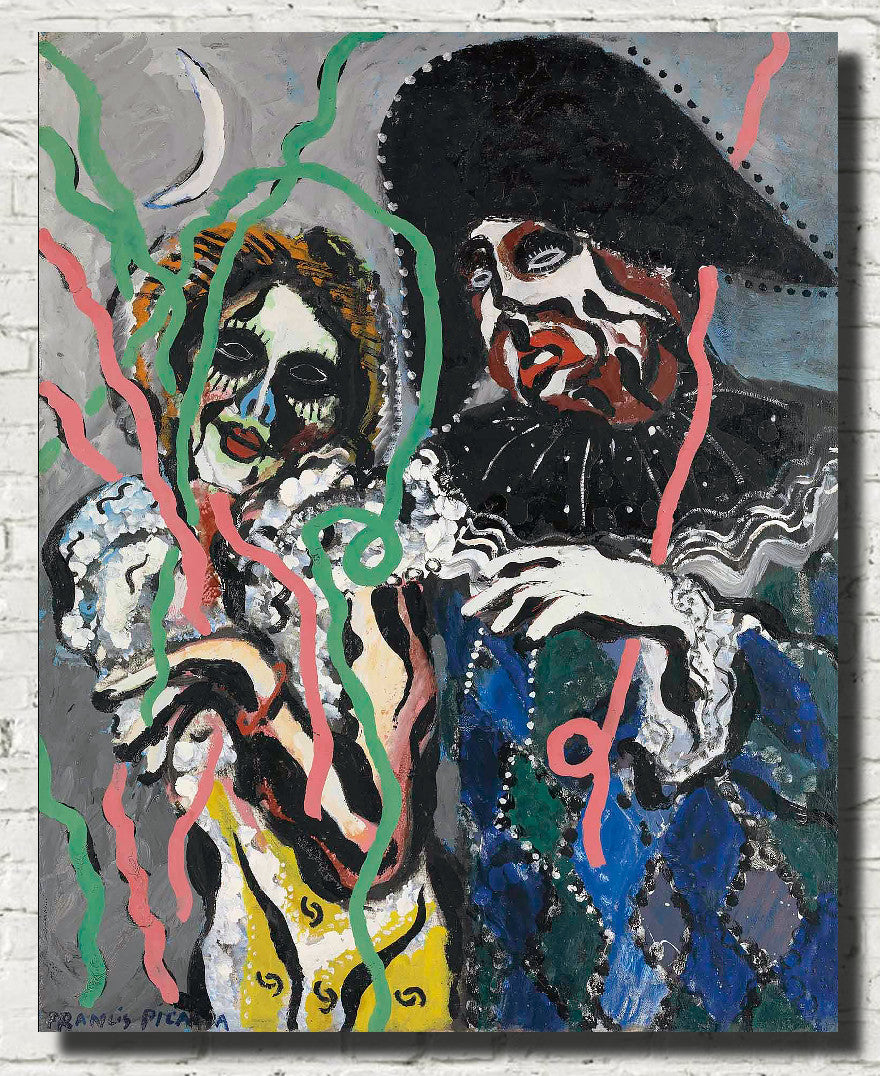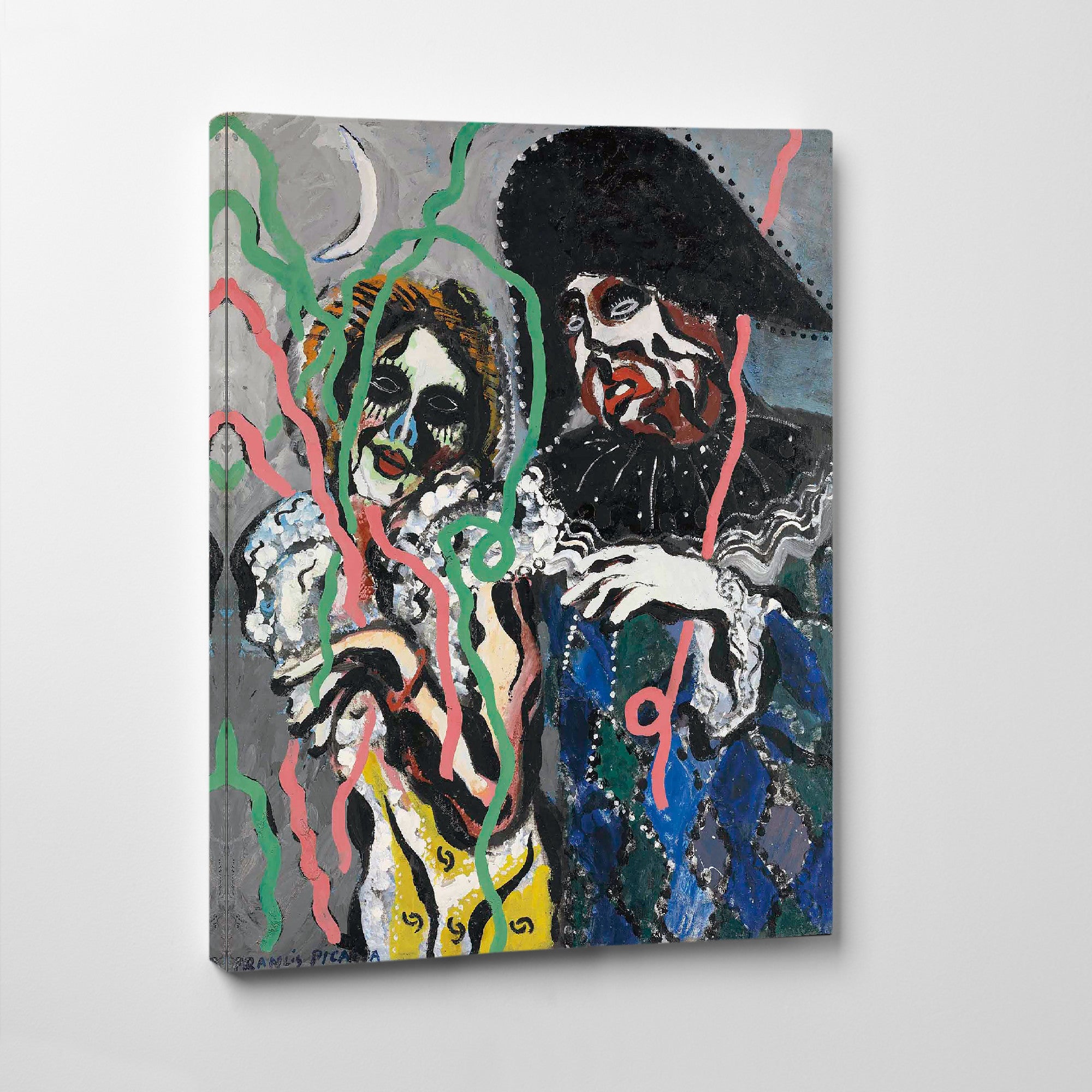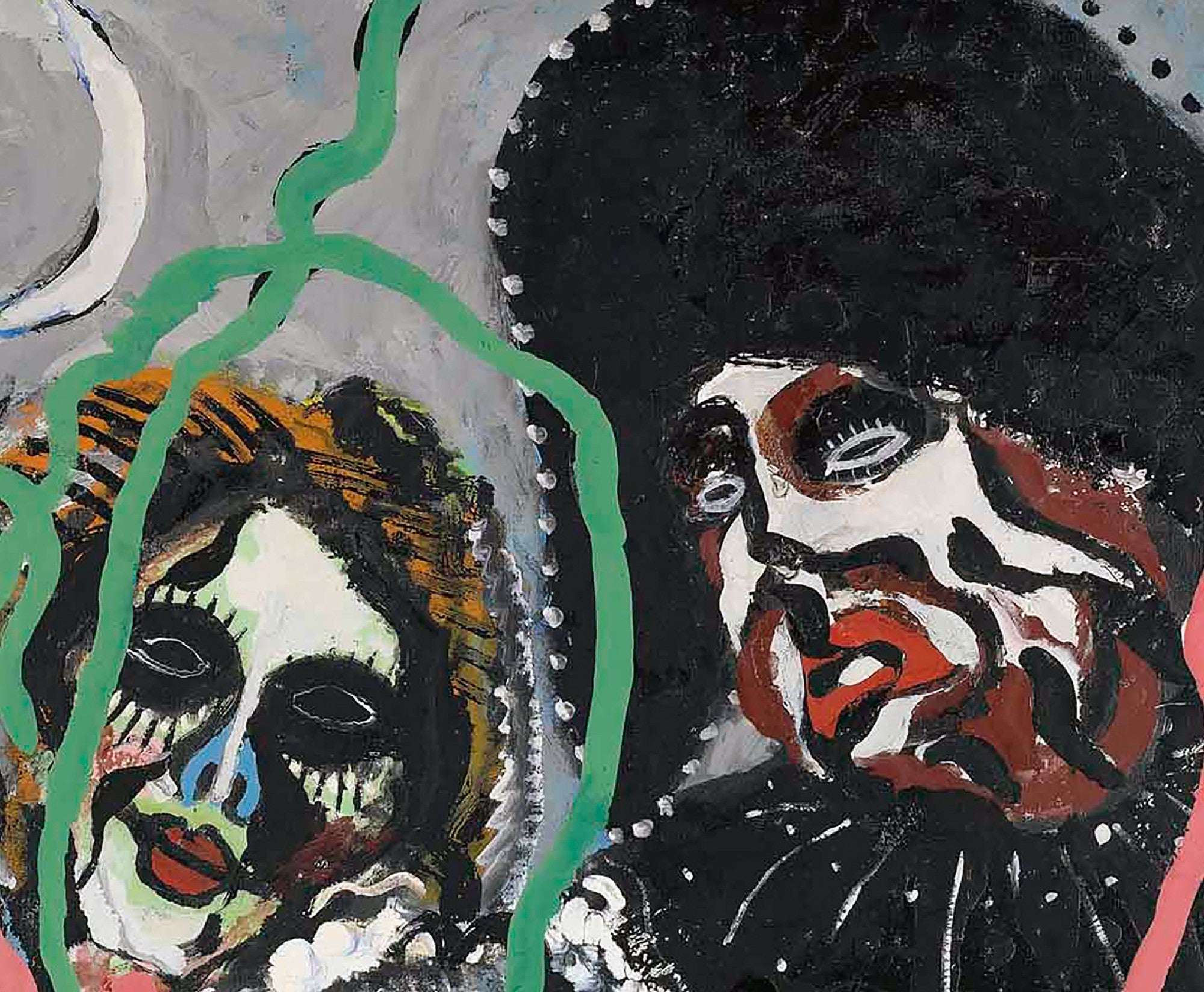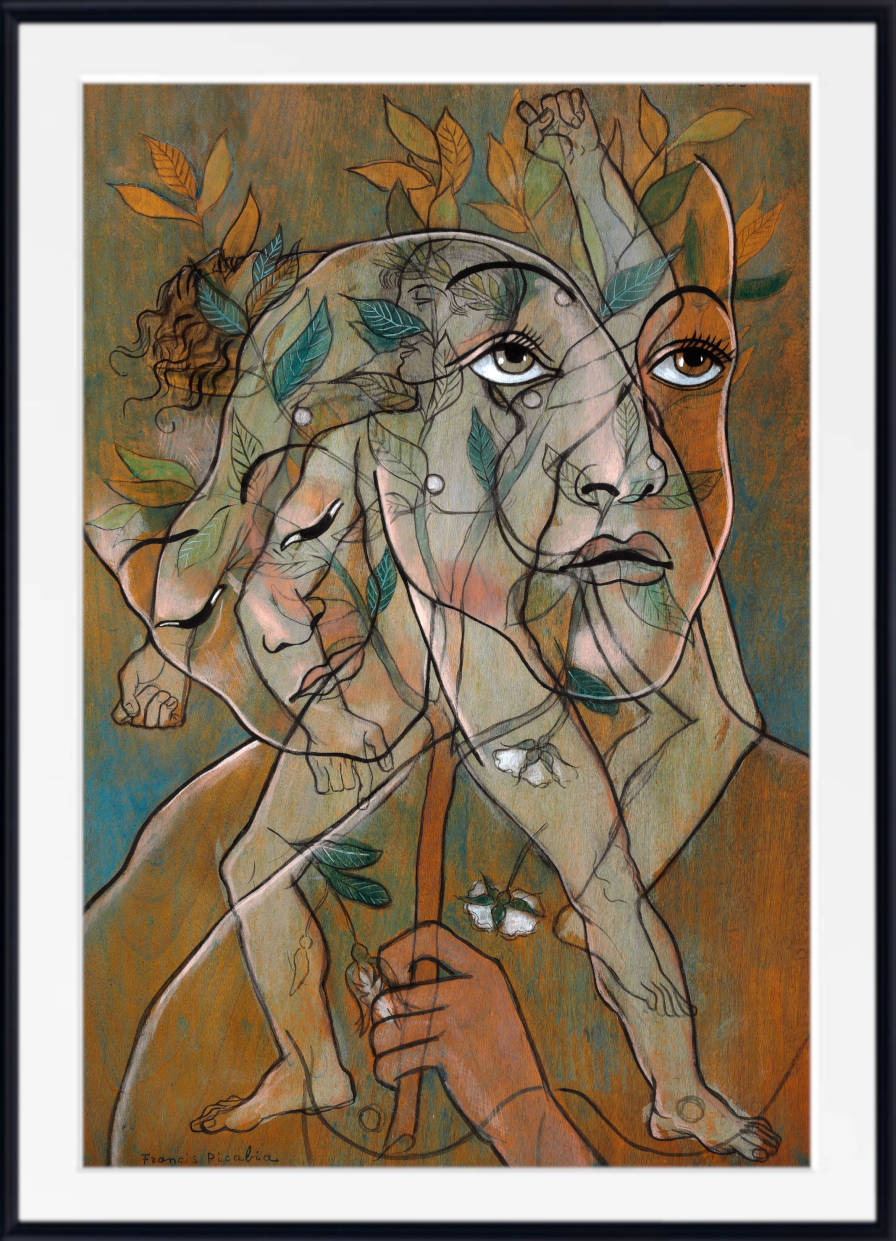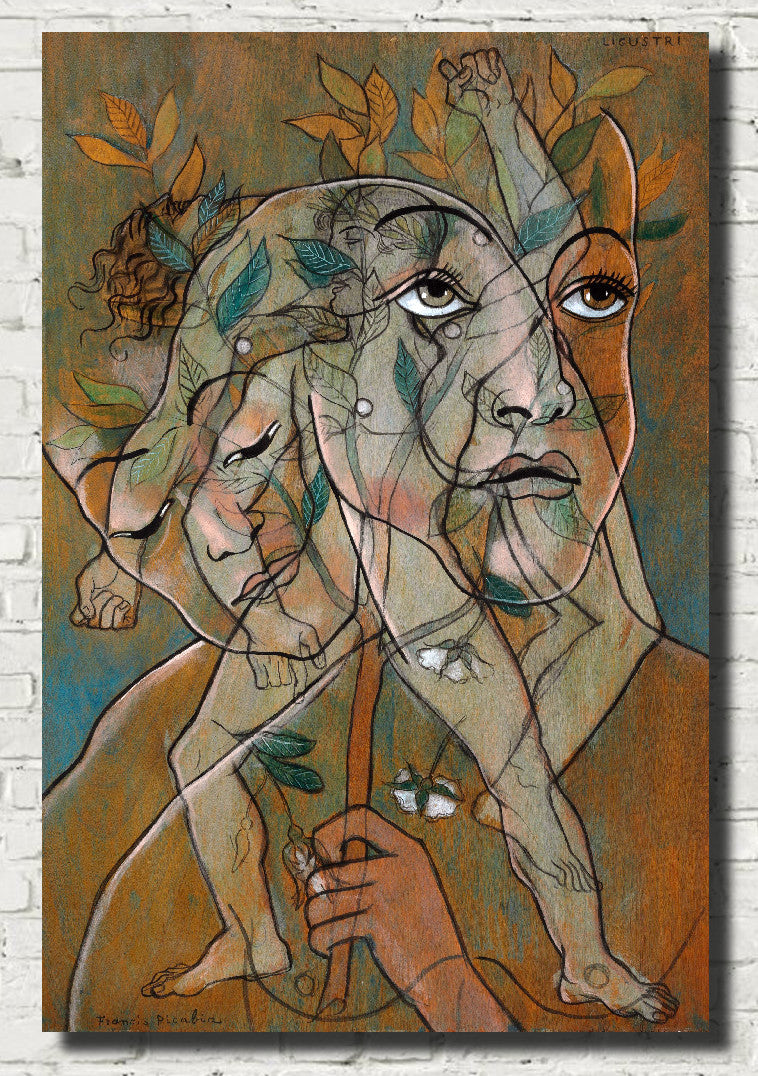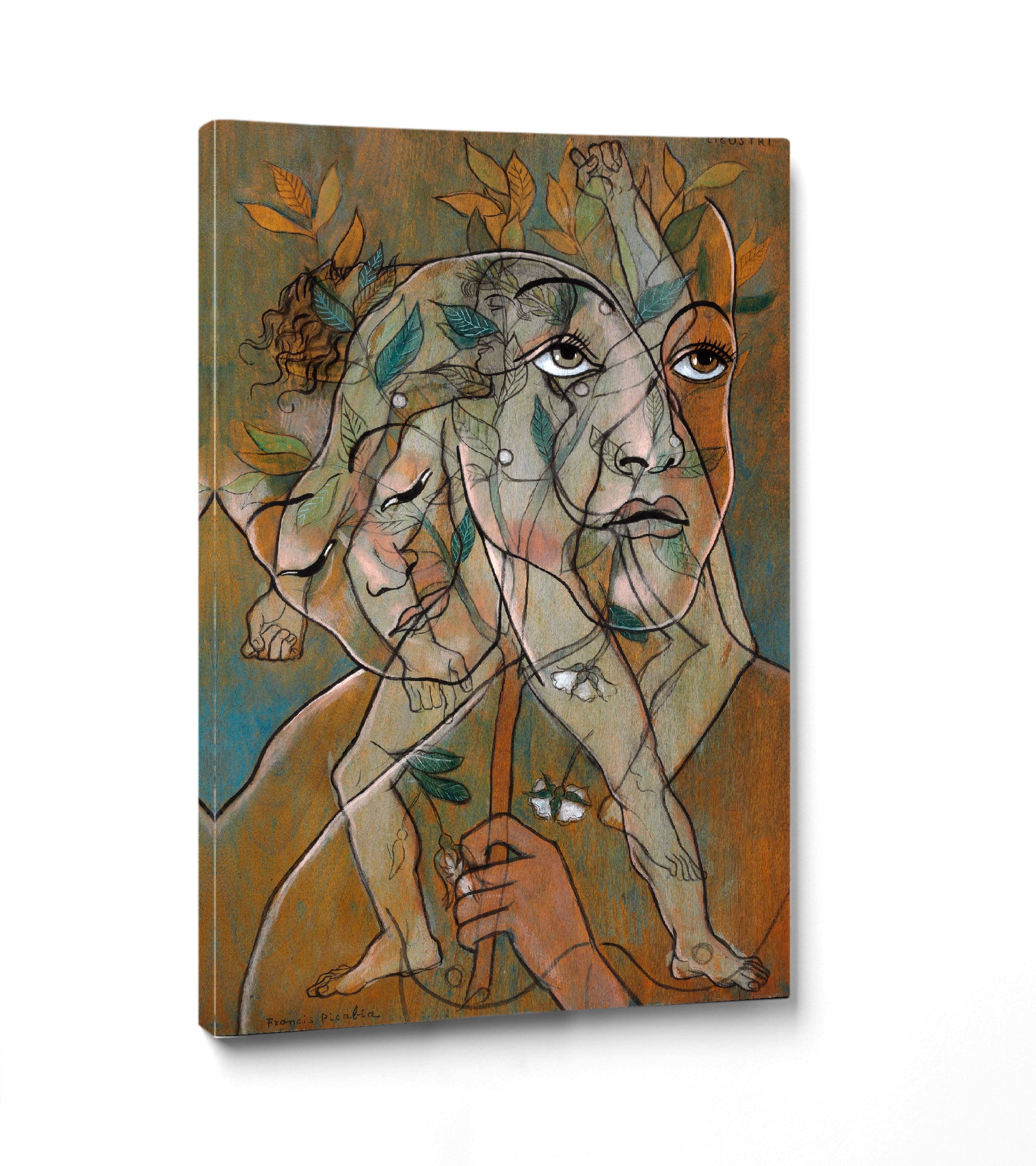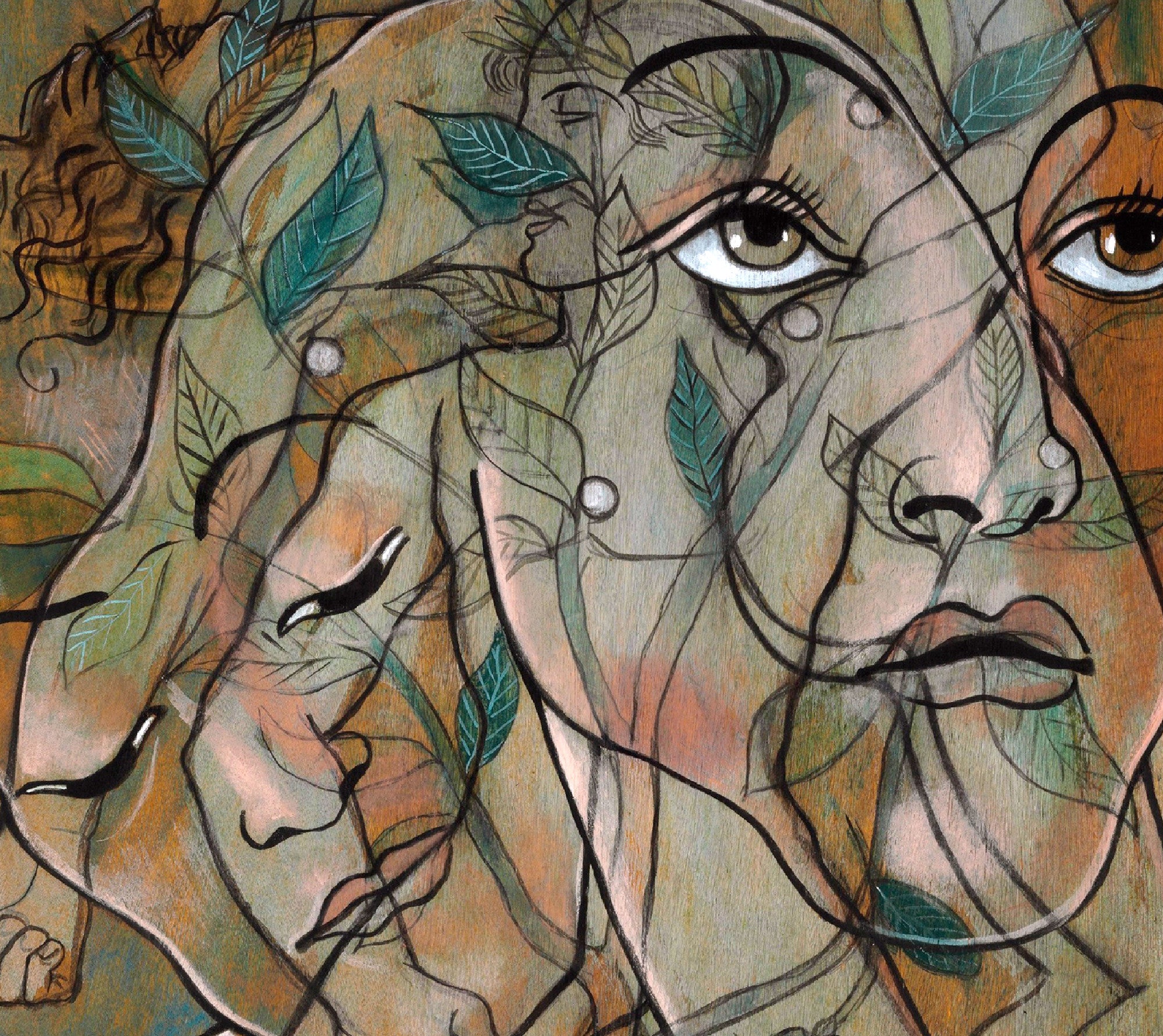Visage de Femme, Francis Picabia
BUY WITH CONFIDENCE
Couldn't load pickup availability
Sans titre (Visage de femme) belongs to a series of realist, figurative paintings of women that Francis Picabia commenced at the beginning of the 1940s whilst living in the South of France. Often derived from photographs and images found in fashion magazines, nightclub advertisements, as well as picture postcards, these images of women are rendered in a “popular”realist style, which allowed Picabia to clearly imitate and replicate the original source image. This series marks one of the last great stylistic shifts in his richly diverse and varied oeuvre. An artist who continuously broke artistic tradition, Picabia maintained a defiantly individual stance throughout his career, refusing to conform to prevailing styles of art and continuously inverting elitist rules of taste. Rendering ubiquitous, popular imagery in rich, deeply coloured oil paint, in Sans titre (Visage de femme), Picabia elevated kitsch to the realm of “high” art, disregarding the accepted notions of aesthetic sensibility. Indeed, it is this iconoclastic tendency and bold disregard for convention that made Sans titre (Visage de femme) and this series of paintings so influential for future generations of artists. These works are often considered to be among the very first “postmodern” pictures.
Against a black background, the face of a woman emerges, her fingers resting delicately on her chin, drawing attention to her softly pouted red lips and demurely downturned eyes. Her frozen pose and illuminated face is immediately reminiscent of the headshots and portraits of women that adorned the covers of fashion magazines and beauty advertisements. In appropriating mass-produced images, Picabia was revisiting a technique that he had used in different ways throughout his career, in 1921, several years before the present work was painted, Picabia stated his artistic process: “The painter makes a choice, then imitates it; the deformation of this choice constitutes art” (quoted in C. Boulbès, “Francis Picabia, Delicious Monsters: Painting, Criticism, History” in “Dear Painter, paint me...” Painting the Figure since late Picabia, exh. cat., Musée national d’art moderne, Centre Georges Pompidou, Paris, 2002, p. 31). With a direct and unabashed appropriation of popular culture and kitsch imagery, Picabia irreverently questioned the ingrained distinctions between “high” and “low” art that existed within the avant-garde, breaking away from the traditions of modern painting. This concept would become central to artists such as Robert Rauschenberg and Jasper Johns, as well as Pop artists such as Andy Warhol and Roy Lichtenstein amalgamating popular imagery into their art. Indeed, this series can be seen as a precursor to the seminal artistic movement, illustrating the radical and influential nature of these works.
Alongside Sans titre (Visage de femme) and other portraits of women, Picabia was also appropriating erotic nudes and pin-up girls from porn magazines. In contrast to these starkly erotic paintings of nude women, the woman in Sans titre (Visage de femme) radiates a more subtle yet no less sexual allure. Throughout his career, the female figure had played a central role in Picabia’s art. From his Dadaist depictions of sexualized and anthropomorphic mechanical forms, to his gruesomely rendered Monster series of the 1920s, that pictured cavorting couples, and the later Transparencies of the 1930s, which depicted classical female figures, Picabia used the depiction of women and particularly the inference of eroticism, to confound and shock the viewer, disrupting the accepted notions of taste and mocking the pretensions of the Parisian avant-garde.
In contrast to Picabia’s Monster or Transparencies series, in which the artist, in different ways, distorted and played with images of the female figure, creating layered or textured painterly surfaces, in Sans titre (Visage de femme), the smoothly painted surface emulates the photographic quality of the image from which it was derived. Picabia imitated the glossiness of the printed-paper on which the original photographs would have been found through the bright highlights on the model’s forehead and hand. The realistic quality of these paintings bewildered and shocked critics who had become accustomed to the dominant tendency towards abstraction at this time; Michel Perrin, a friend of the artist at this time recalled, “The pictures Picabia was painting in March 1942 were so precise, with colours so true to life, that the acerbic critics exclaimed ‘But this is photography!’” (quoted in M.L. Borràs, Picabia, London, 1985, p. 423). In taking a mass-produced image and carefully rendering it with precise artistic detail, Picabia played with the concepts of artistic authorship and individual skill that were central to modern painting and in so doing, created a subtle blend of imitation and parody. Sans titre (Visage de femme) exemplifies not only Picabia’s plurality of styles, but demonstrates the artist’s unremitting predilection for overturning conventions of the avant-garde and in so doing, pursuing new and radical approaches to art and art making, which paved the way for future generations of artists.
Francis Picabia (22 January 1879 – 30 November 1953) was a French avant-garde painter, poet and typographist. After experimenting with Impressionism and Pointillism, Picabia became associated with Cubism. His highly abstract planar compositions were colourful and rich in contrasts. He was one of the early major figures of the Dada movement in the United States and in France. He was later briefly associated with Surrealism, but would soon turn his back on the art establishment.


All prints are made using archival art stocks and UV pigment inks to give up to 200 years life. Prints are sold unframed and unmounted.
All orders for unframed fine art prints and original paintings are dispatched within 2 working days of receipt of payment.
Orders for custom framed prints are dispatched within 4 working days.
All orders are fully tracked from dispatch to delivery at your home or business.
All print and original painting orders are fully insured against loss or damage in transit. We refund or replace any damaged or lost orders.
Buy with confidence - read what our satisfied customers have to say - Reviews
Fine art papers are printed without any additional white border Please let us know at the time of ordering if you would like a small additional white border.
Rolled canvas options have an additional white border of approximately 2.5 inches (7cm) on all 4 sides to aid stretching.
Ready to hang canvas panels are stretched on 1.5 inch deep solid pine frames from sustainable forestry sources. The image is mirrored on all 4 sides to give an aesthetically pleasing finish.
Why not have us gift wrap your order and attach a personalised message to the recipient. Available for all orders. Each order is hand wrapped in high quality gift wrap with meatllic ribbon and bow. Your personalised message is printed on a card which is included with your order.
Have your hand wrapped gift delivered directly to the recipient.
Full tracking and insurance included with every order.
Please note design may vary depending upon availability
Just purchase the gift wrap option HERE
We have a wide range of frames in standard sizes and we also make custom size frames.
To order a framed print:
1. select the print size you would like along with the print materials (matte paper, fine art paper).
2. Add your print choice to the basket.
3. Choose from our range of frames
4. Select the same size as the print you have added to your basket. If the frame size you want is not listed please contact us
5. Choose from the mount or no-mount option
6. Add your frame choice to the basket
7. Proceed to checkout.
Why Choose GalleryThane?
- Printed and framed in-house
- Free UK delivery
- Fast international delivery
- Tracking and insurance included in every order
- Fast 1-3 day dispatch
- Gift wrapping service available
- Gallery quality materials
- Sustainable, eco-friendly packaging
- Great customer support
What makes our Prints and Canvas Panels so special

Latest Giclee Printing Technology
We have invested in the latest wide format print technology to produce museum quality giclee prints utilising the highest quality pigment inks to give outstanding colour reproduction.

Museum Quality Archival Fine Art Papers
We print on the finest quality fine art papers with textured, smooth and lustre finishes for prints which last a lifetime.
From aceo miniatures to 40x80 inch large format, every print has our lifetime quality guaranteee.

Solid Wood Frames, Cotton Canvas
All of the wood for our canvas panels and frames is responsibly sourced from manages forests. Our cotton canvas is completely seedless for the highest quality reproduction possible.

